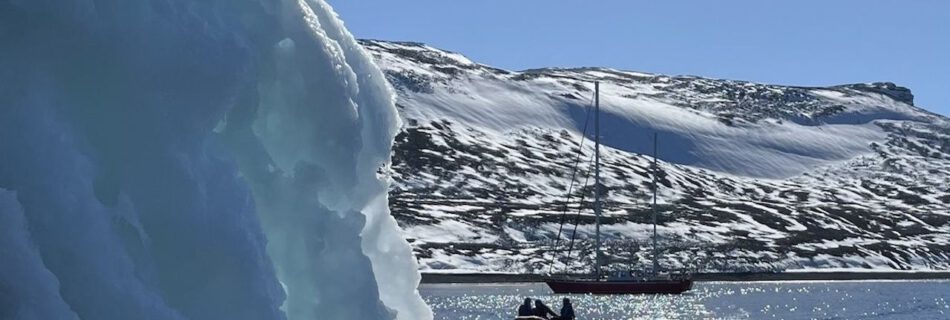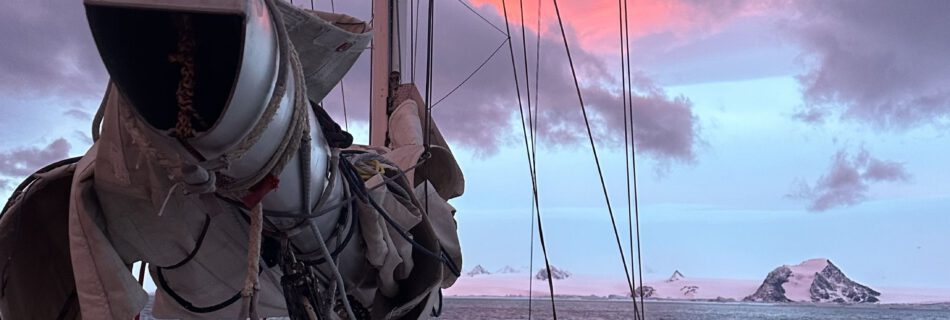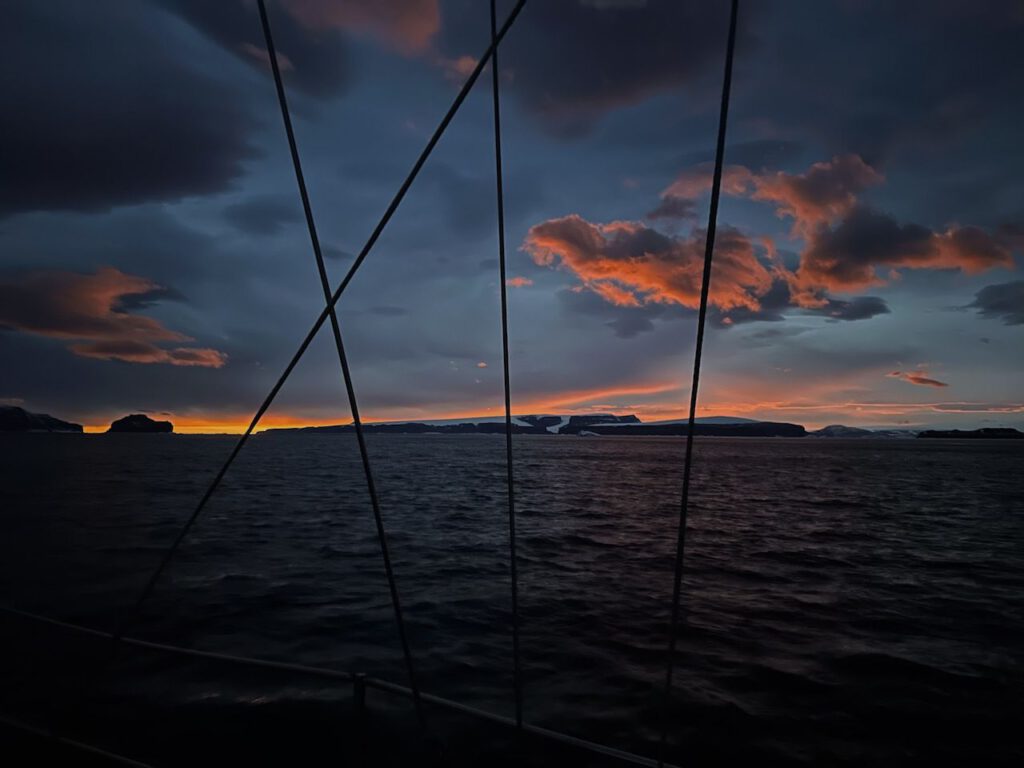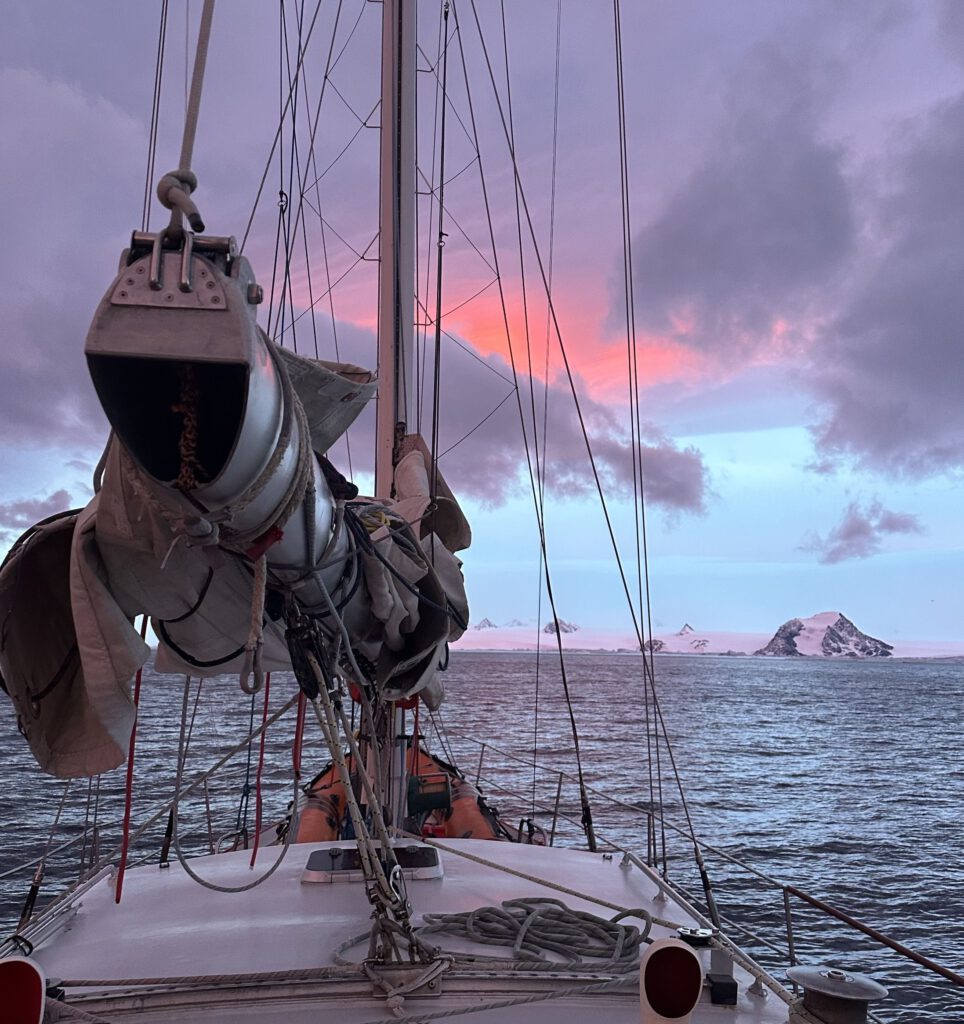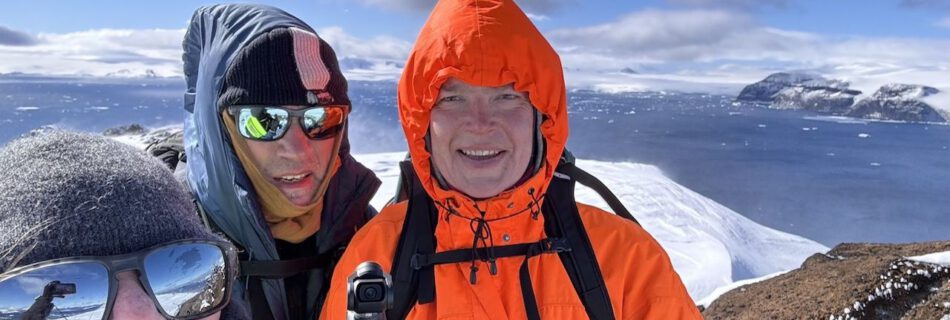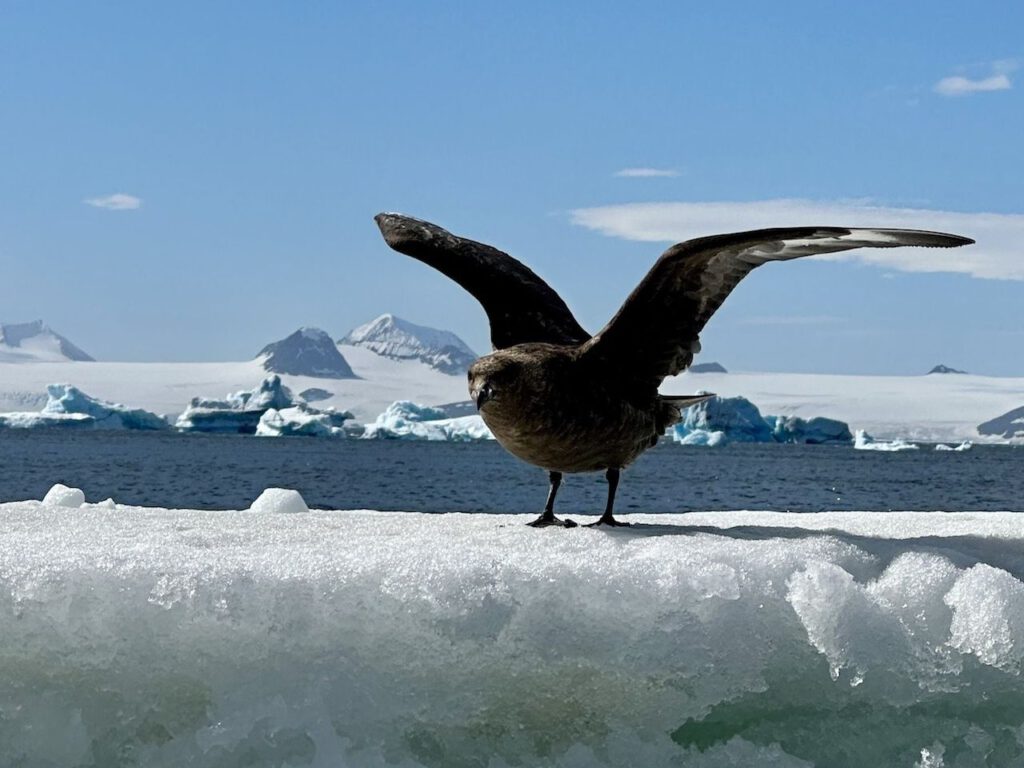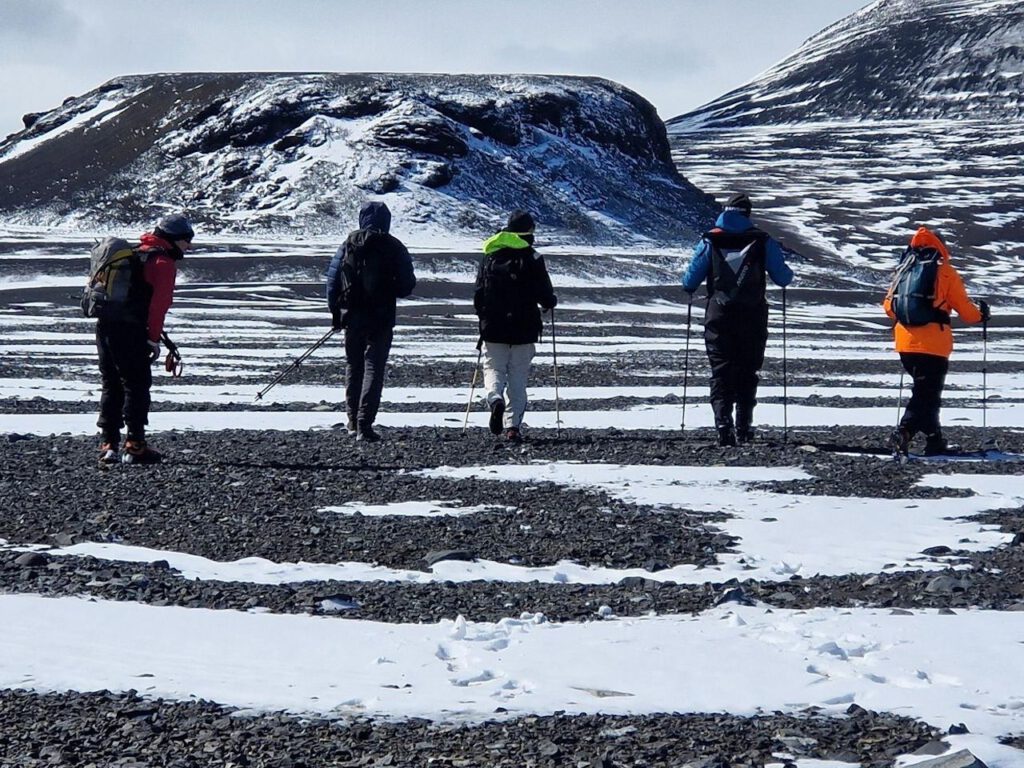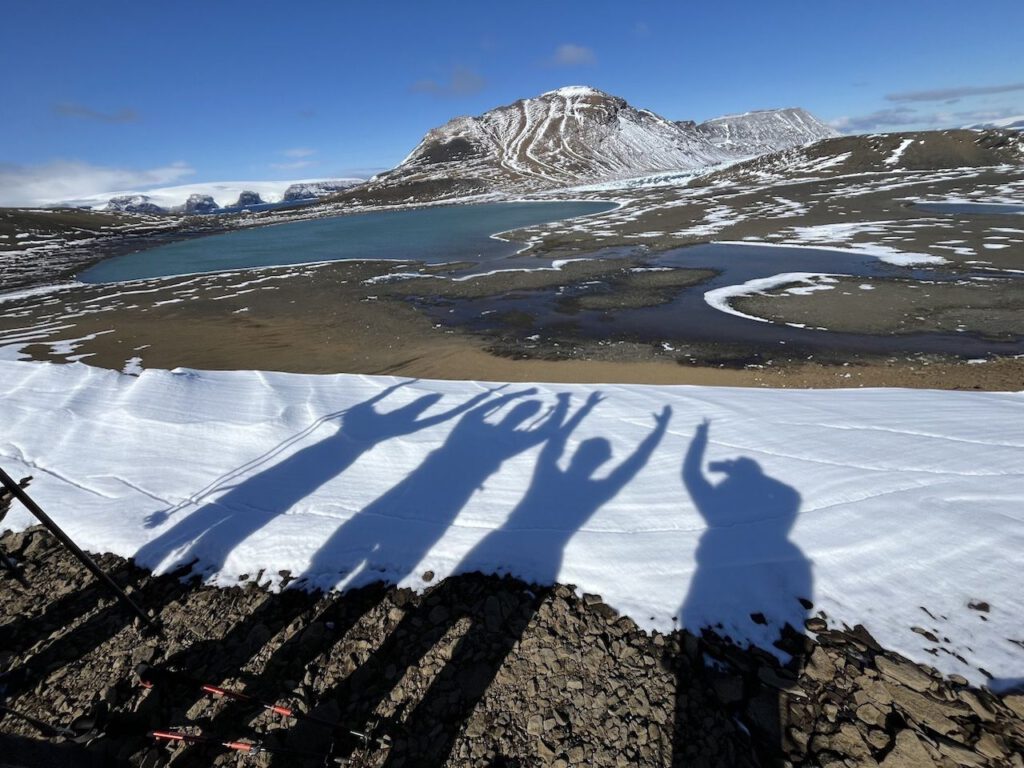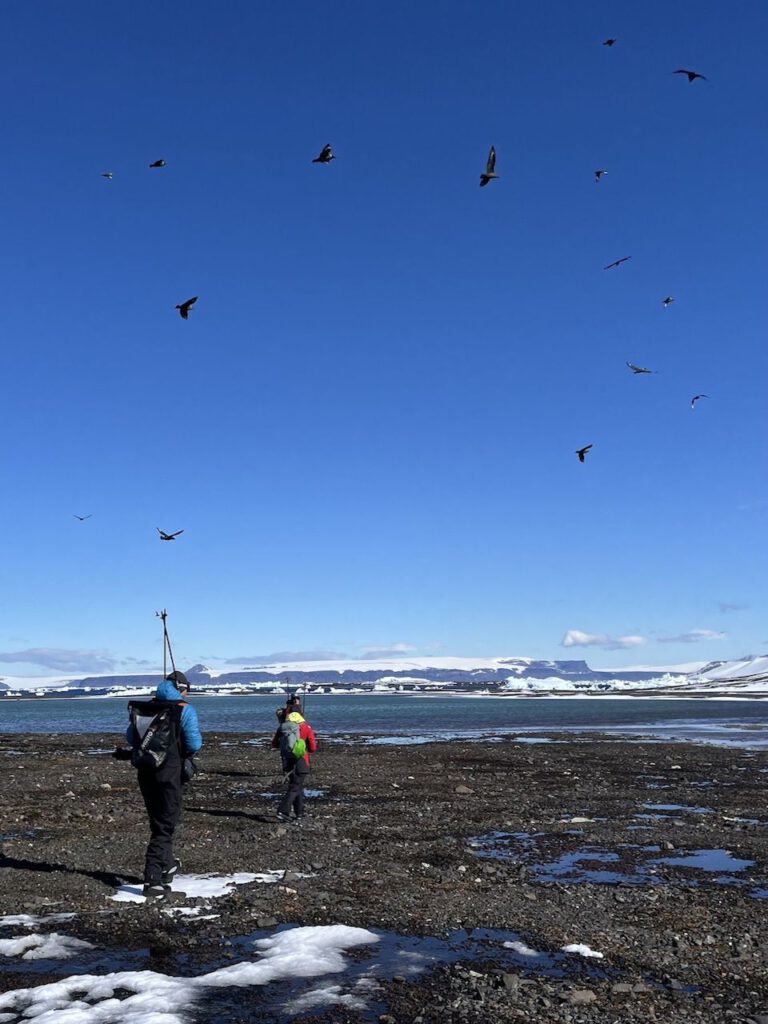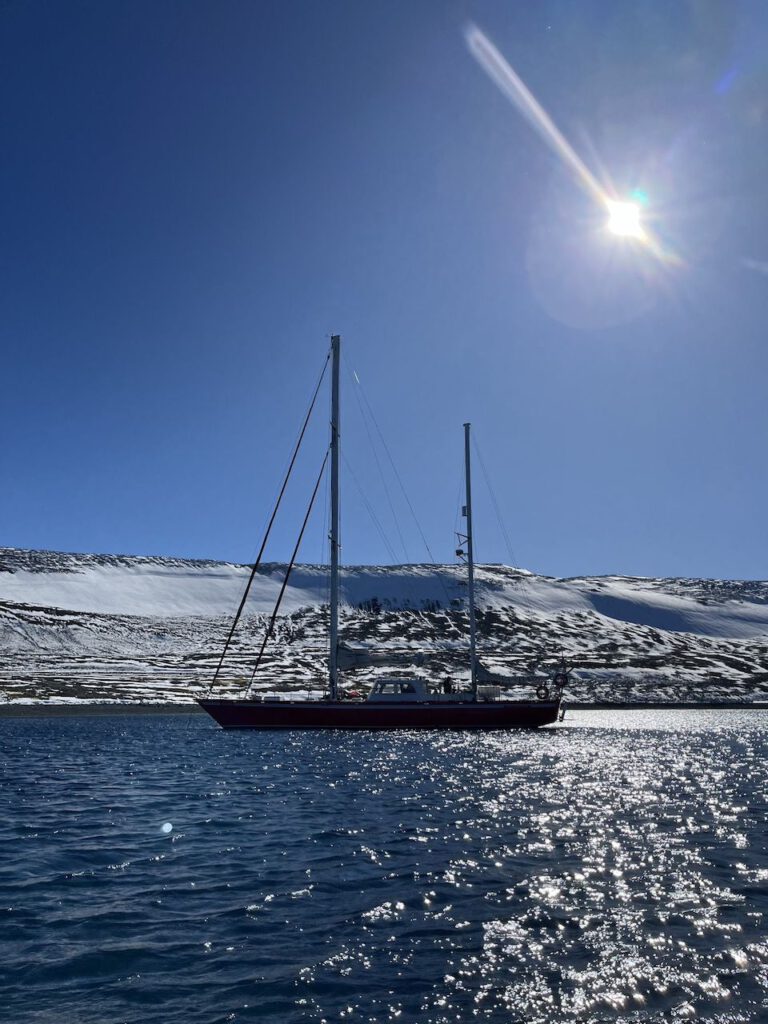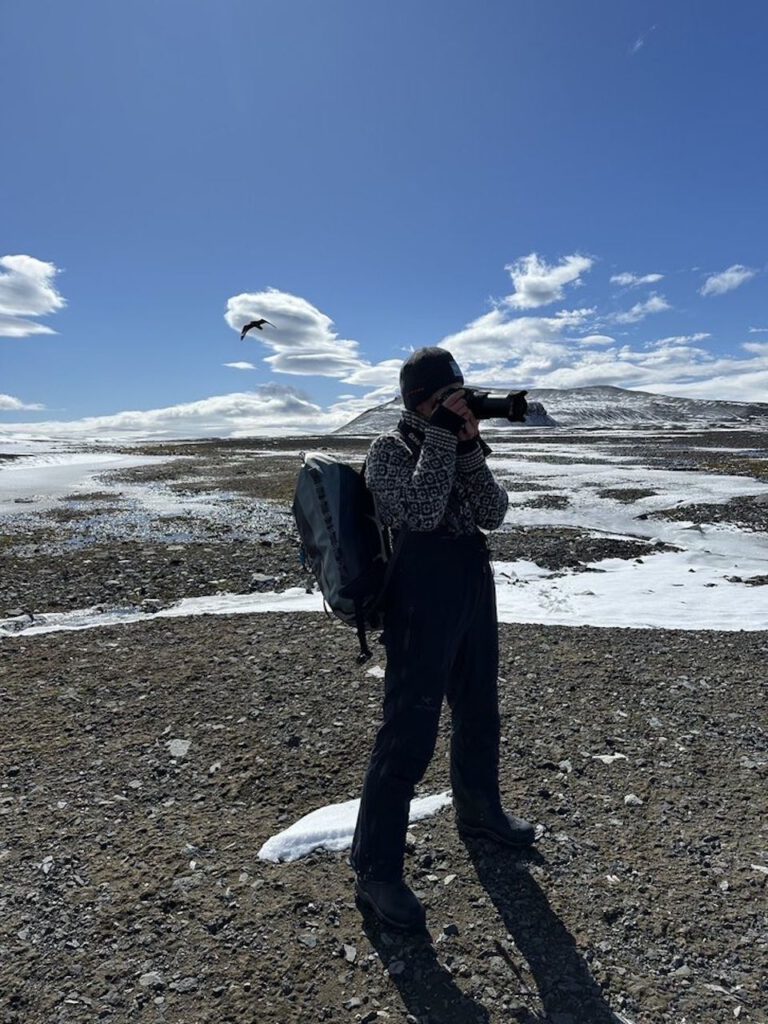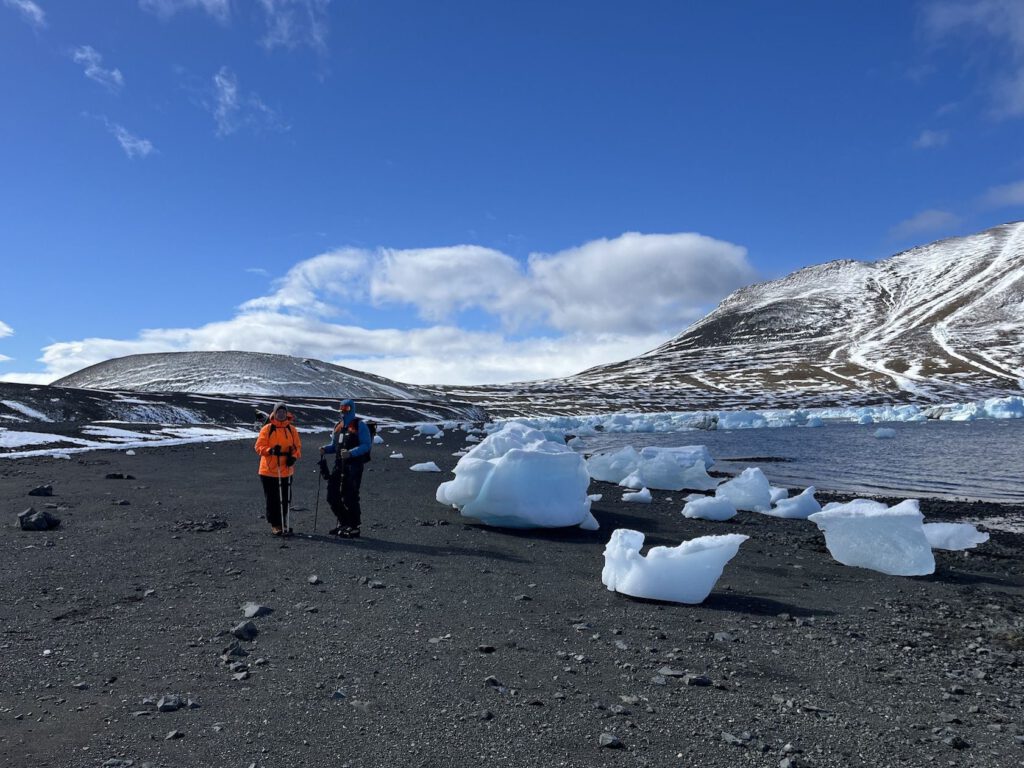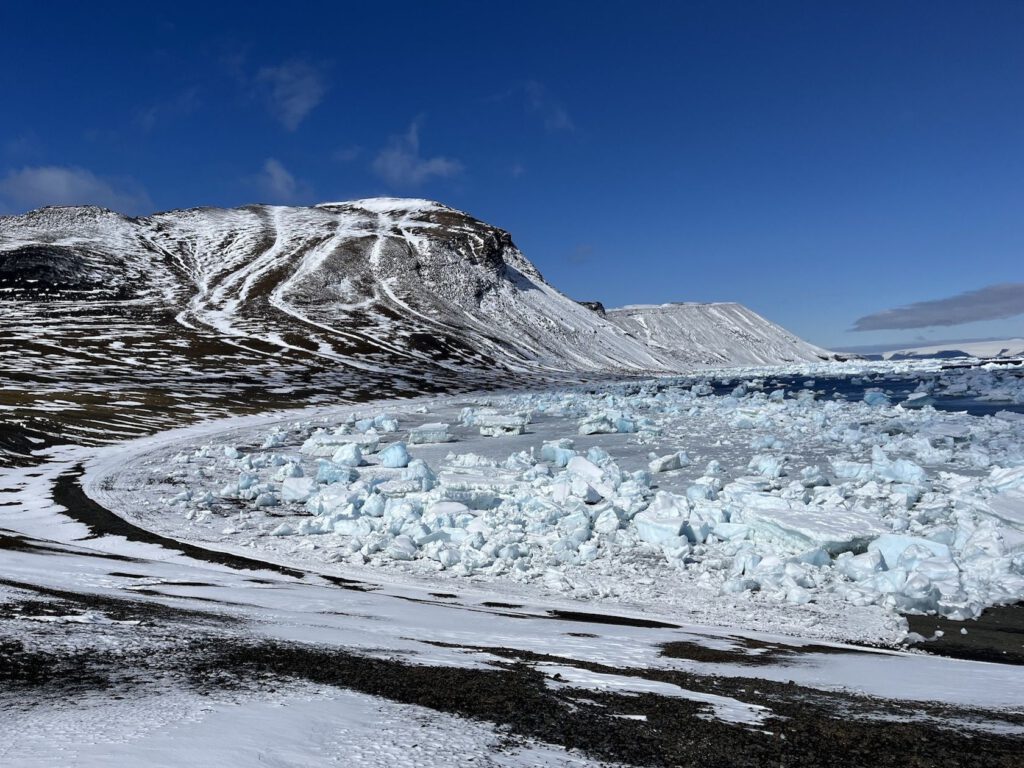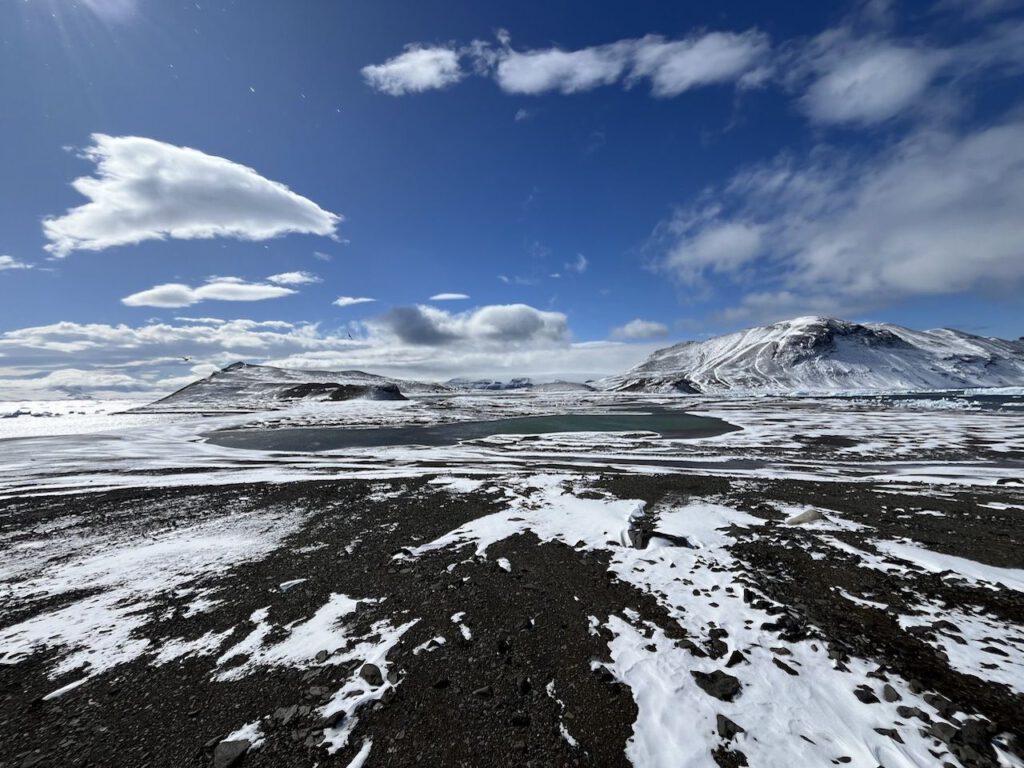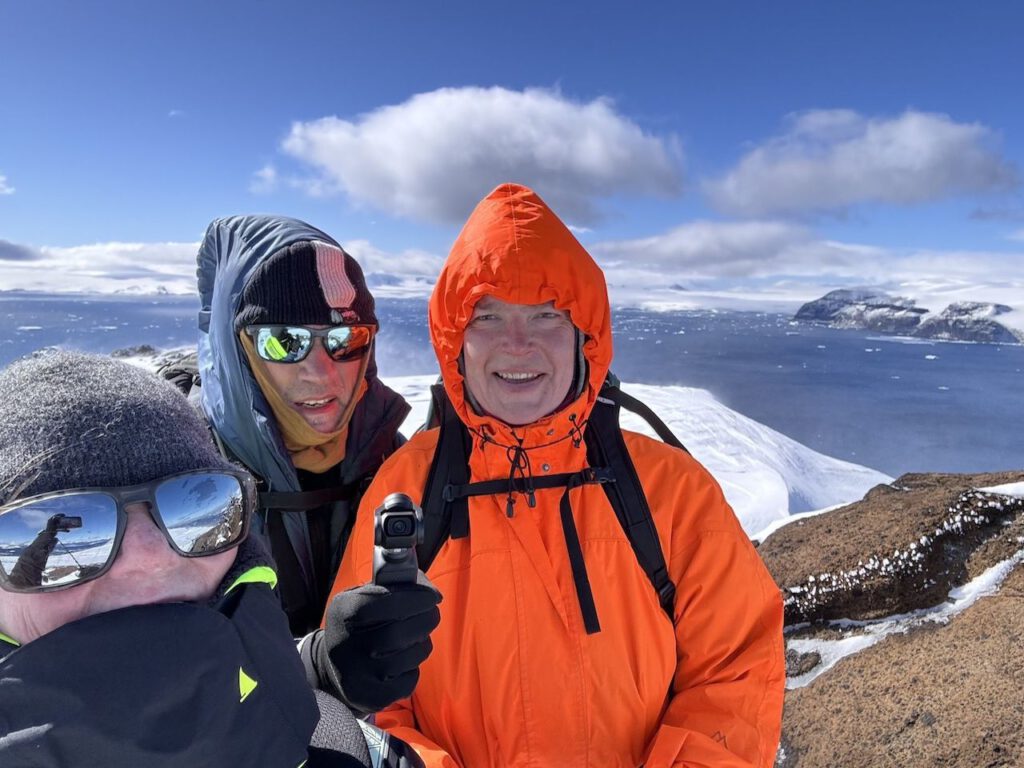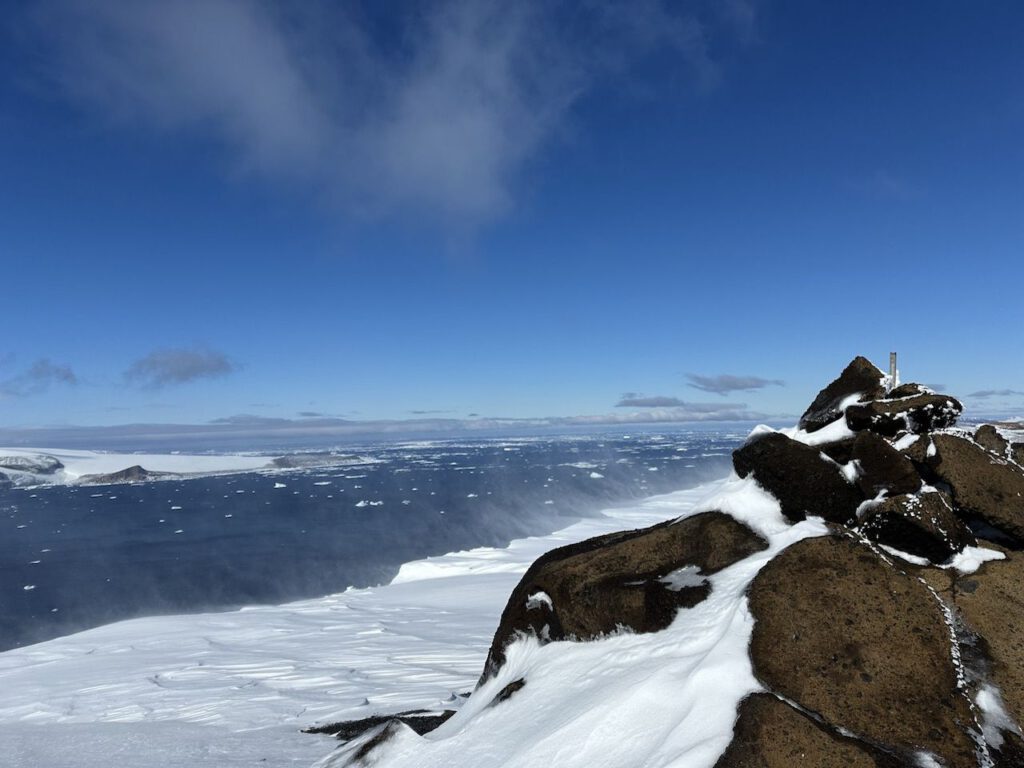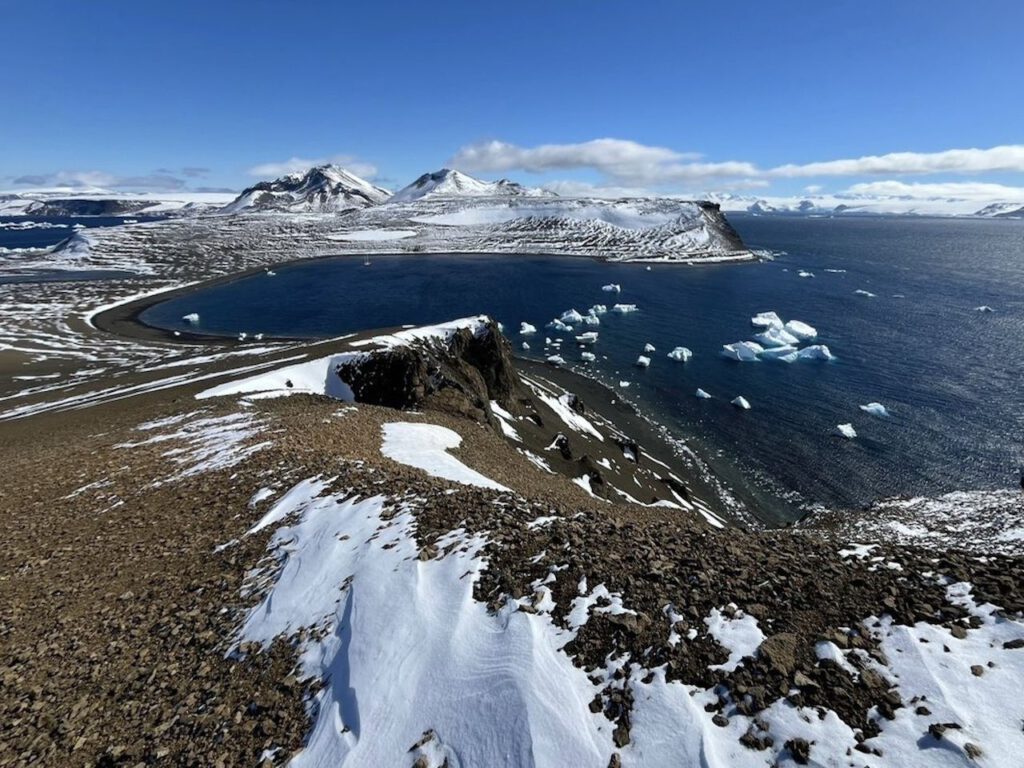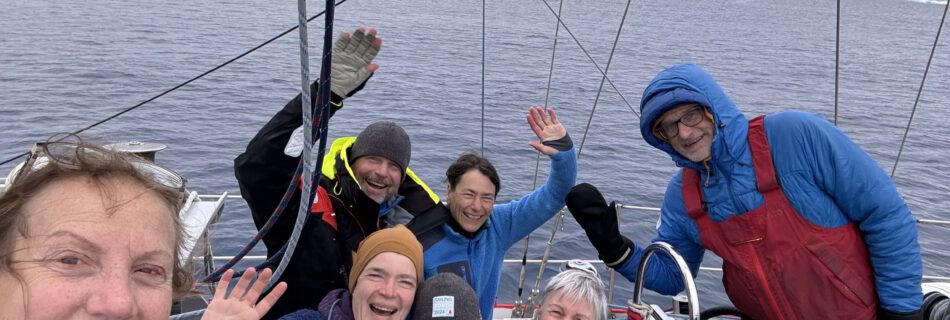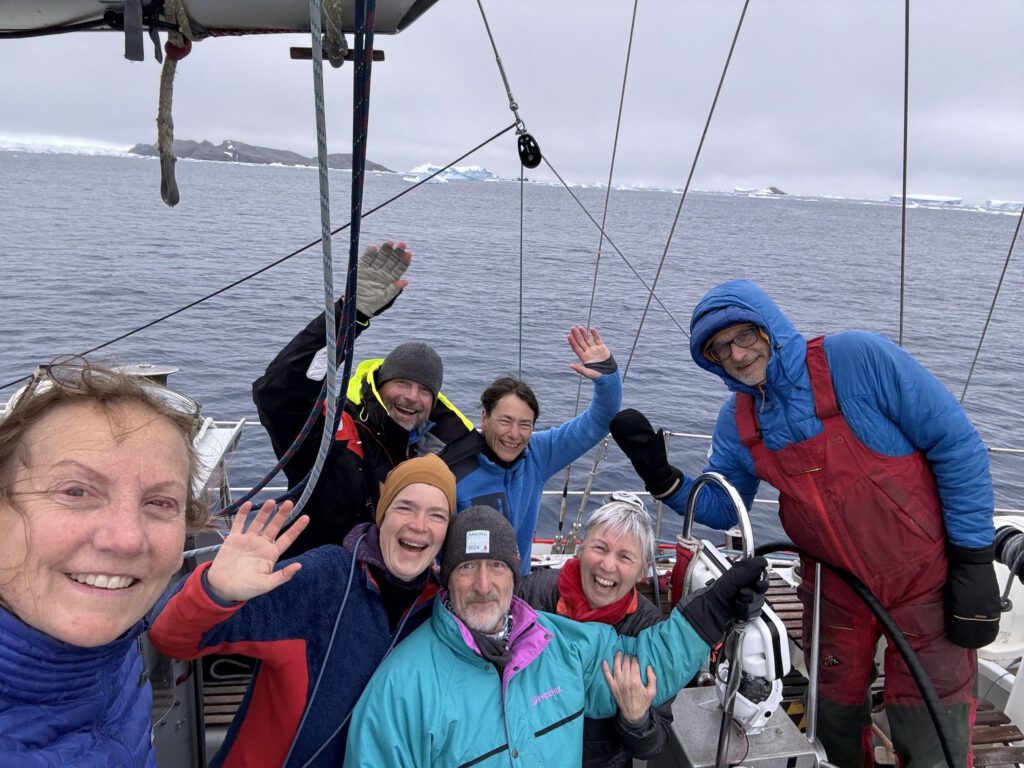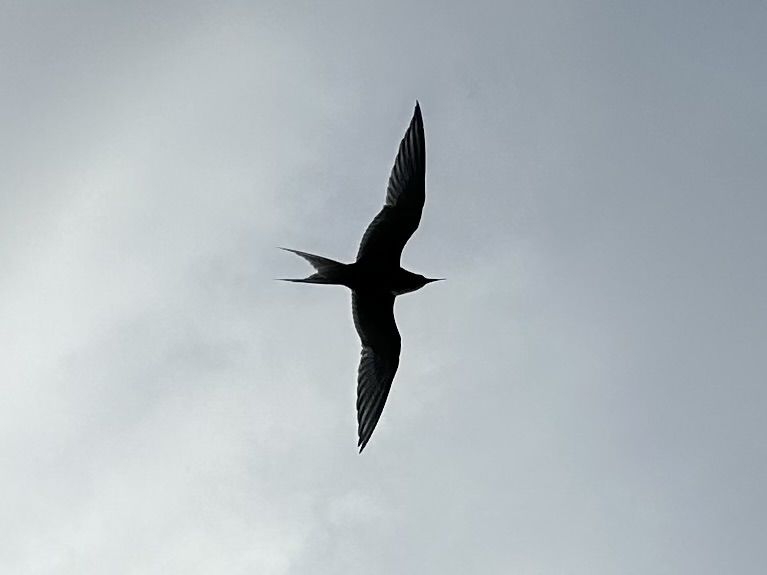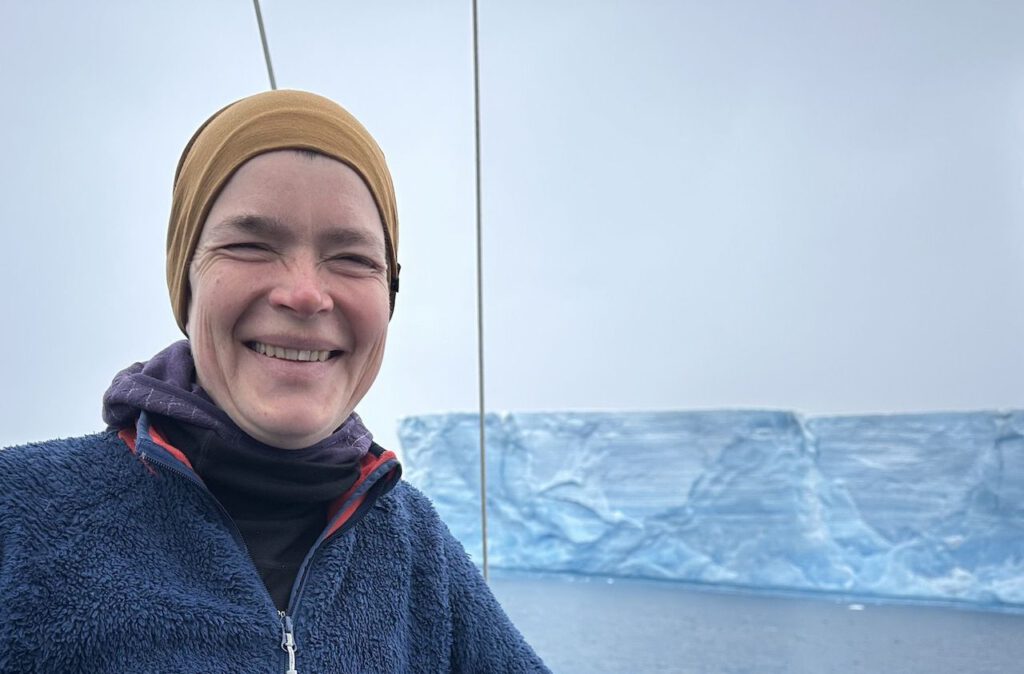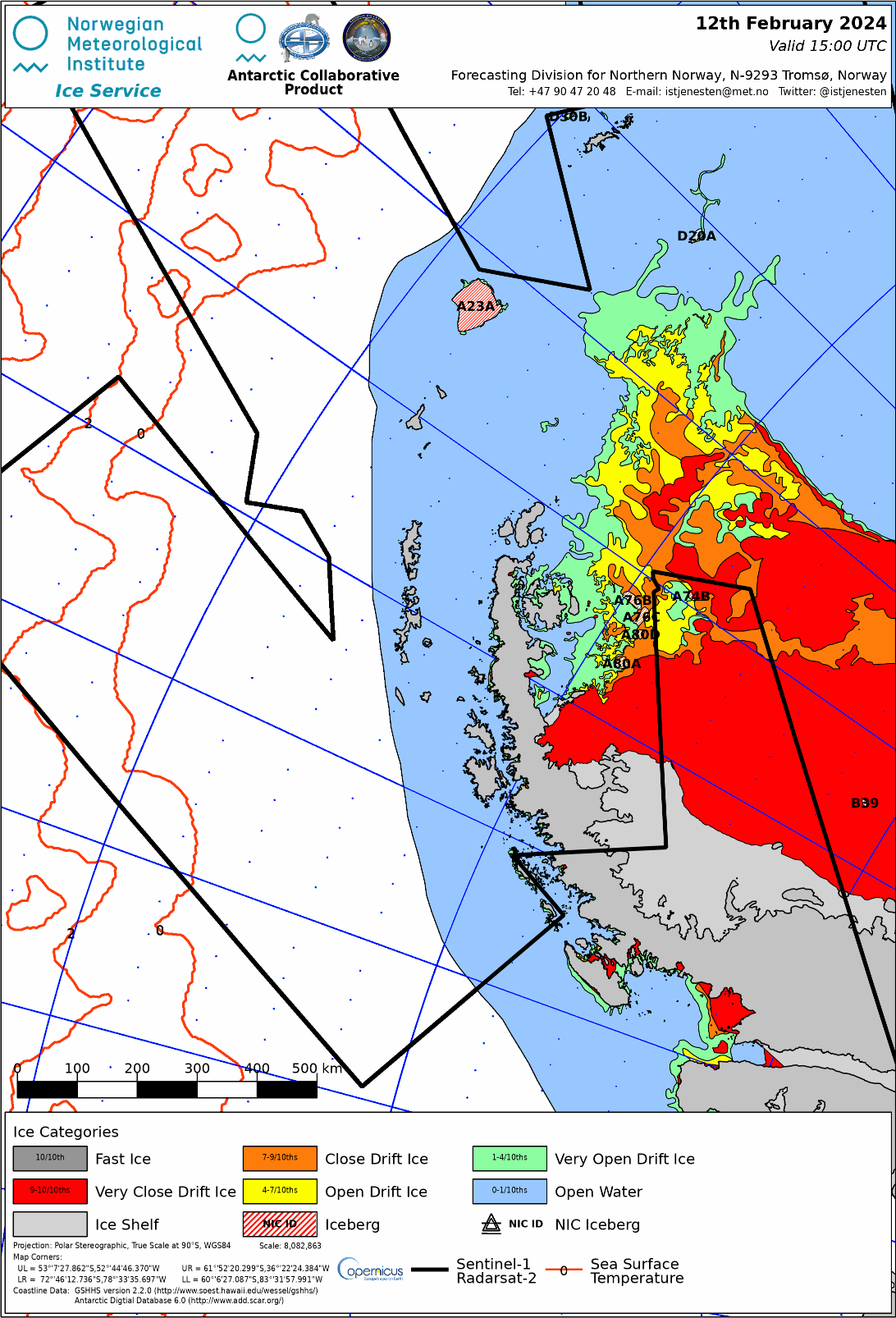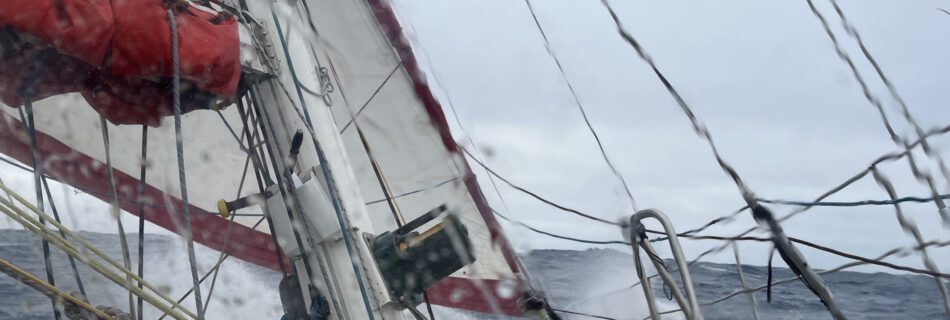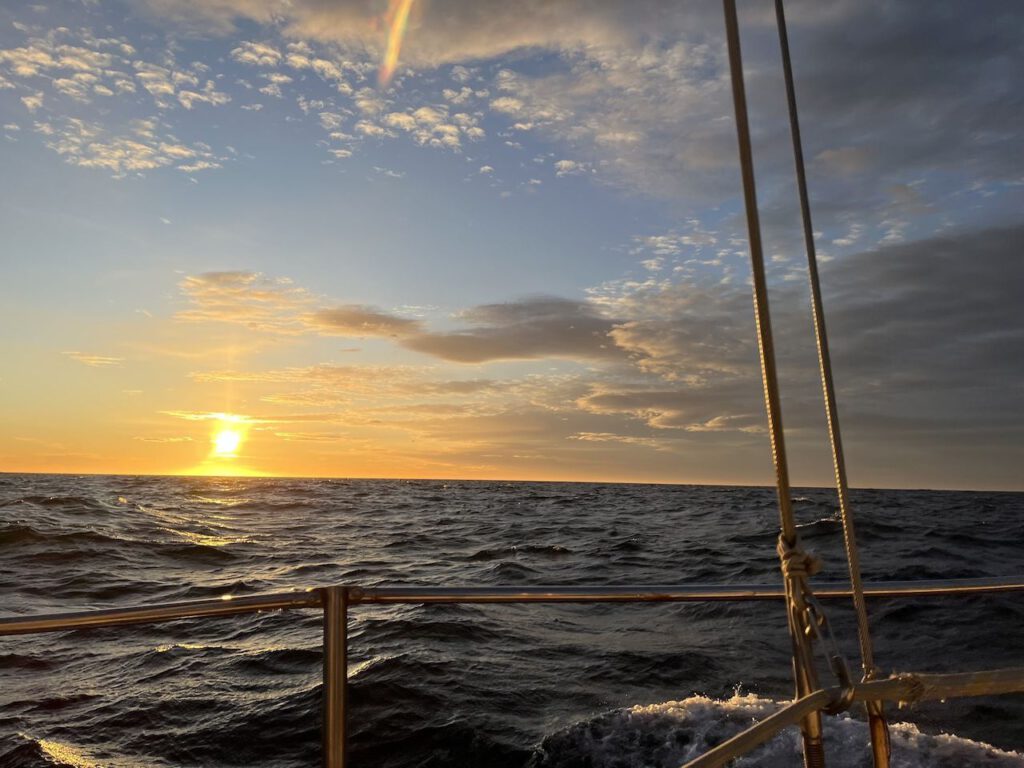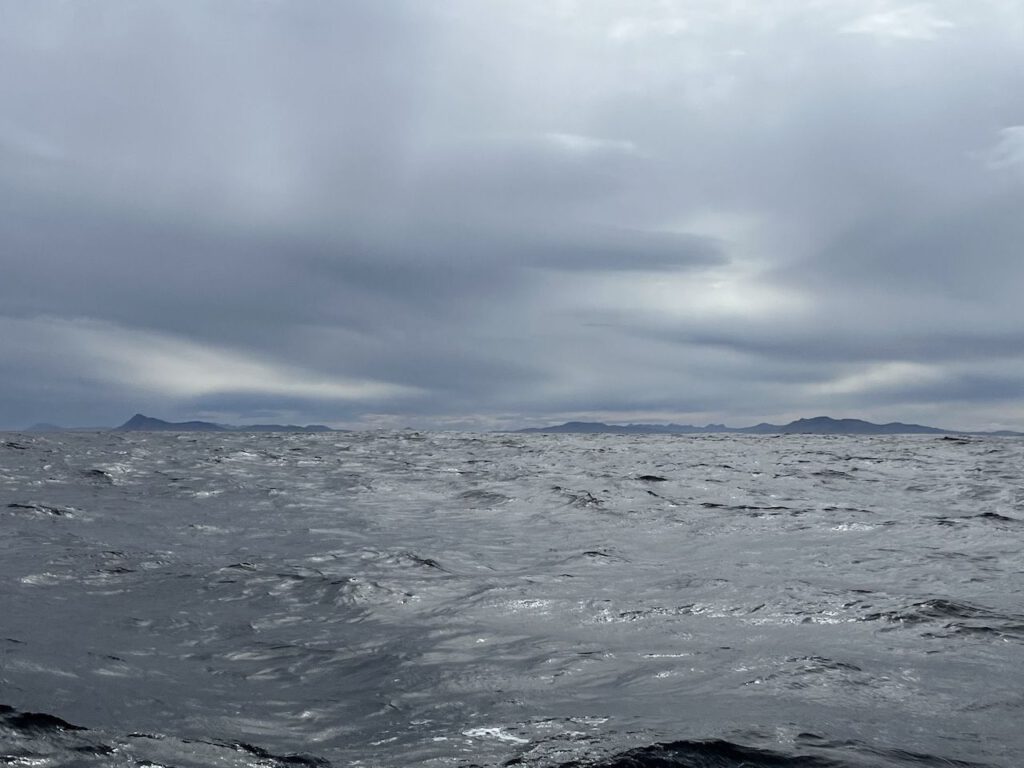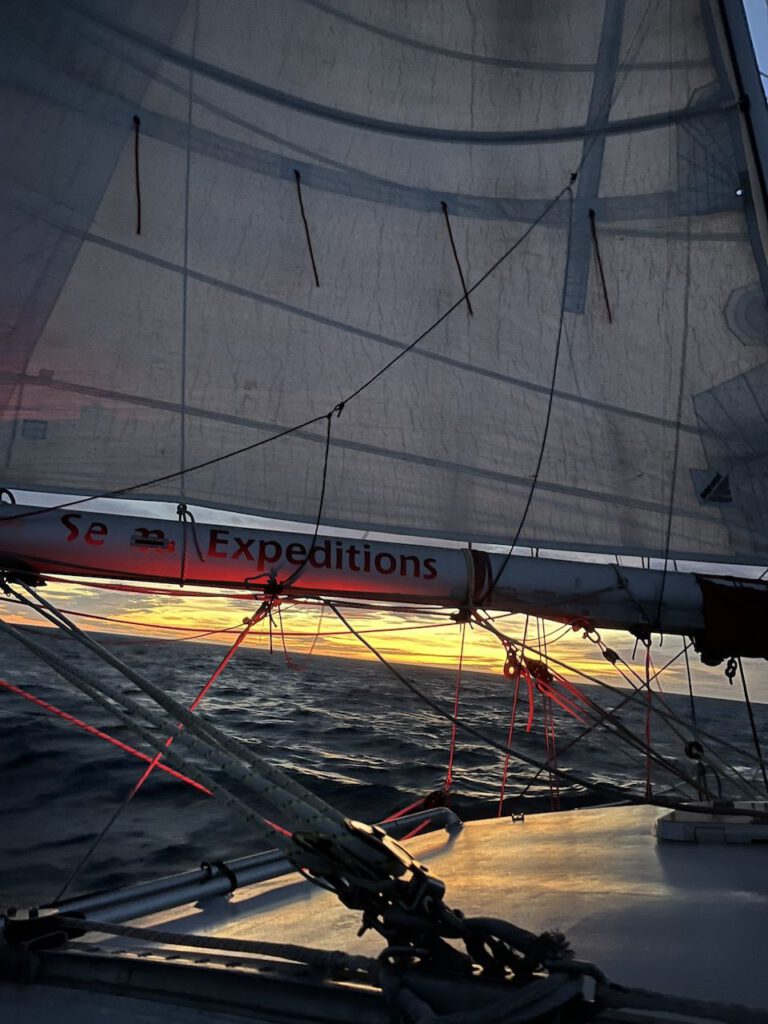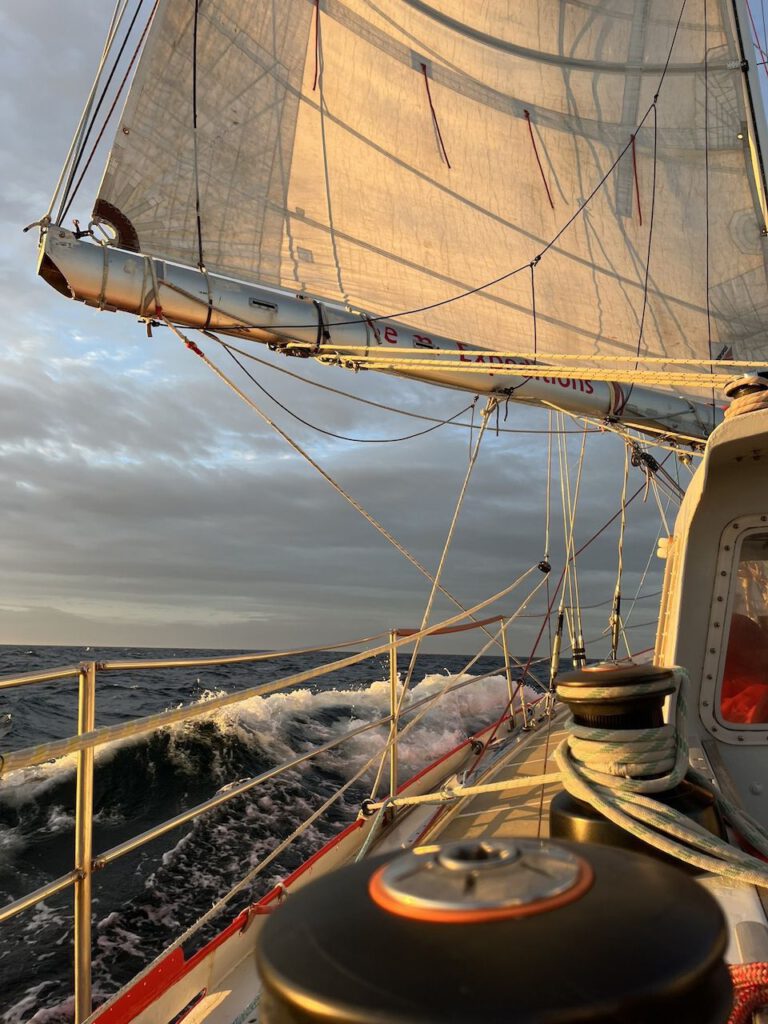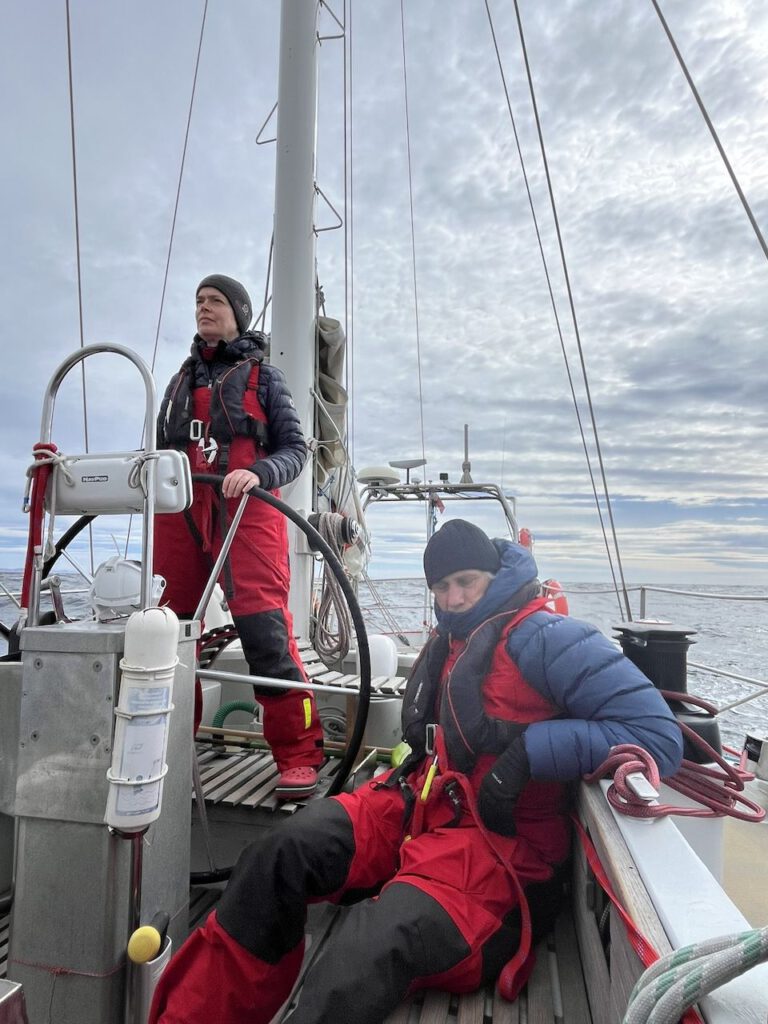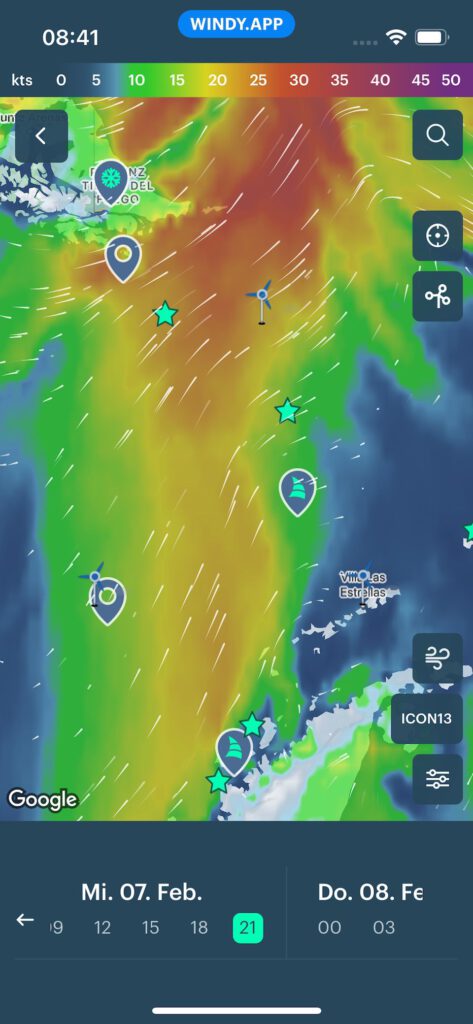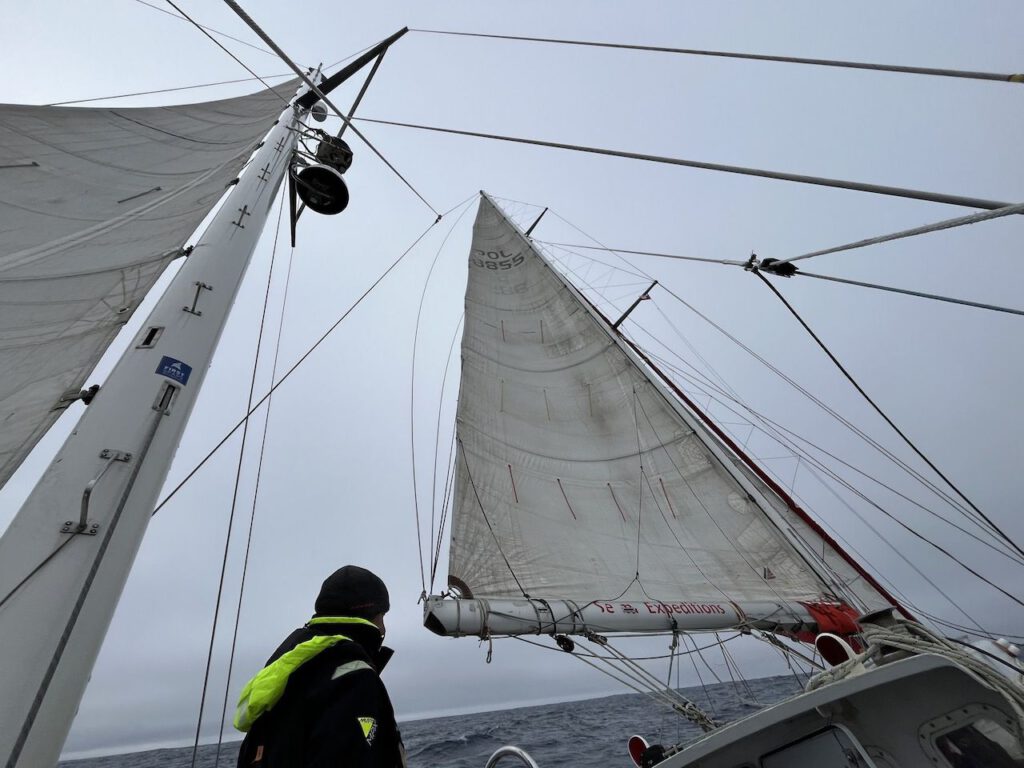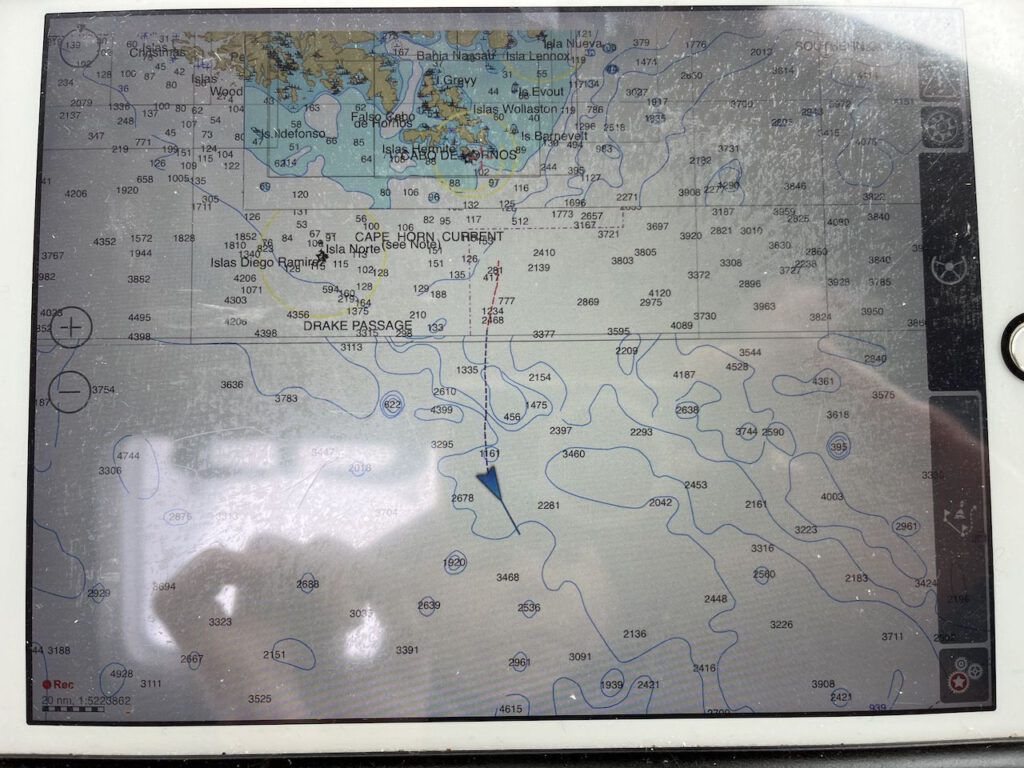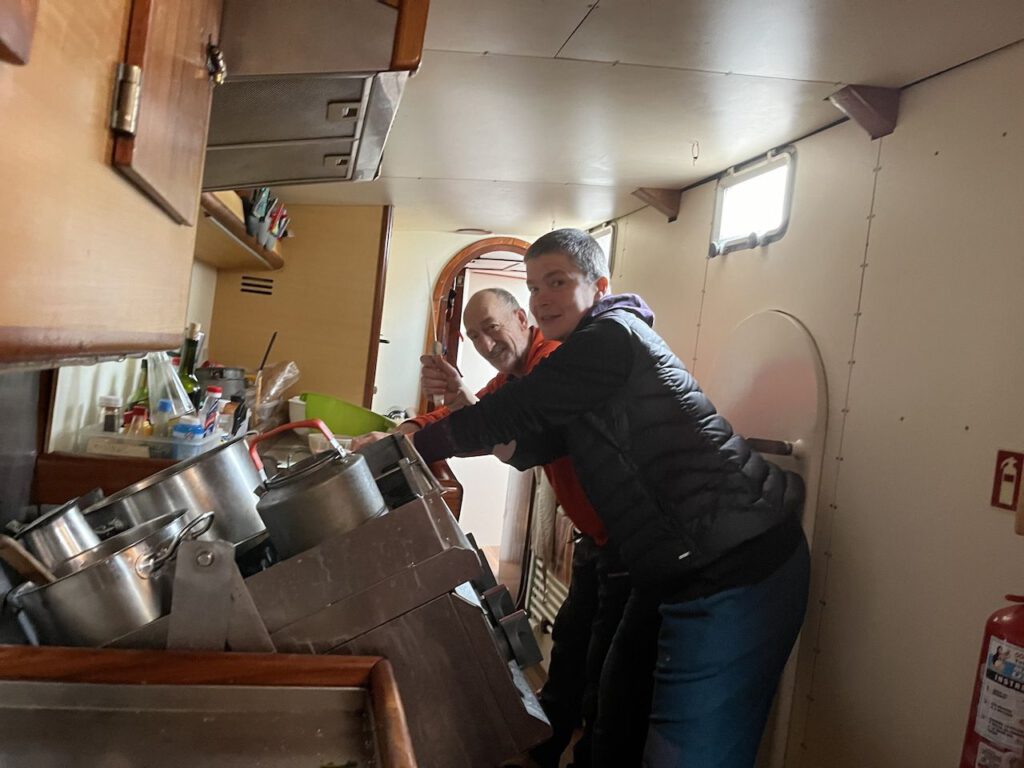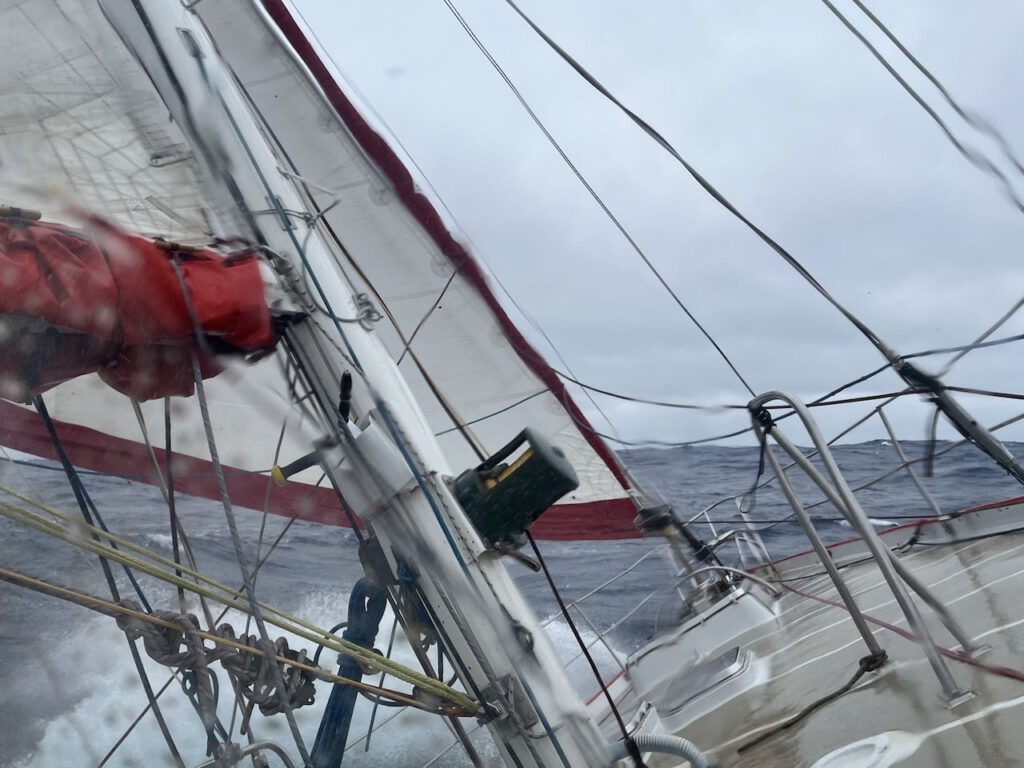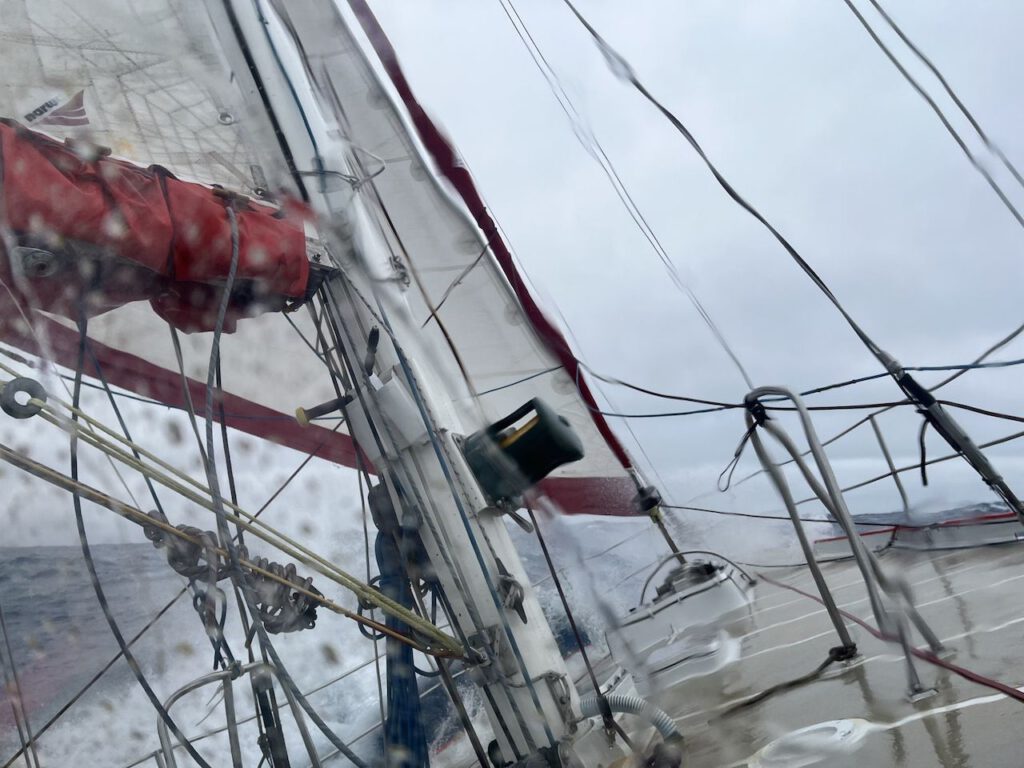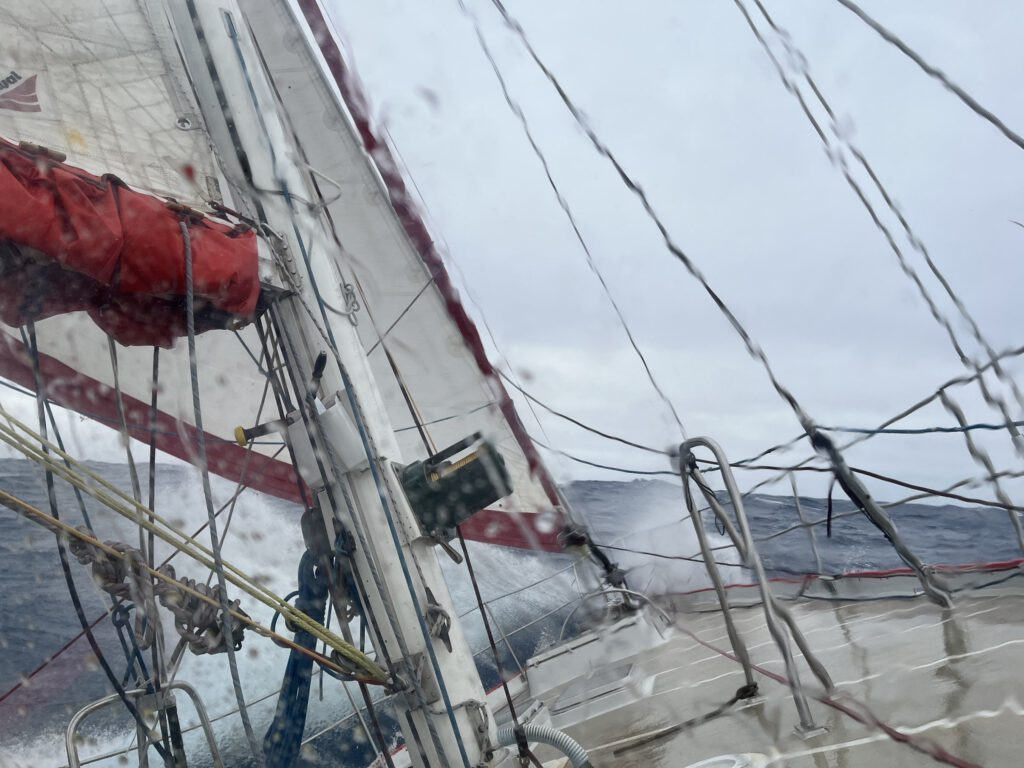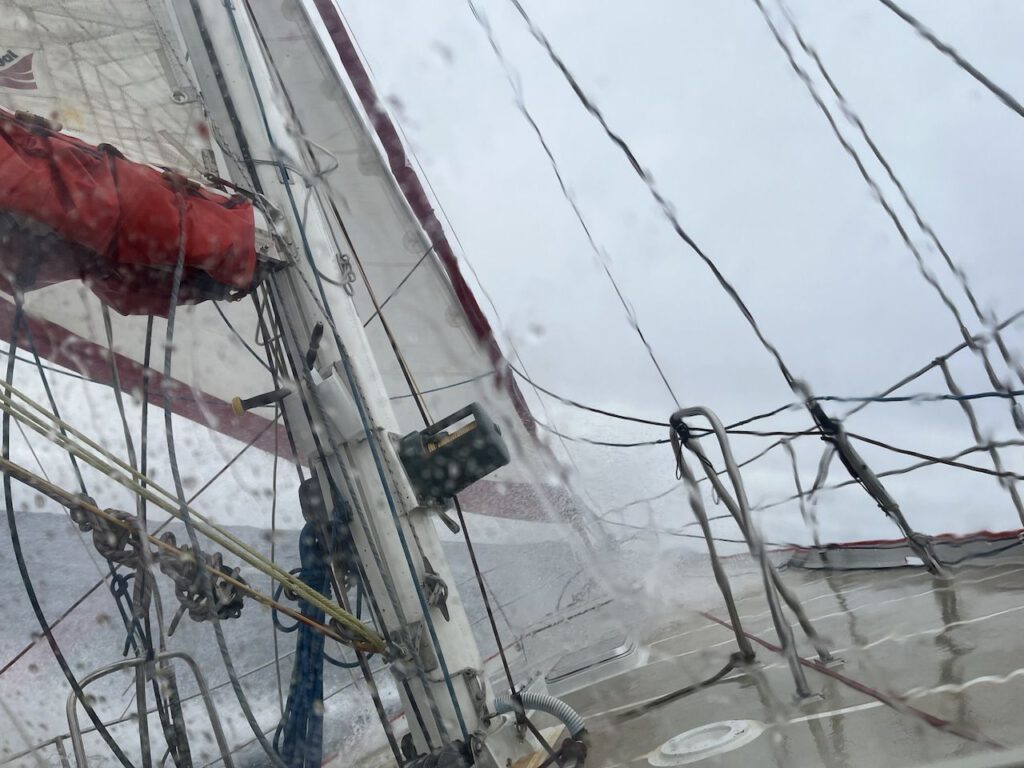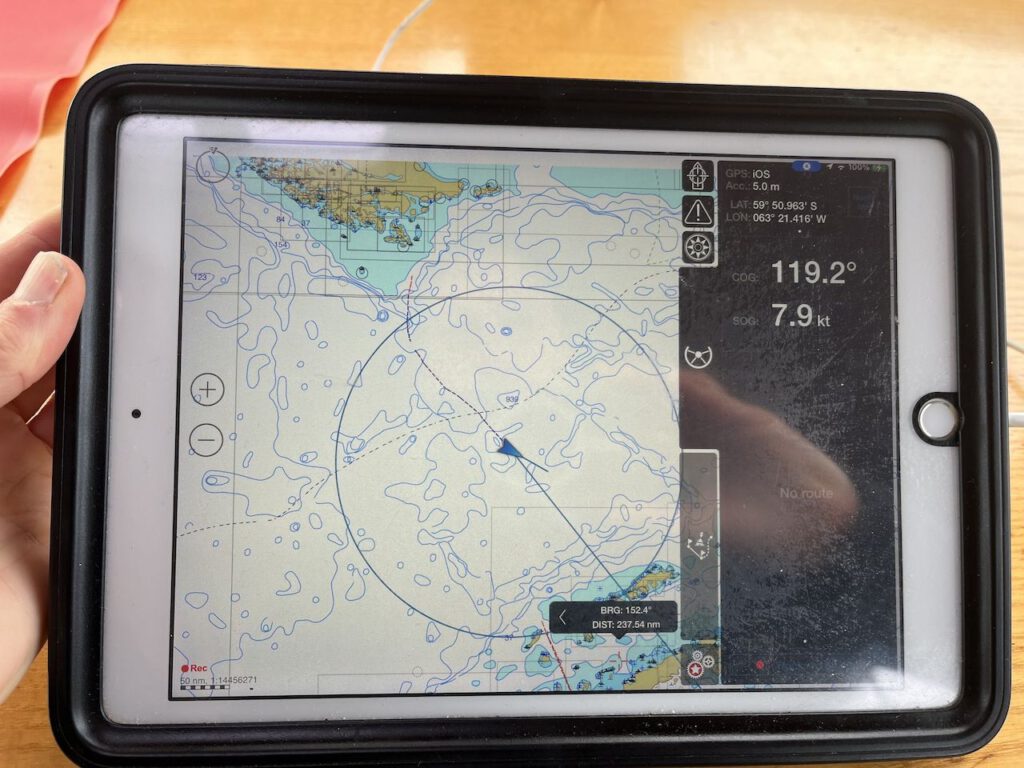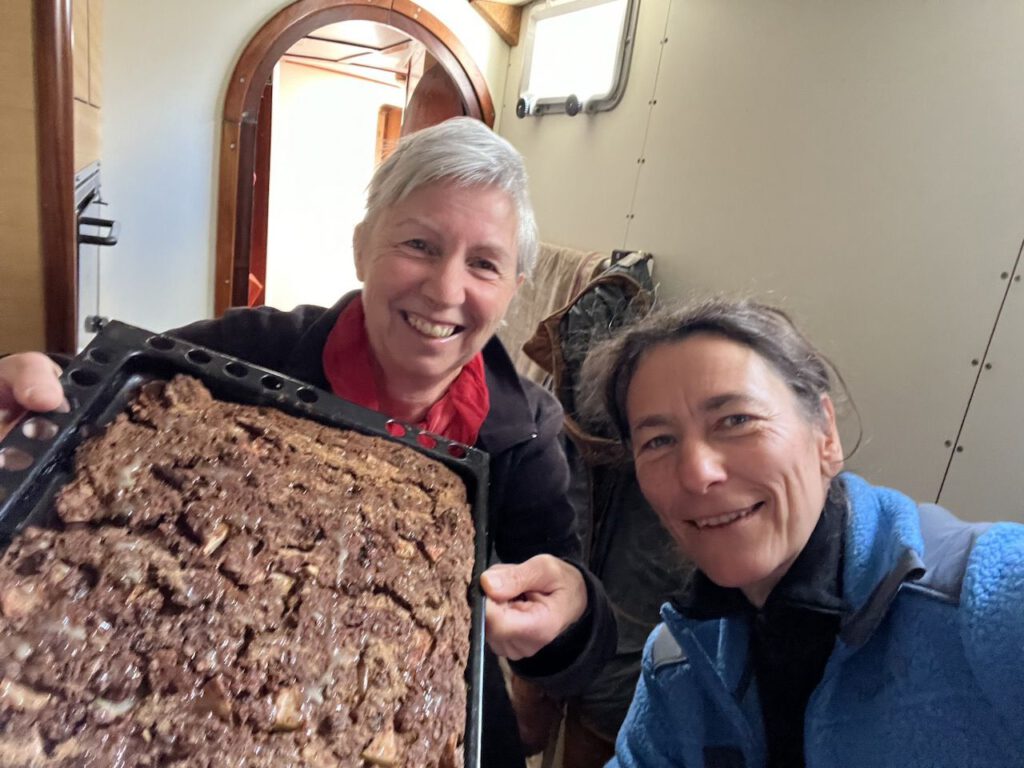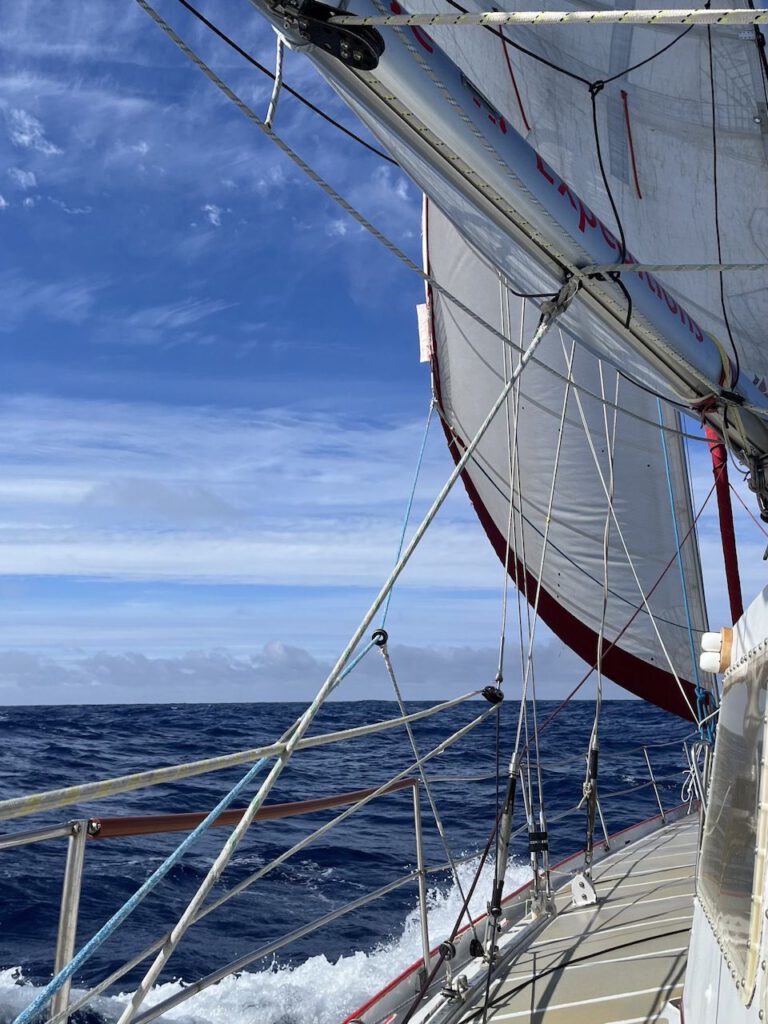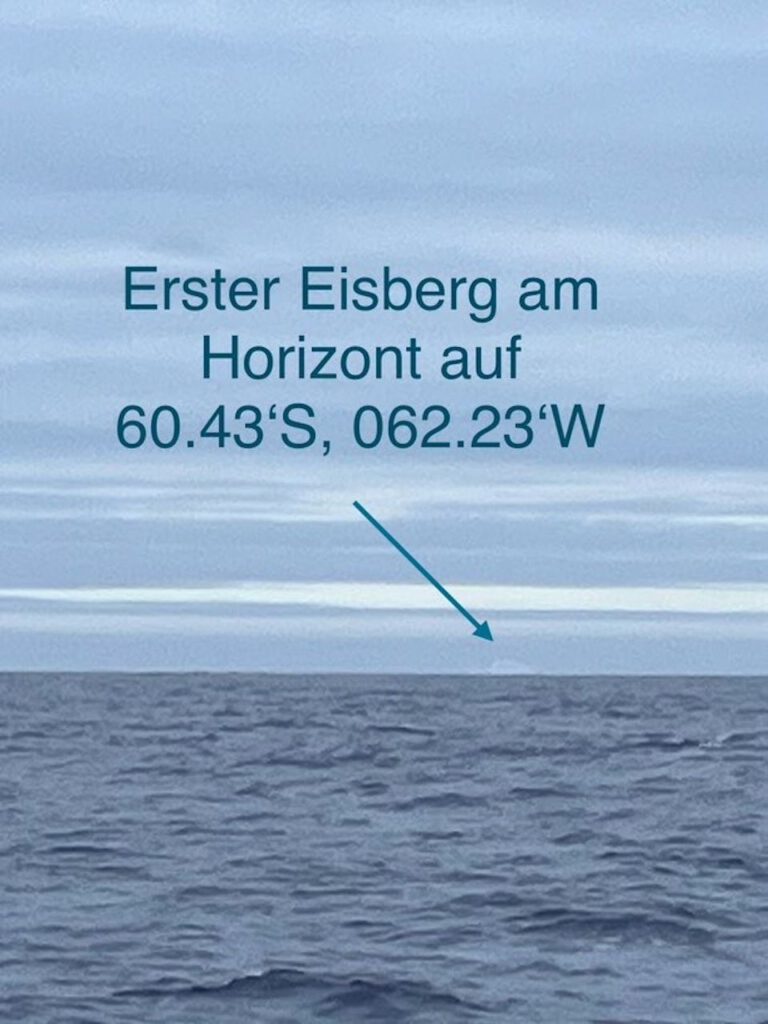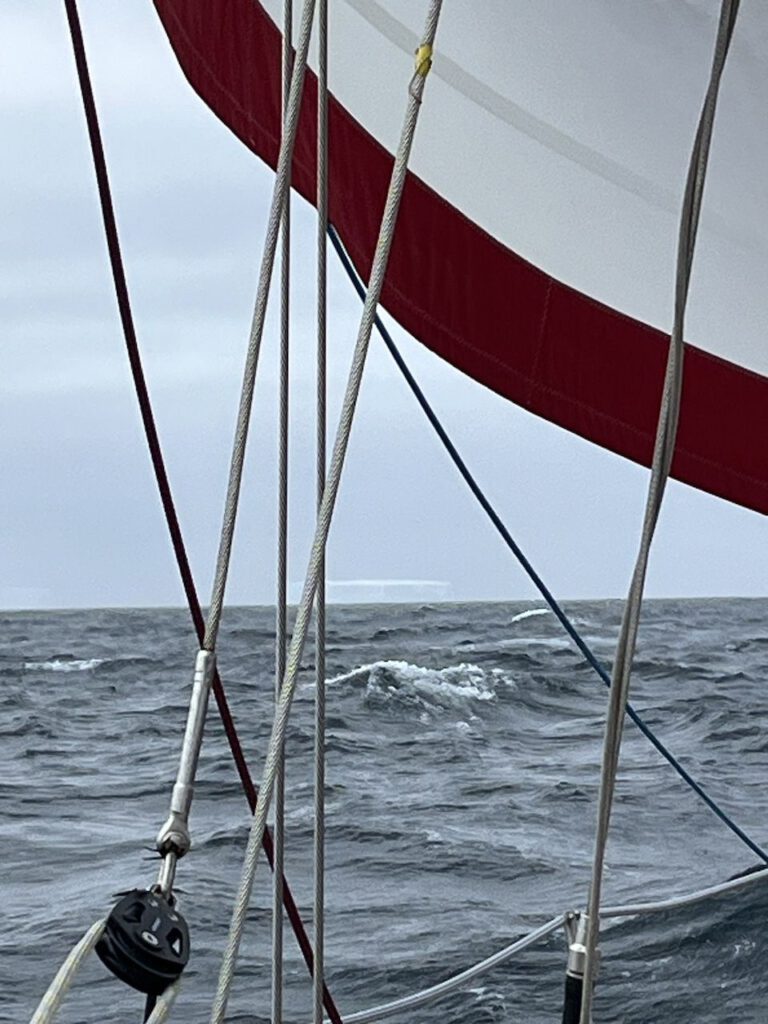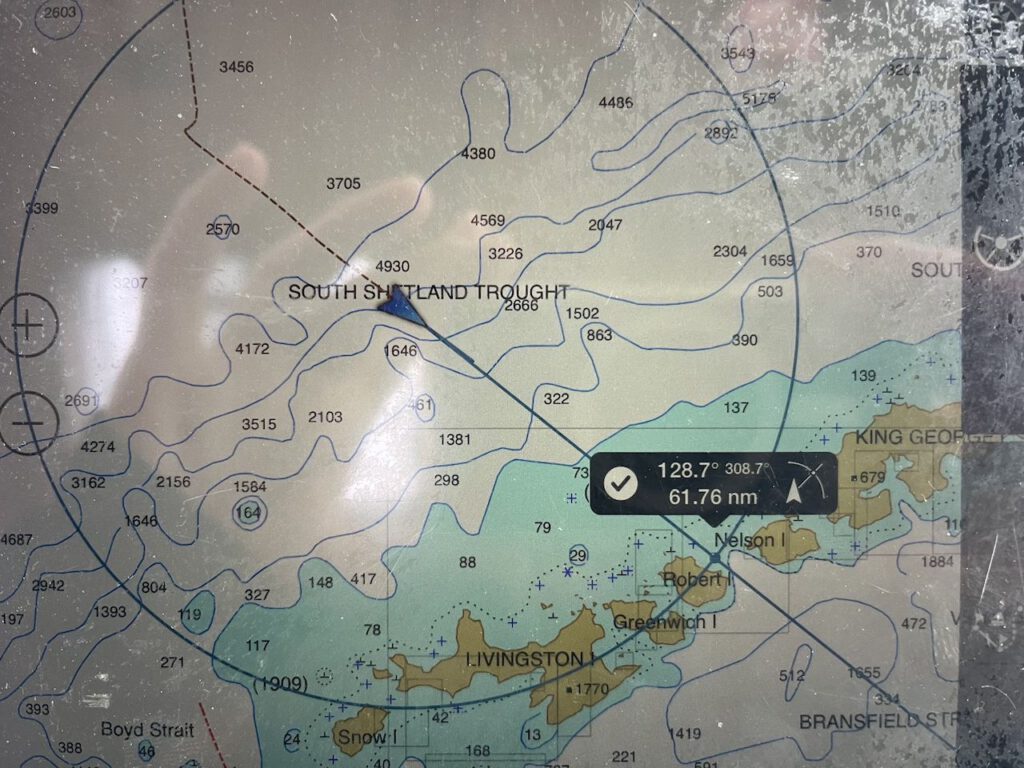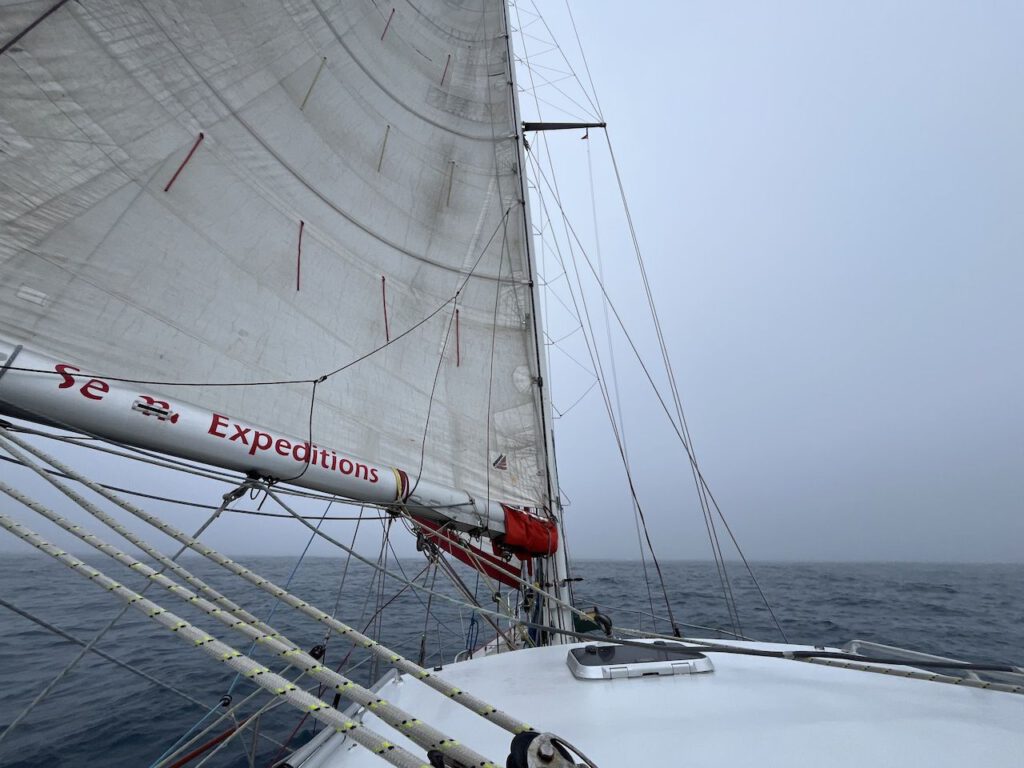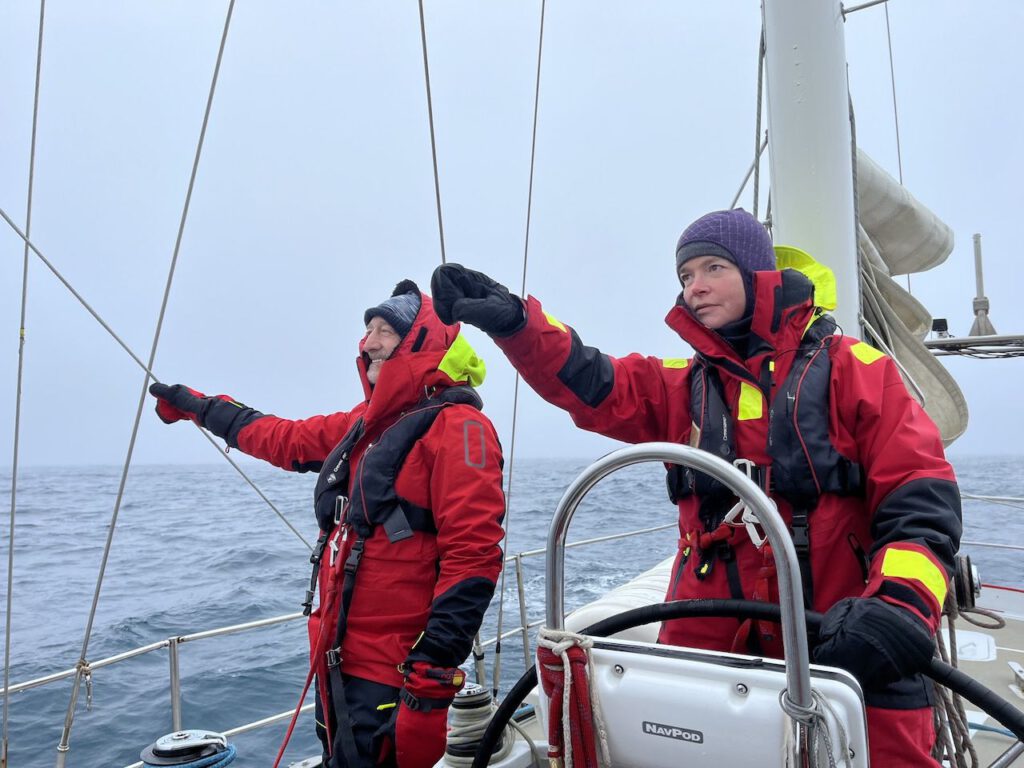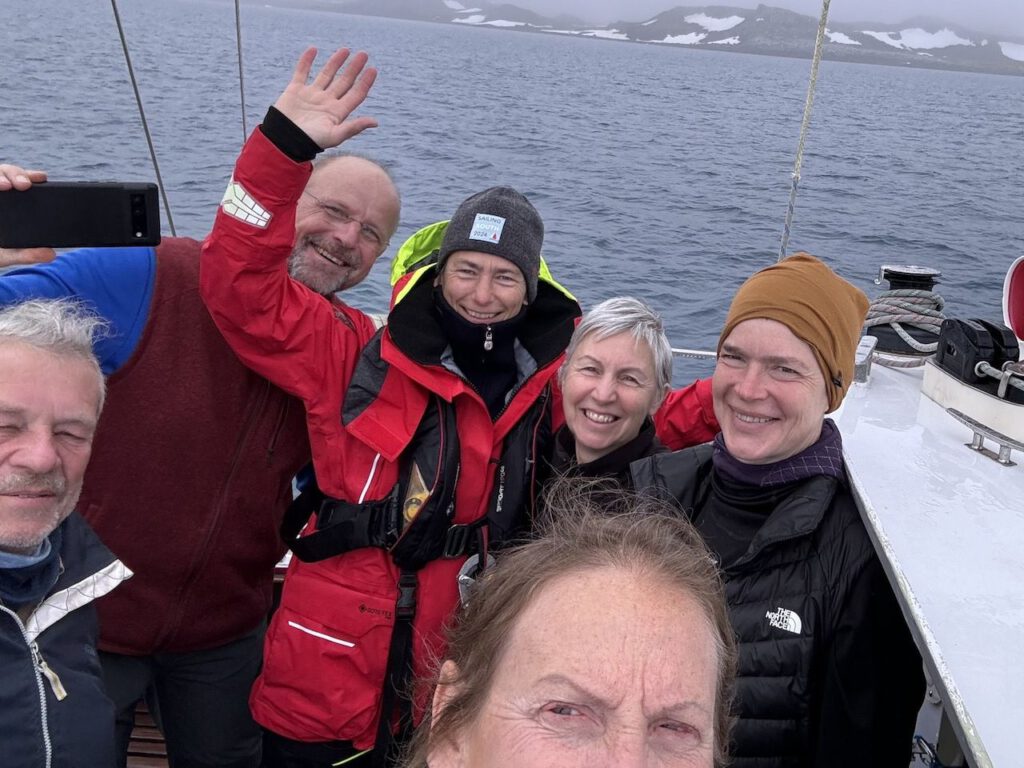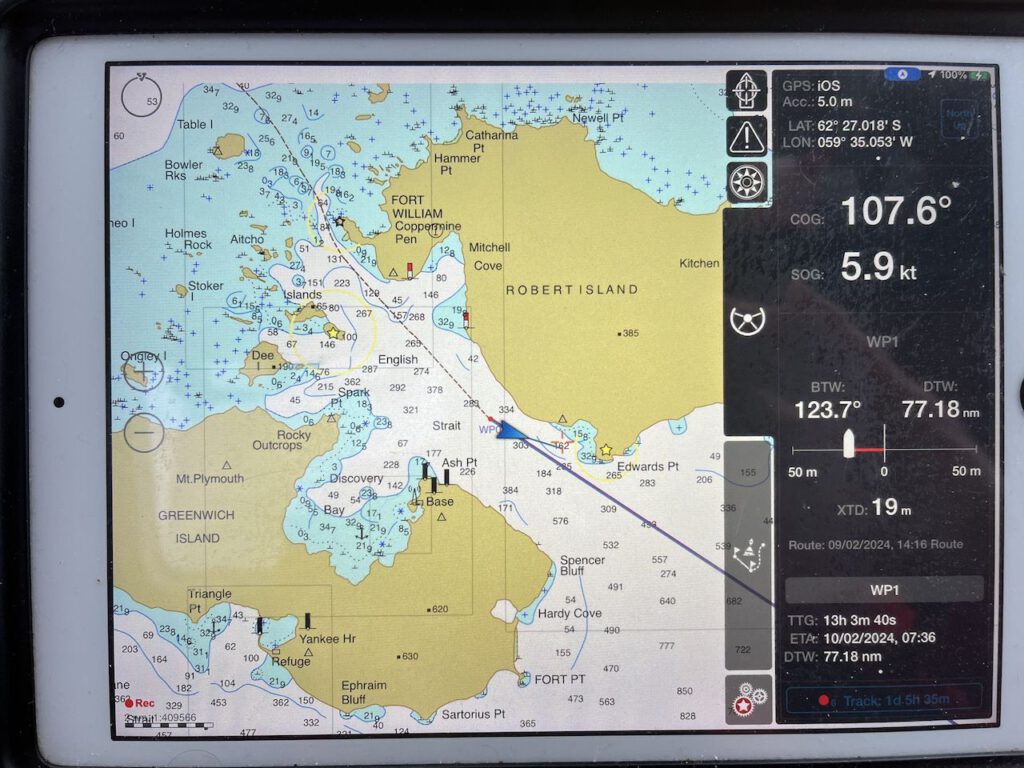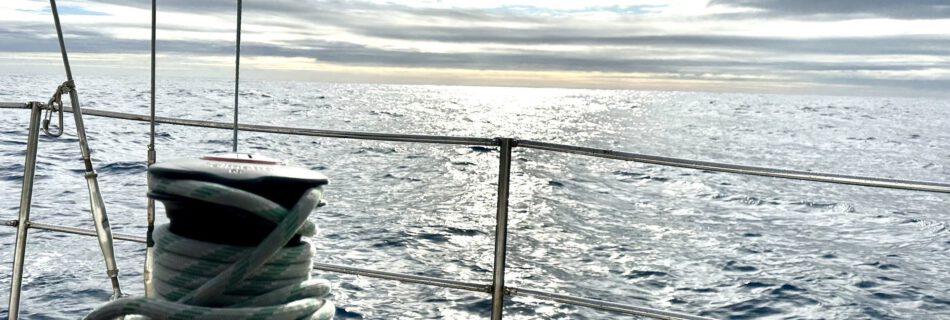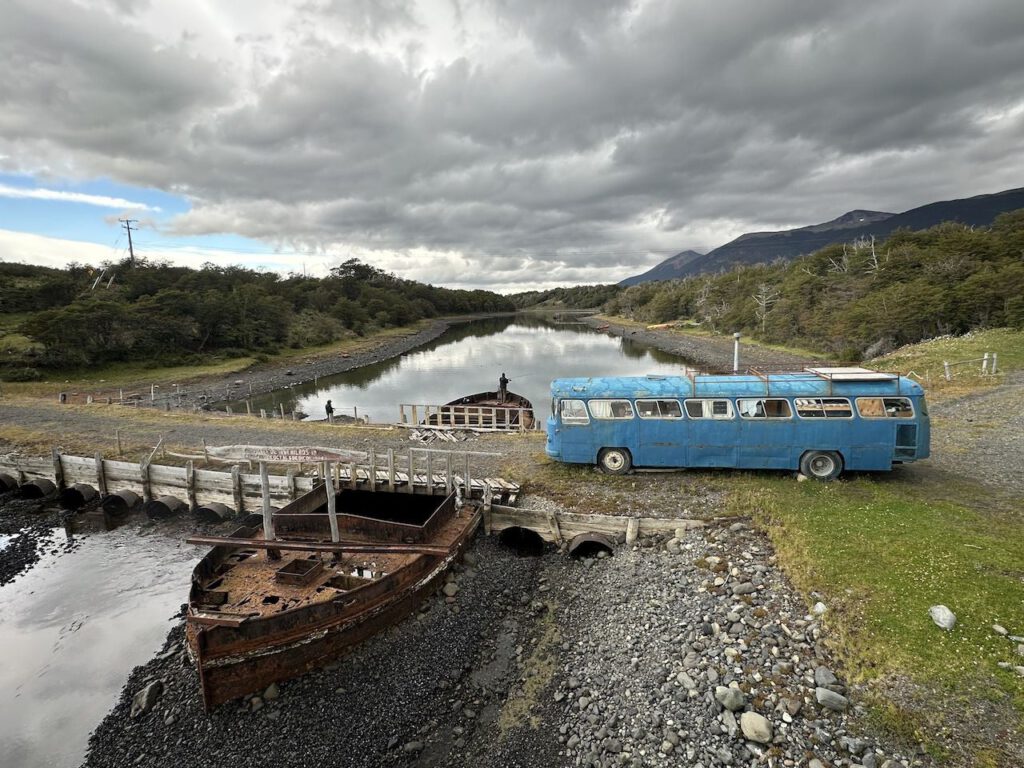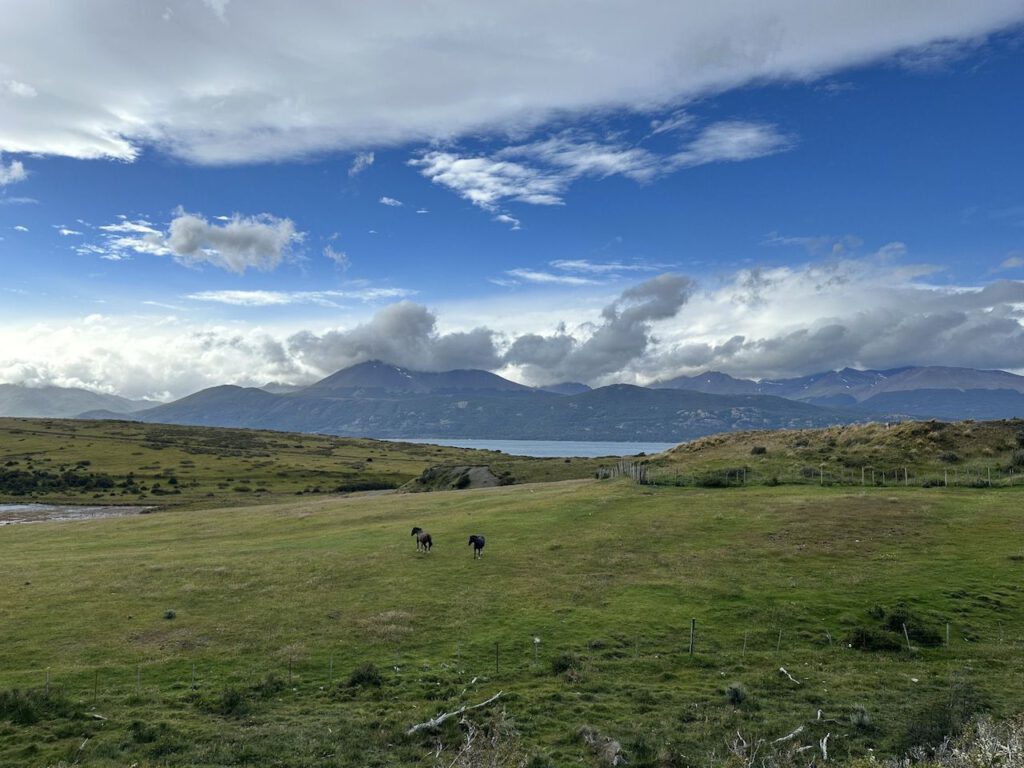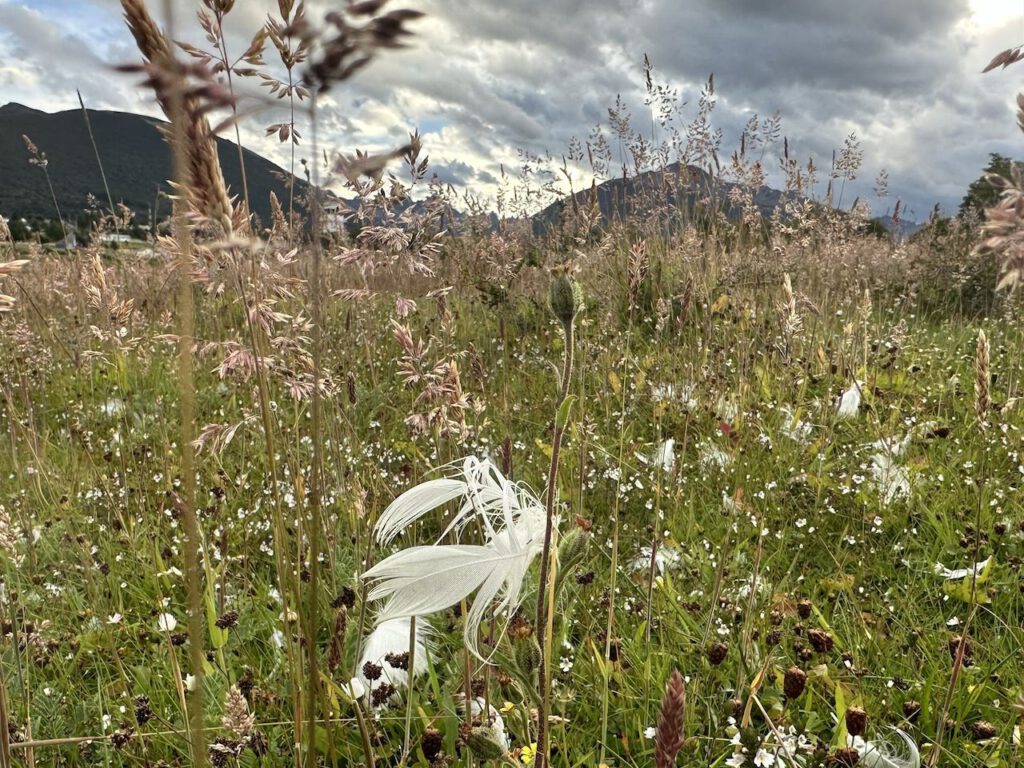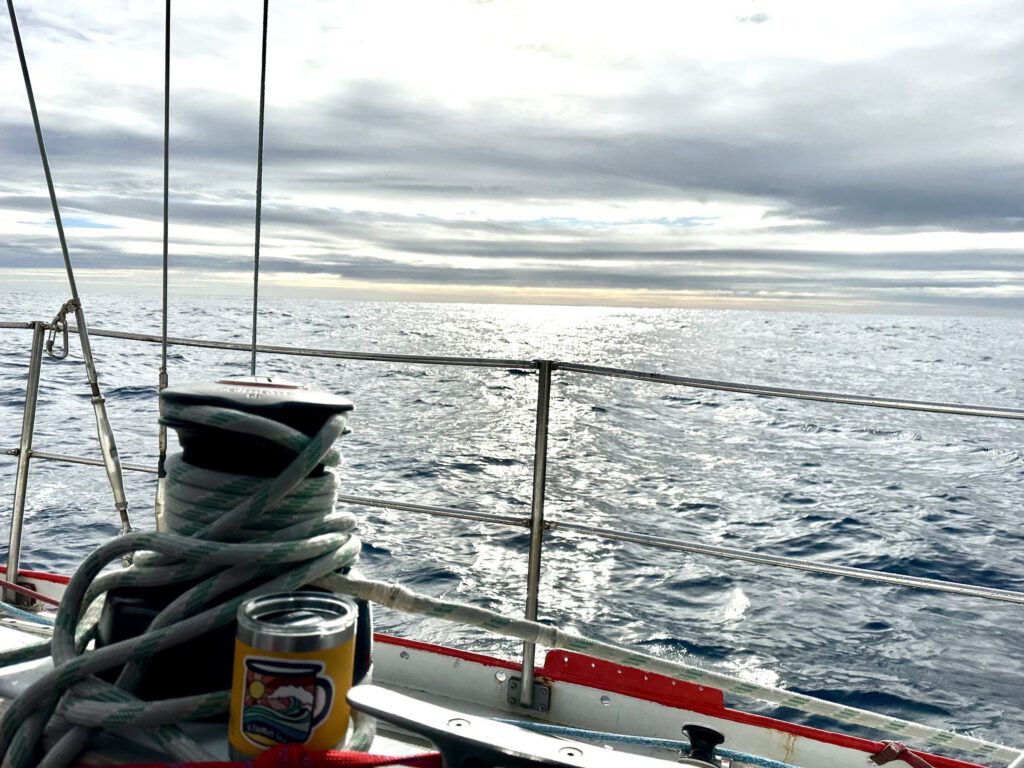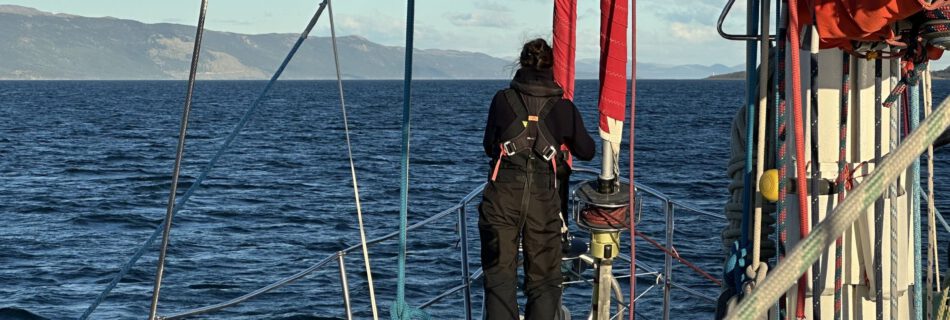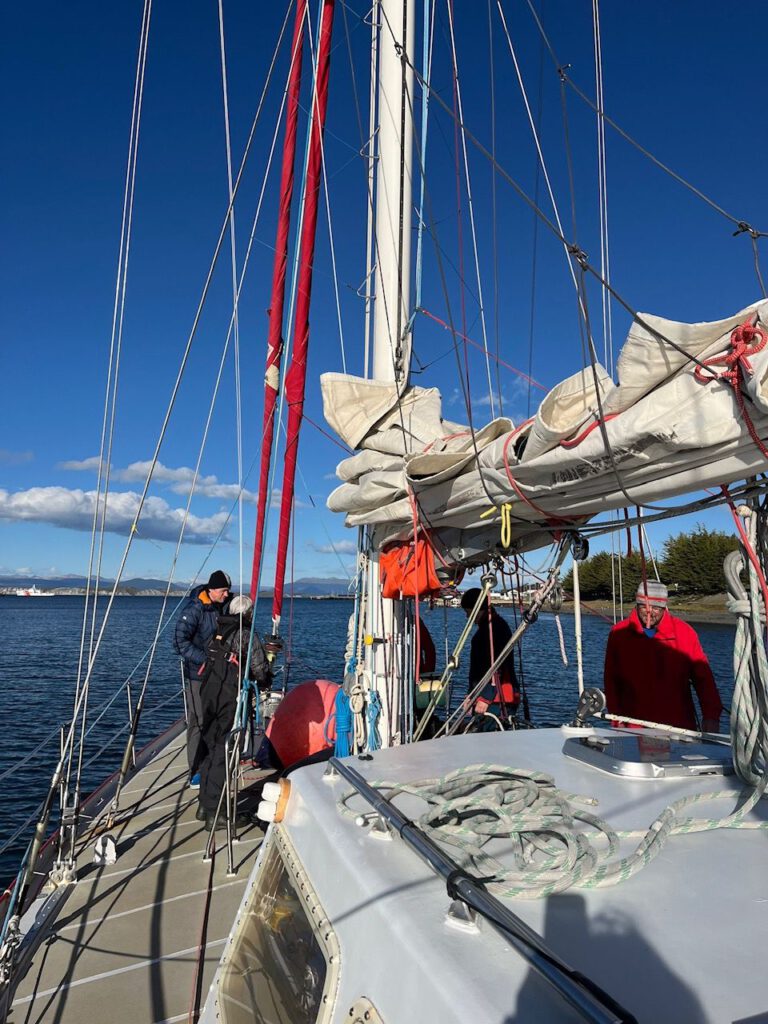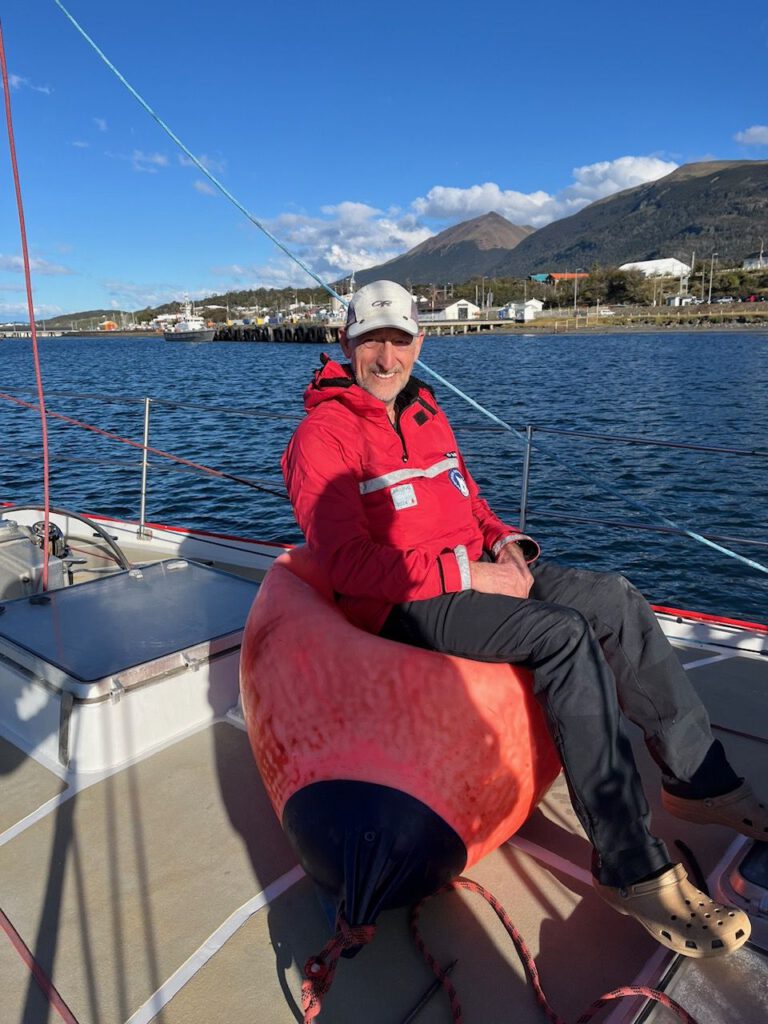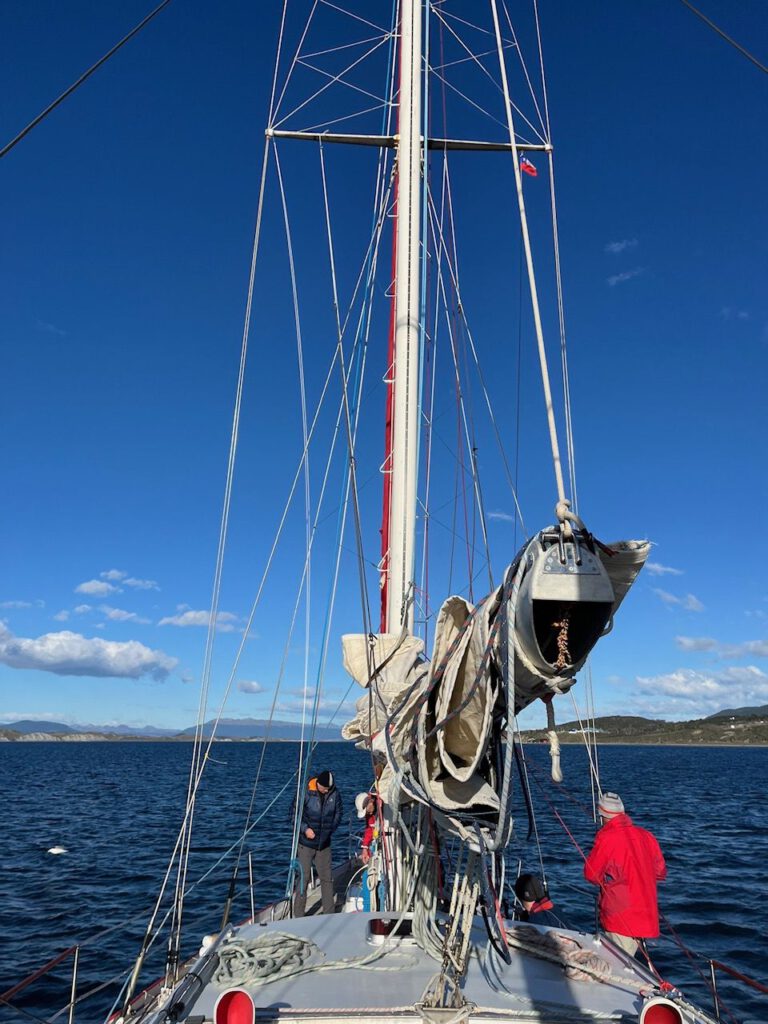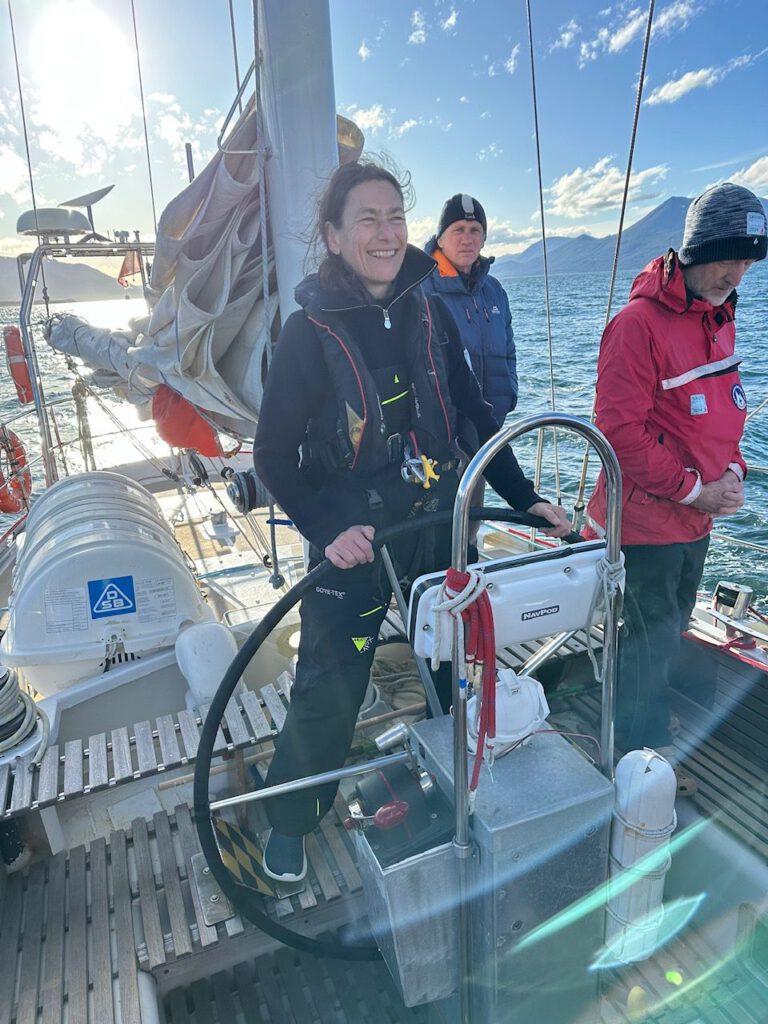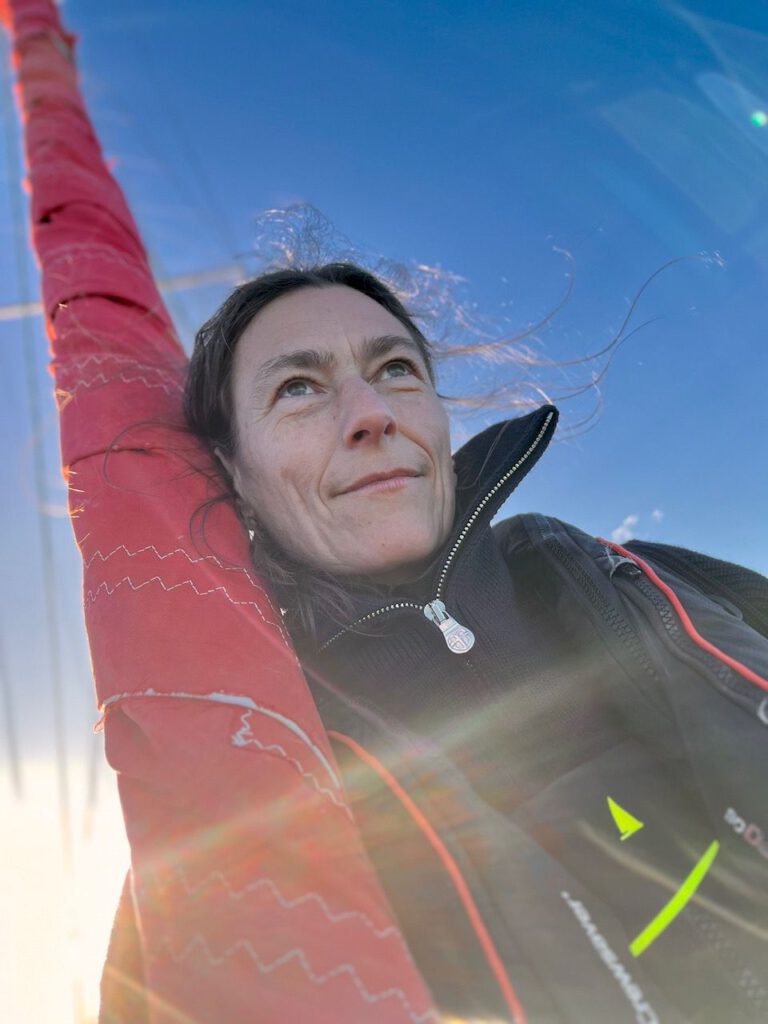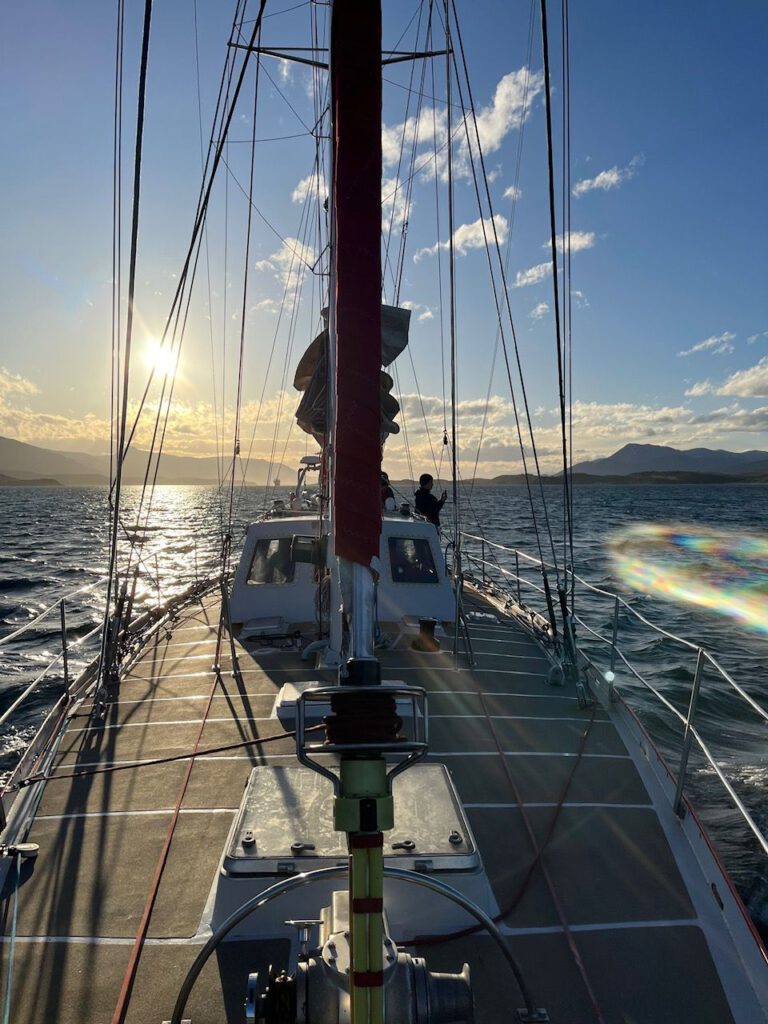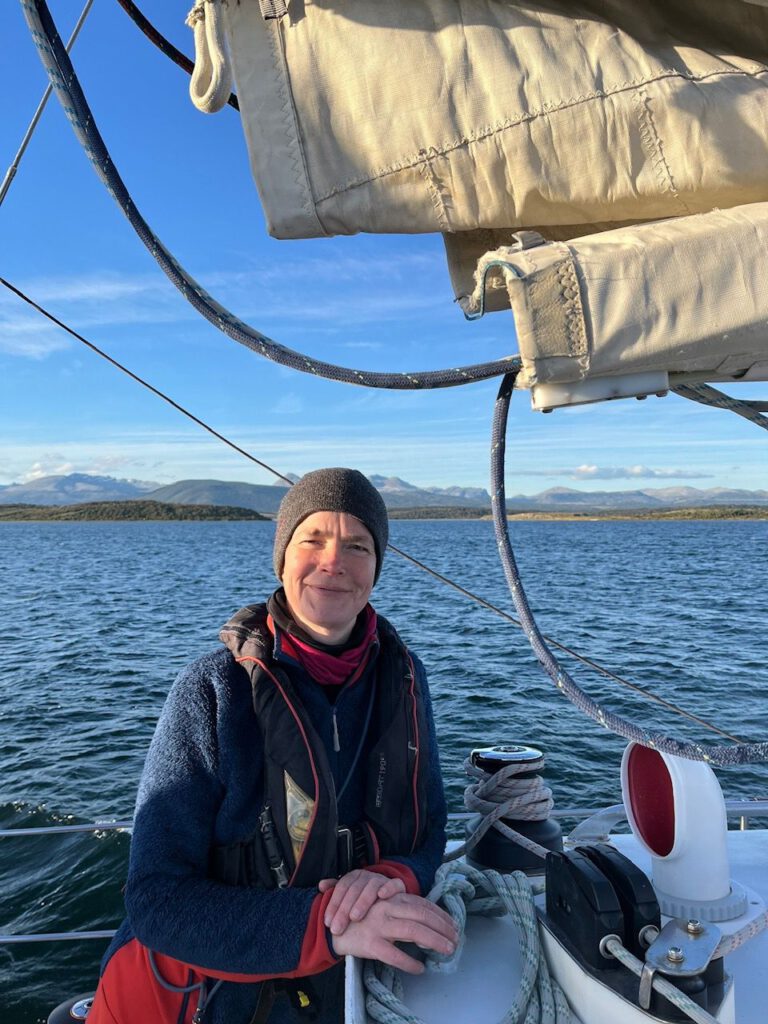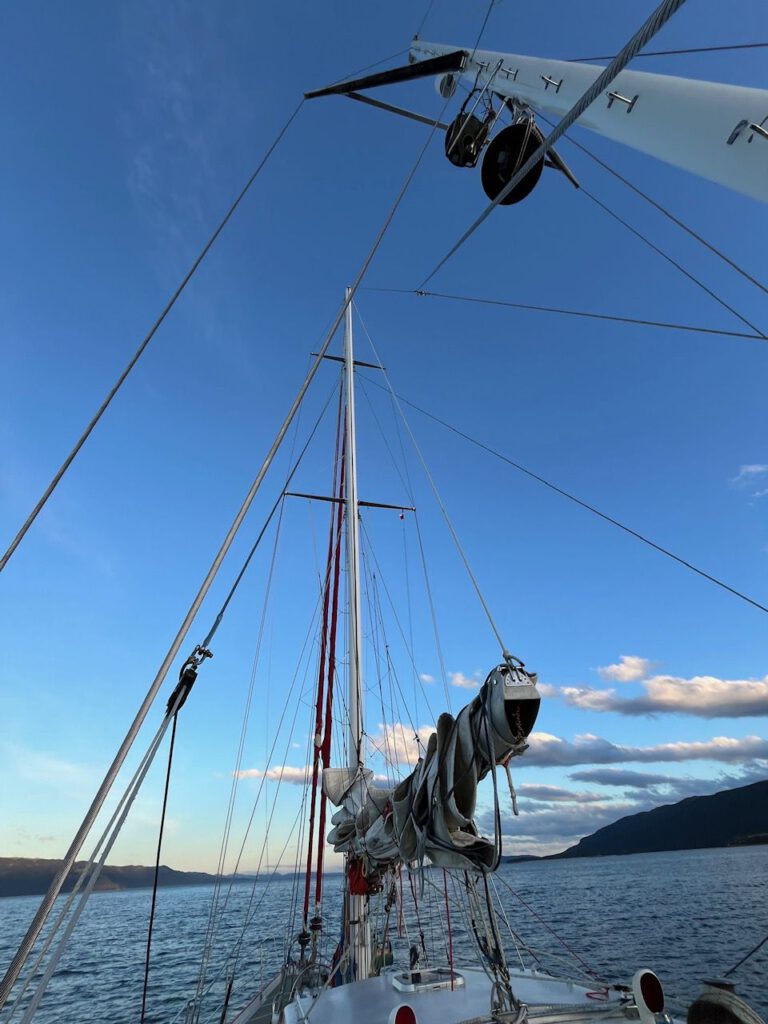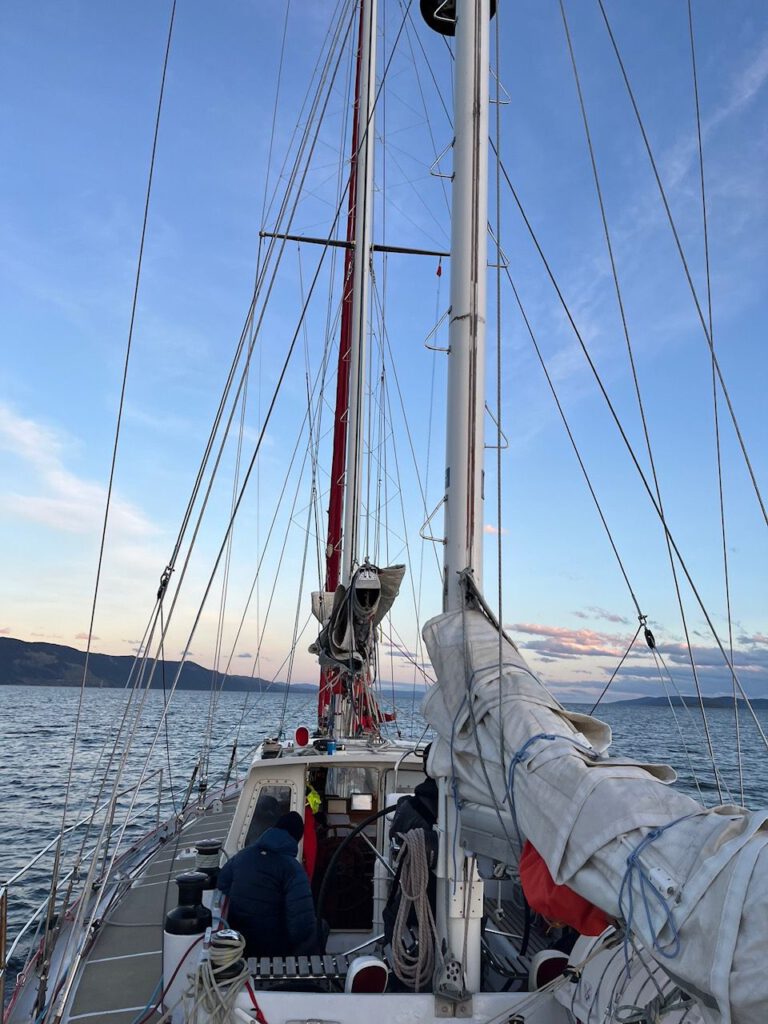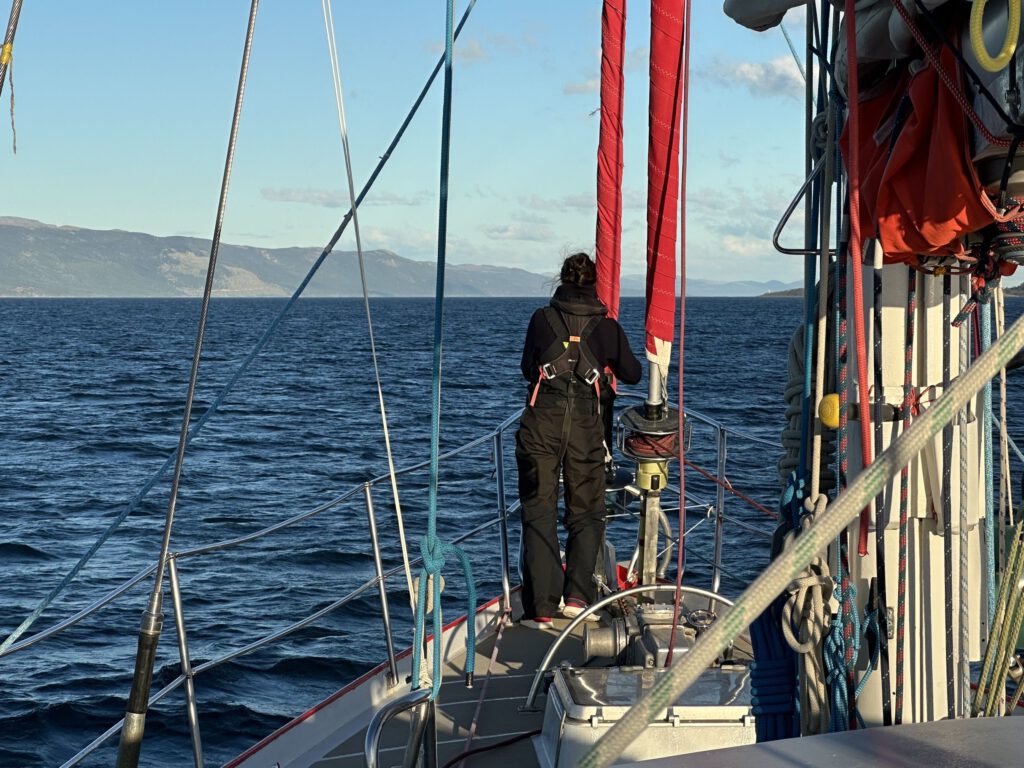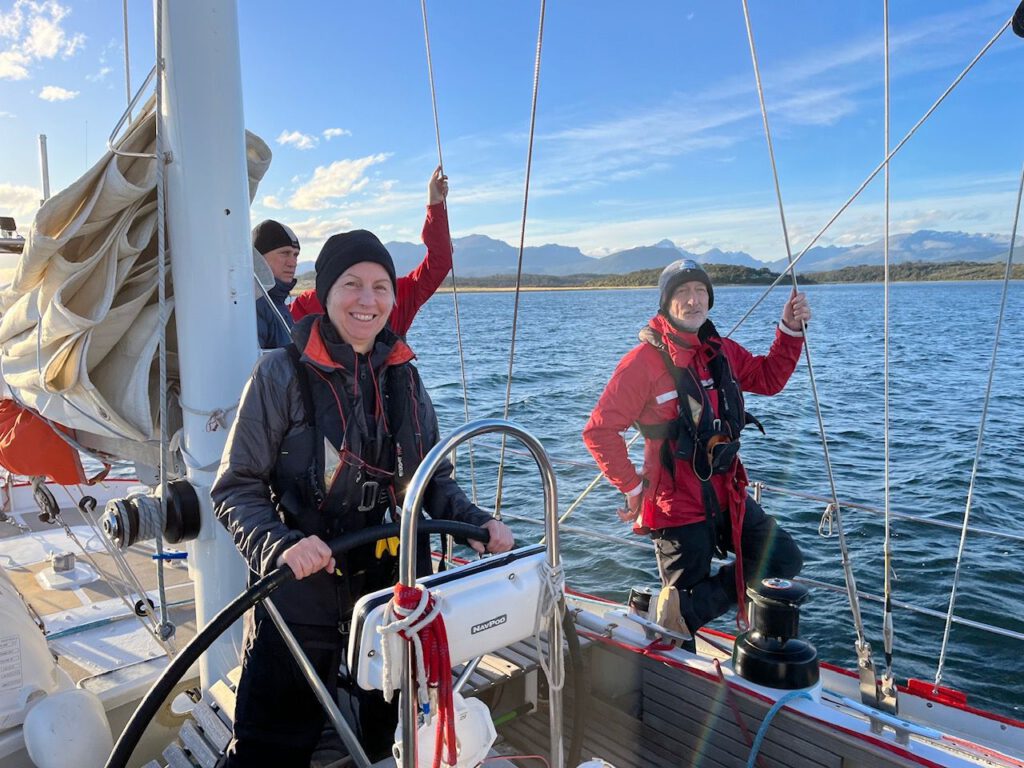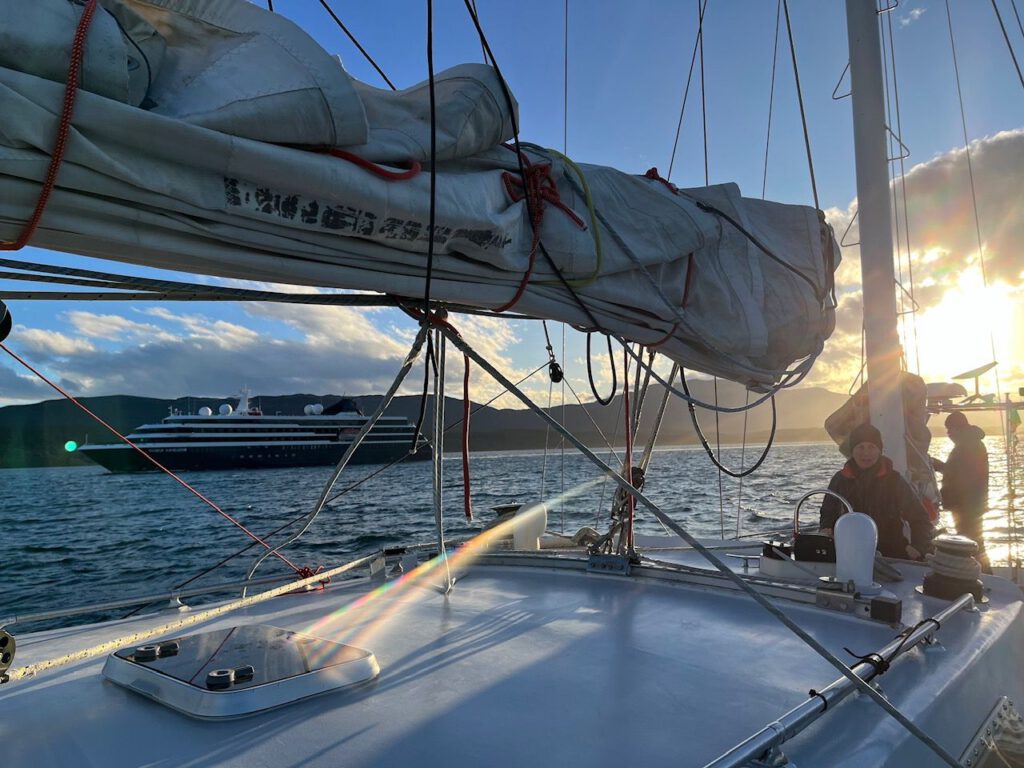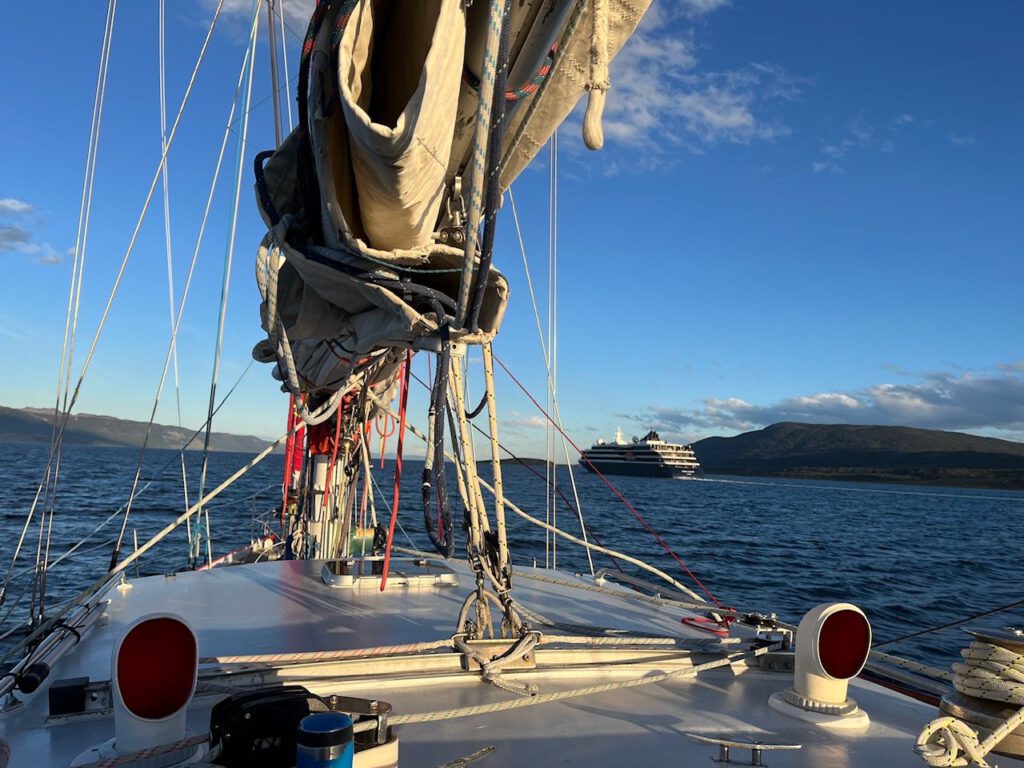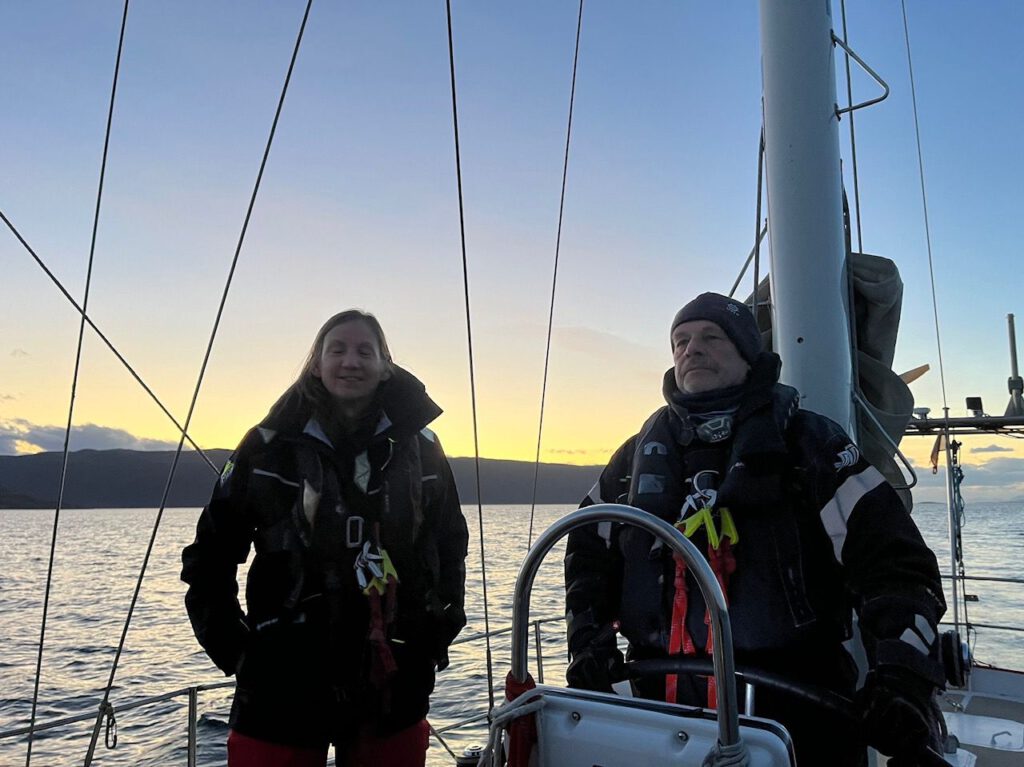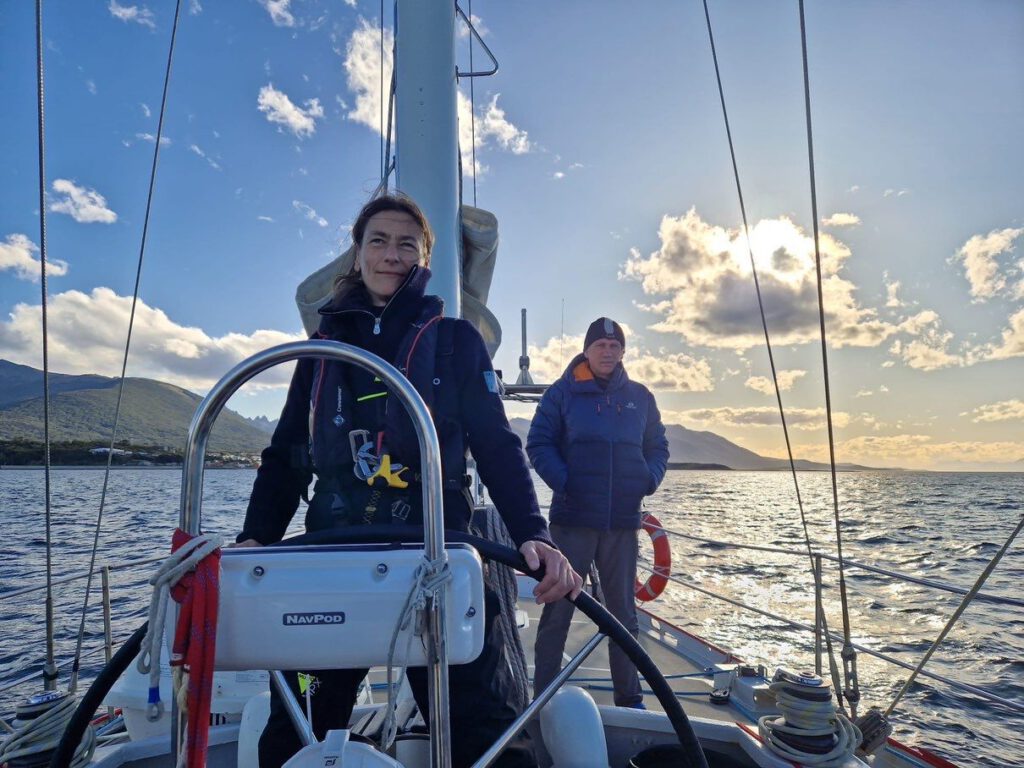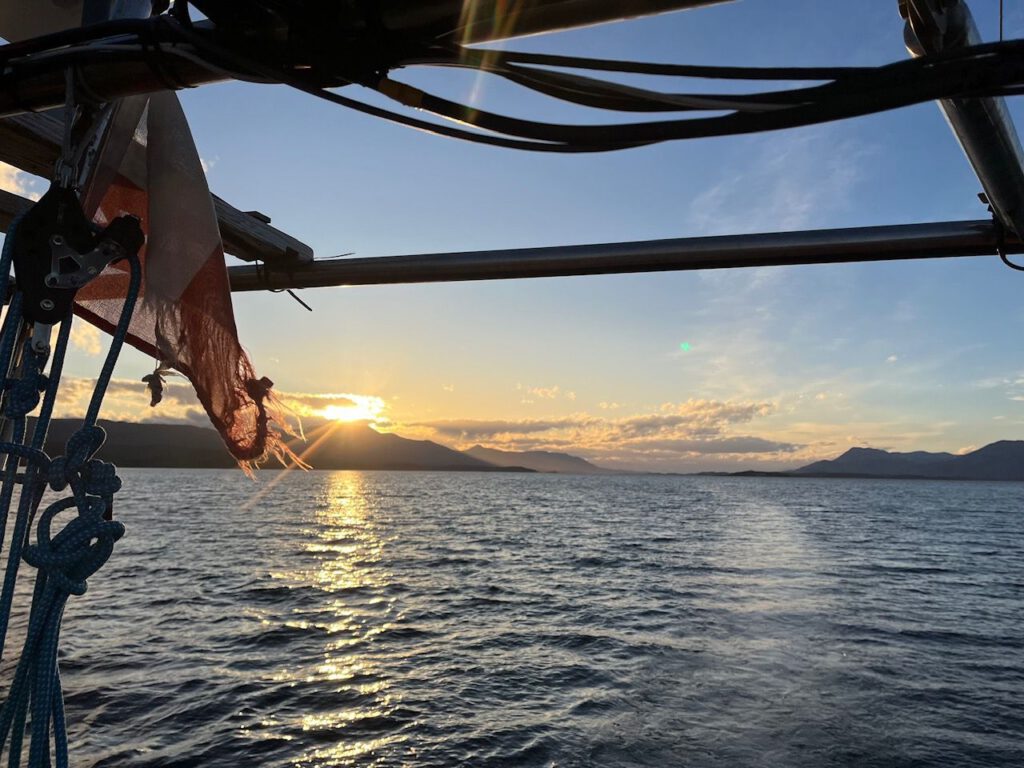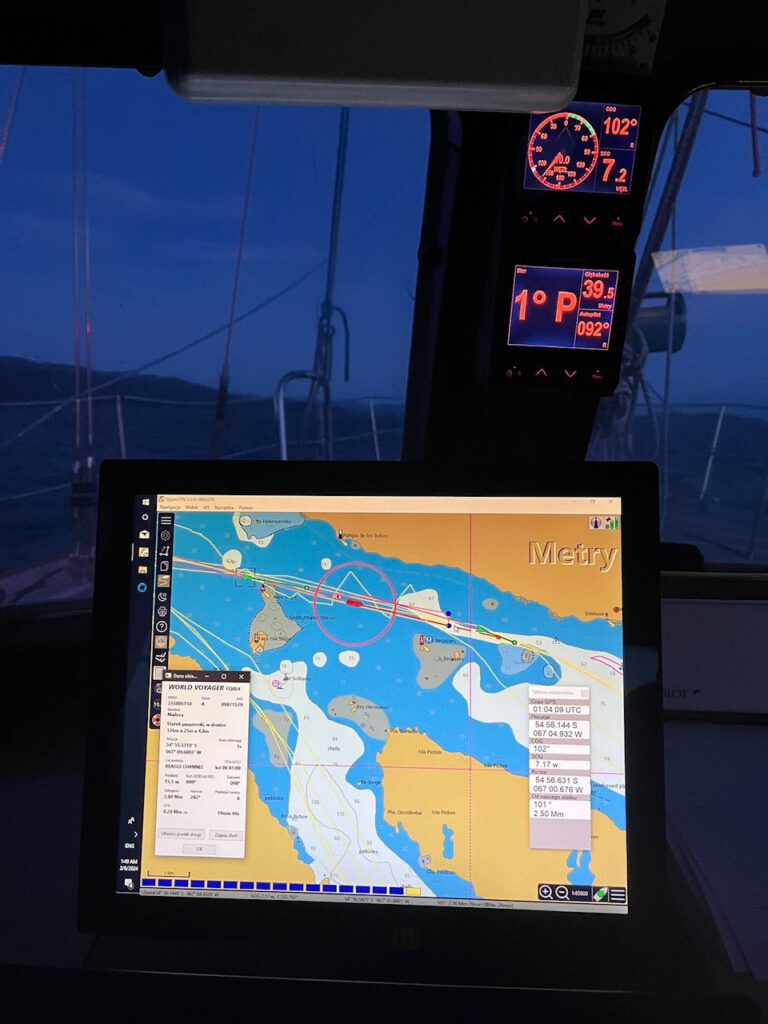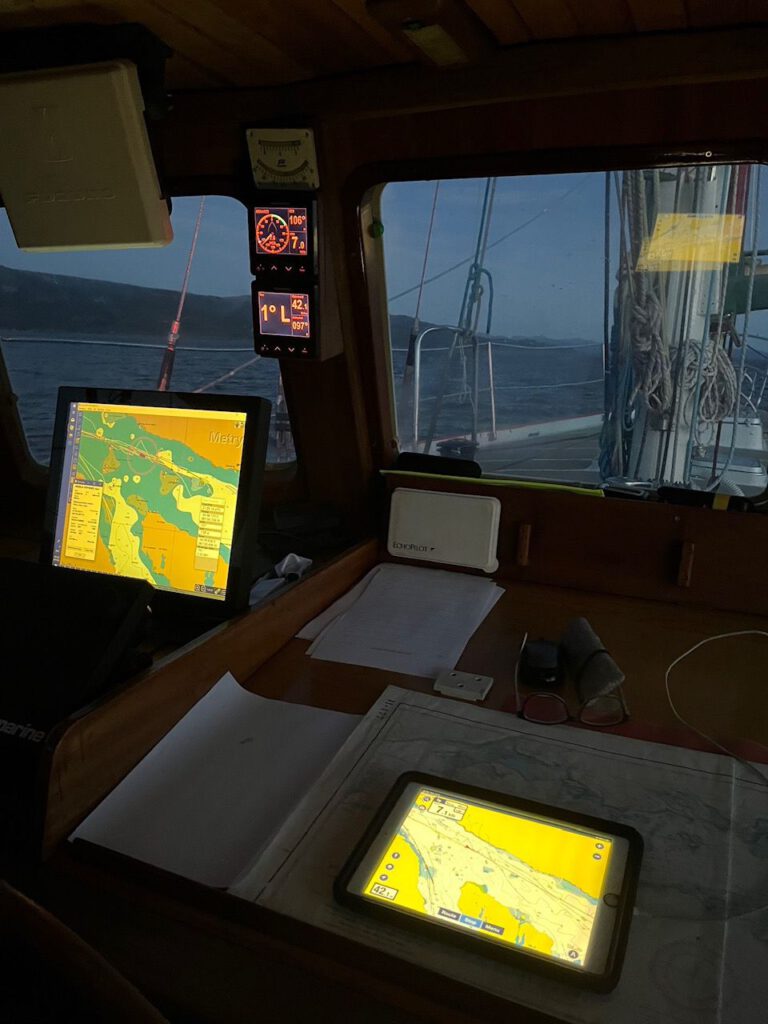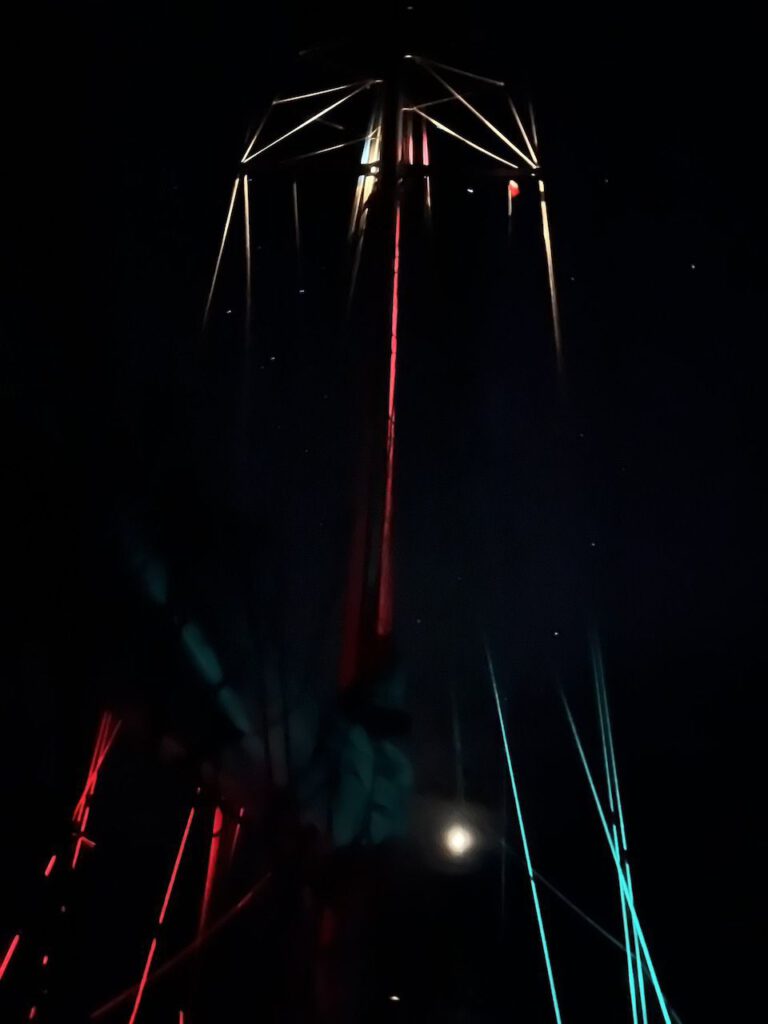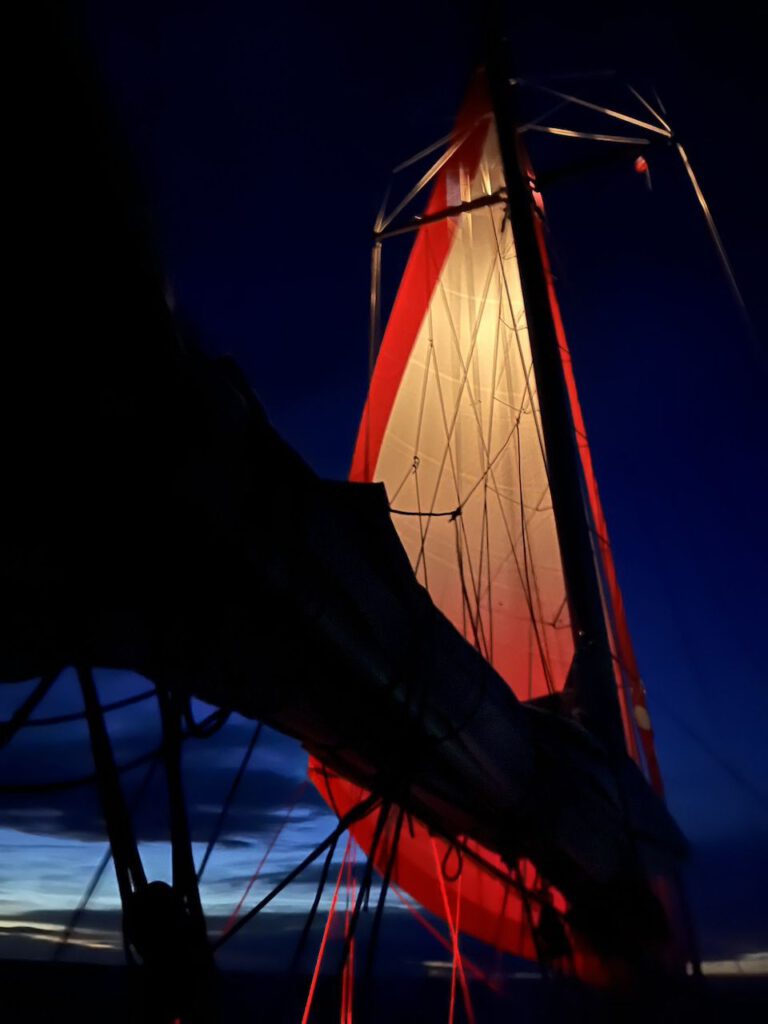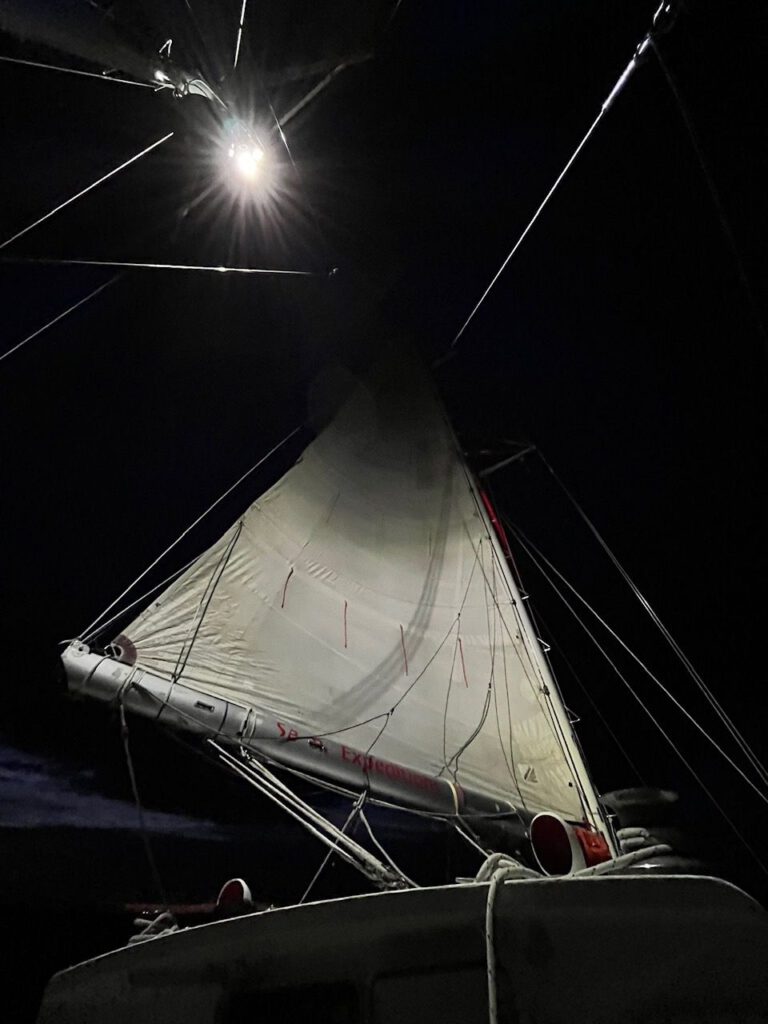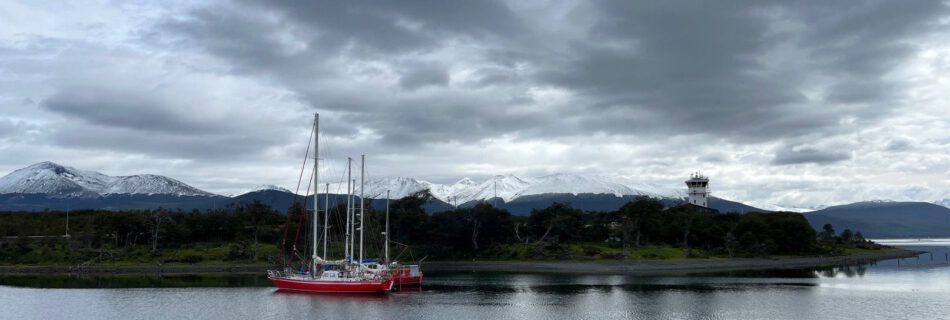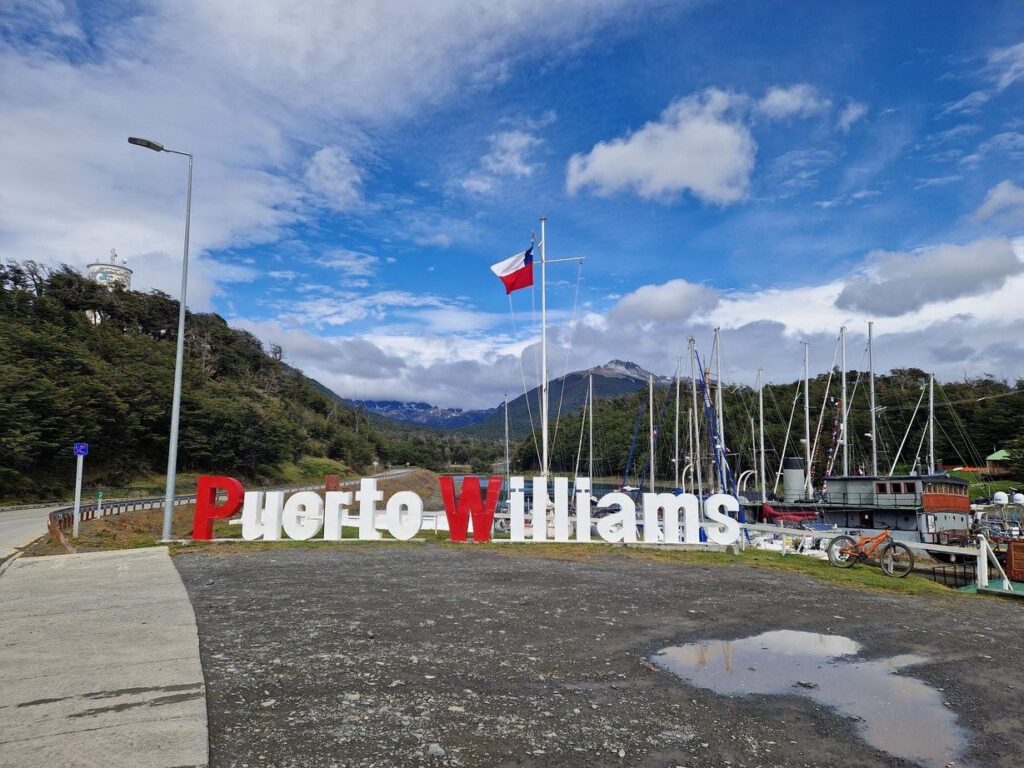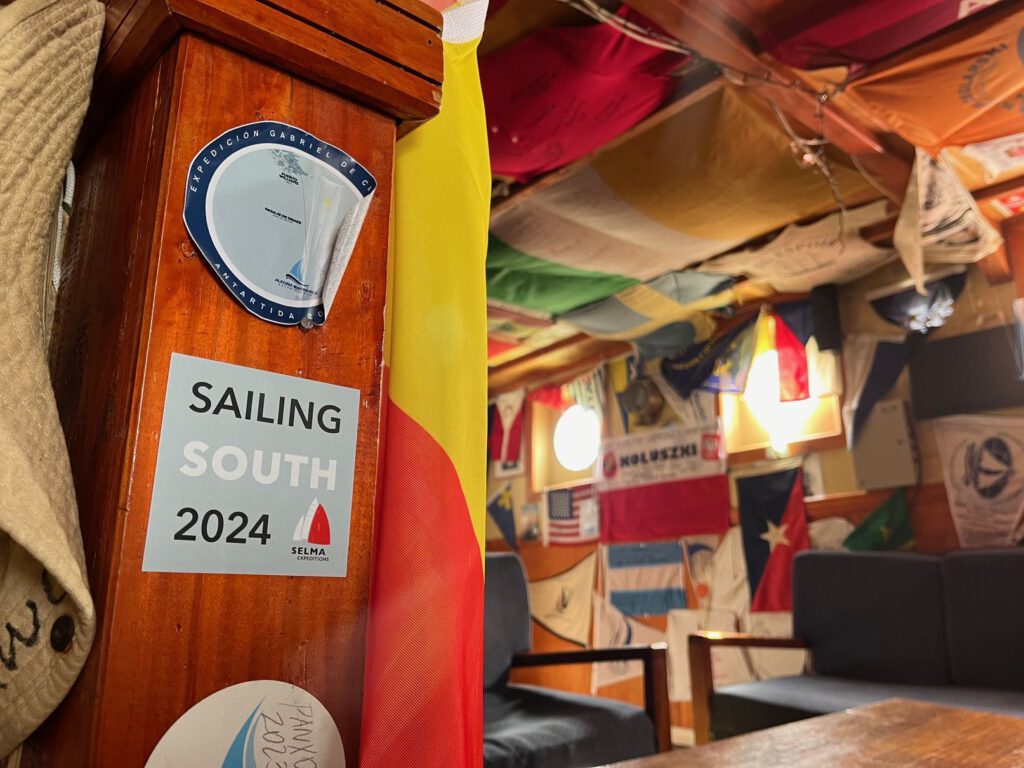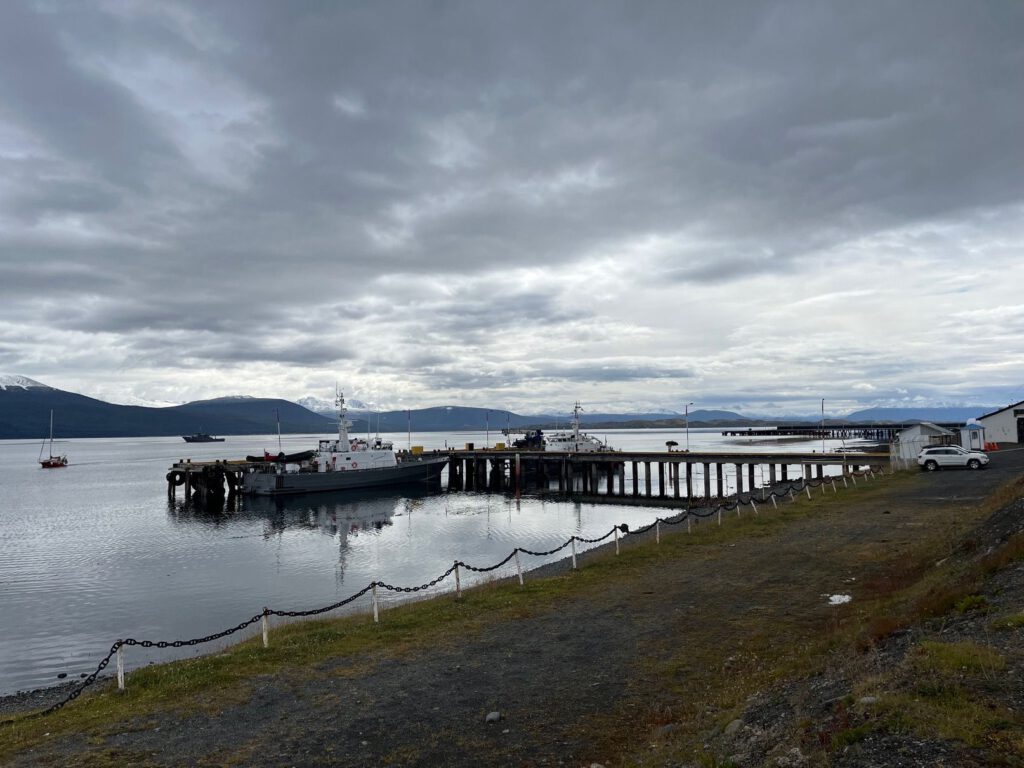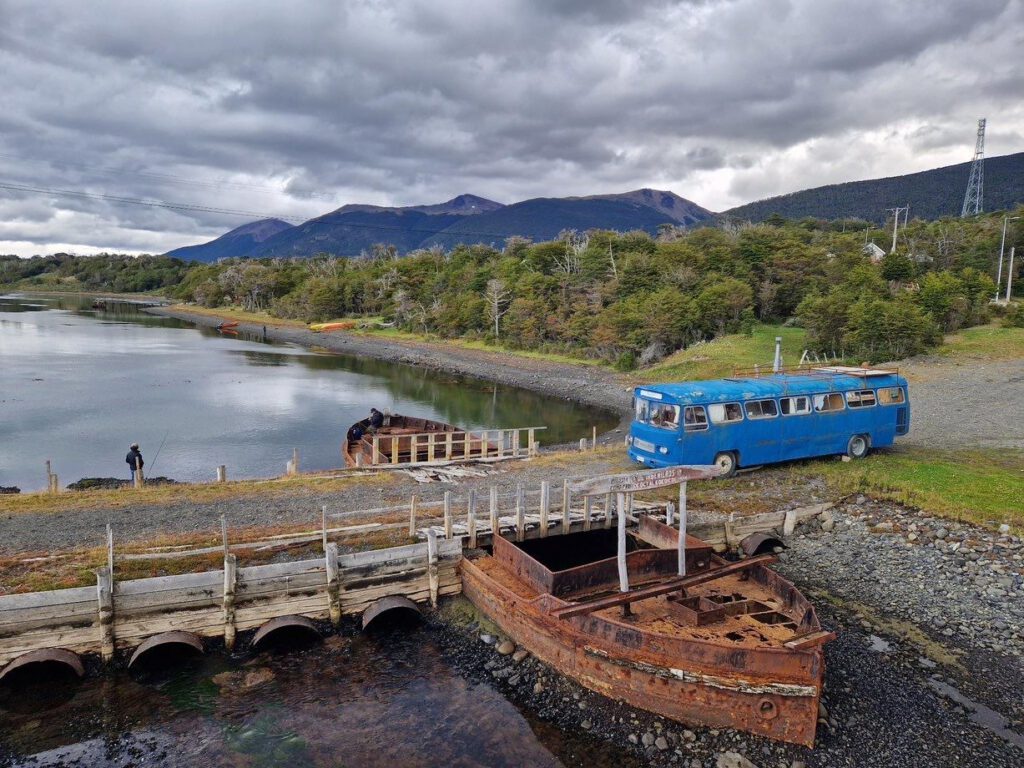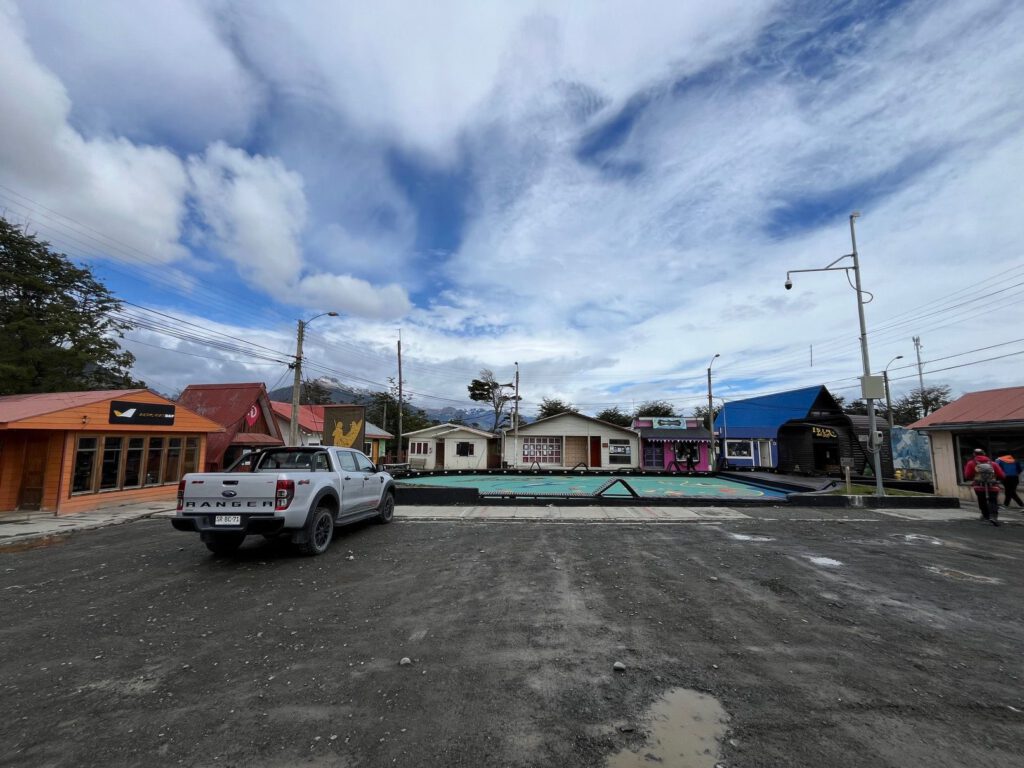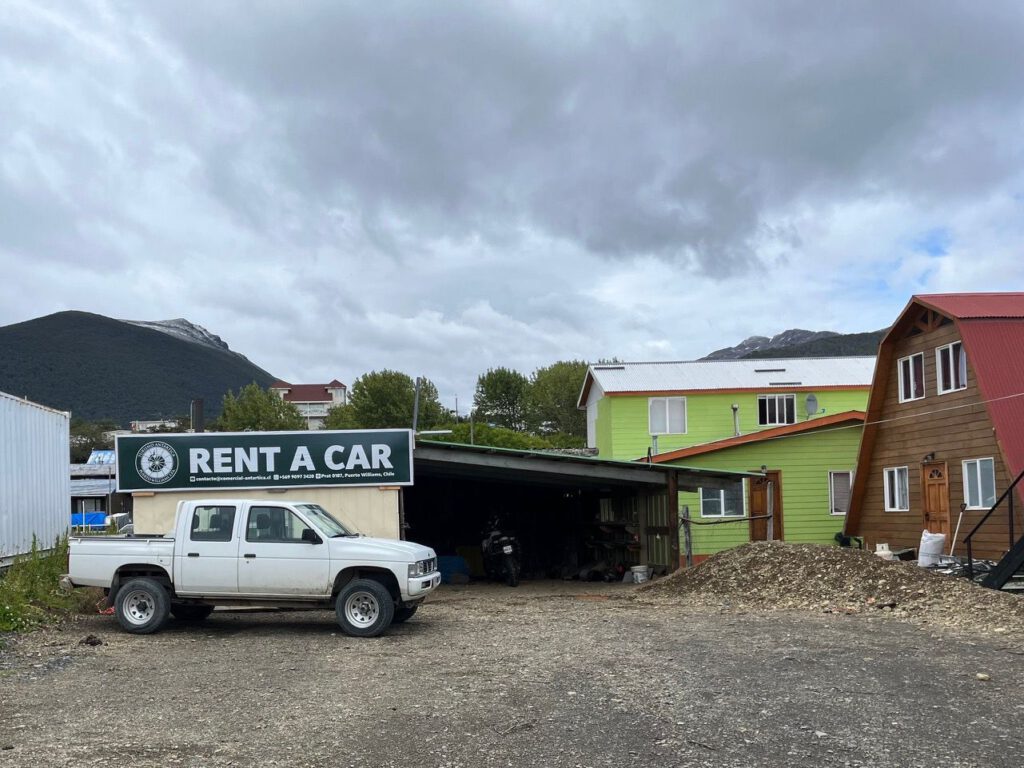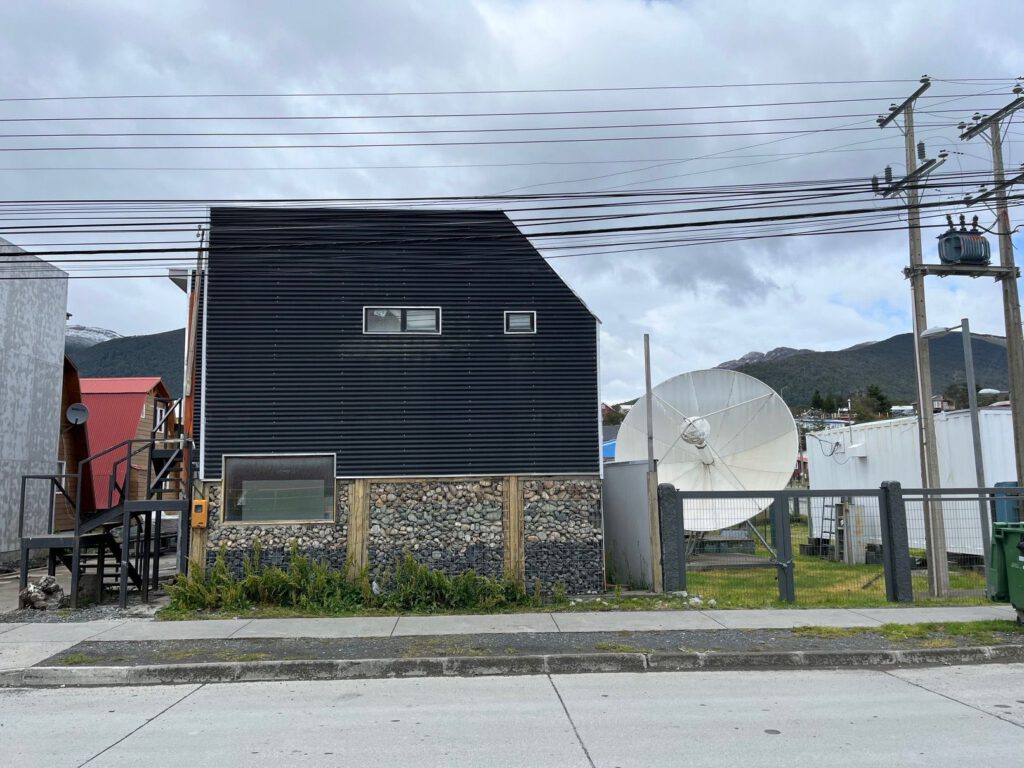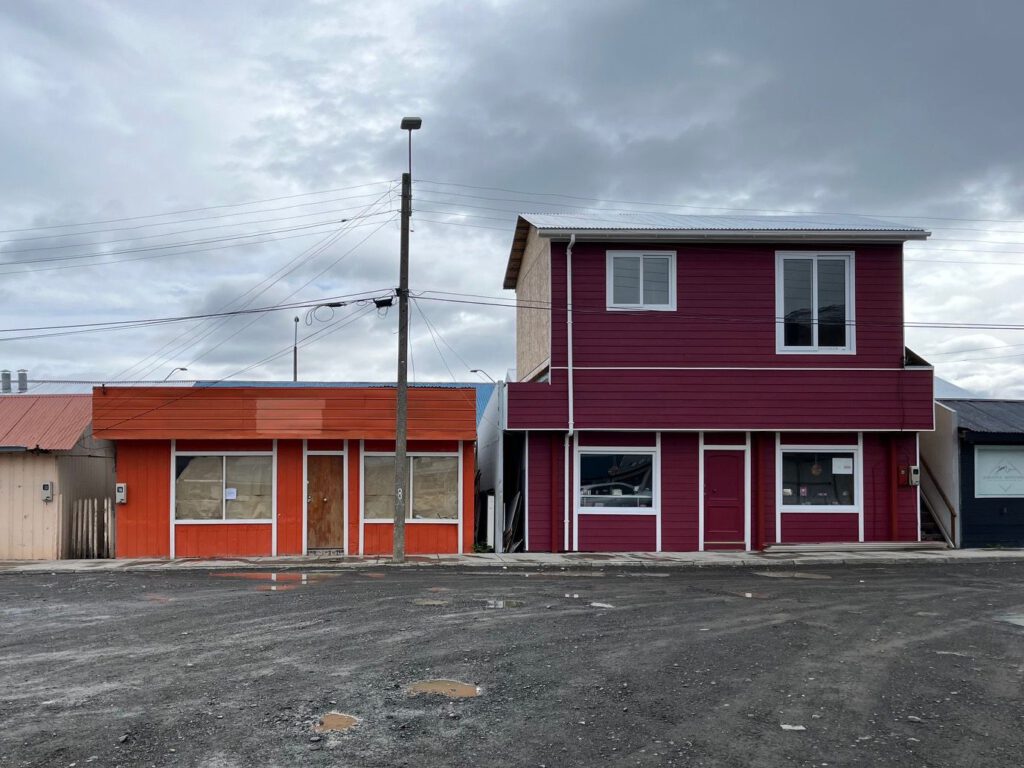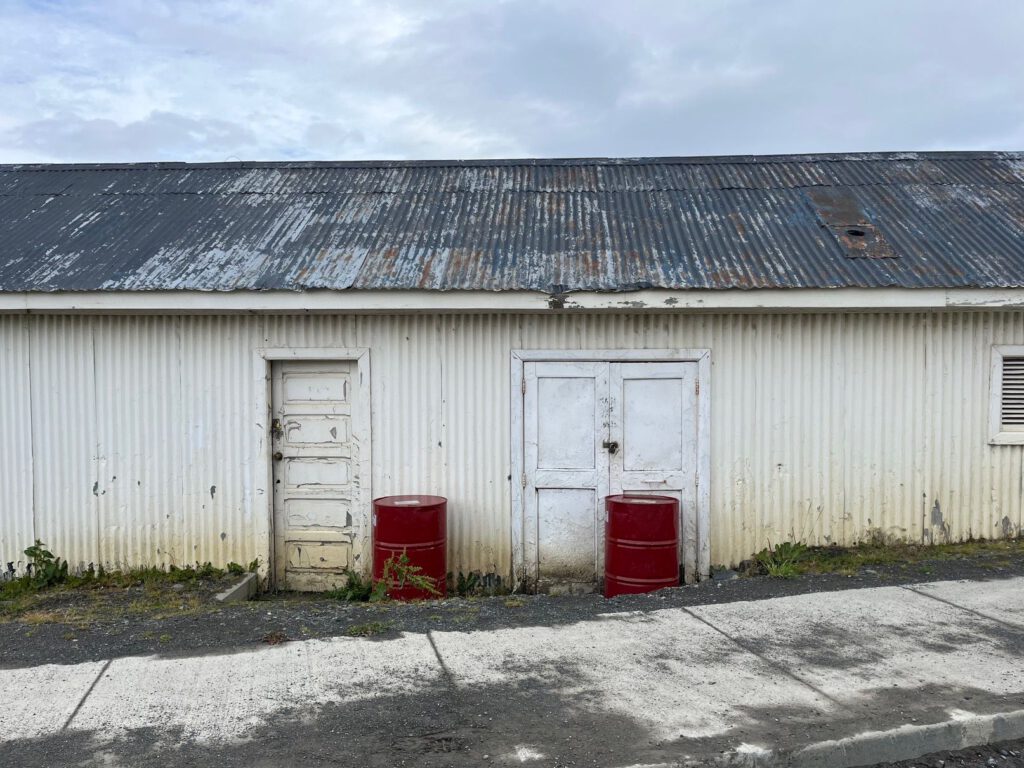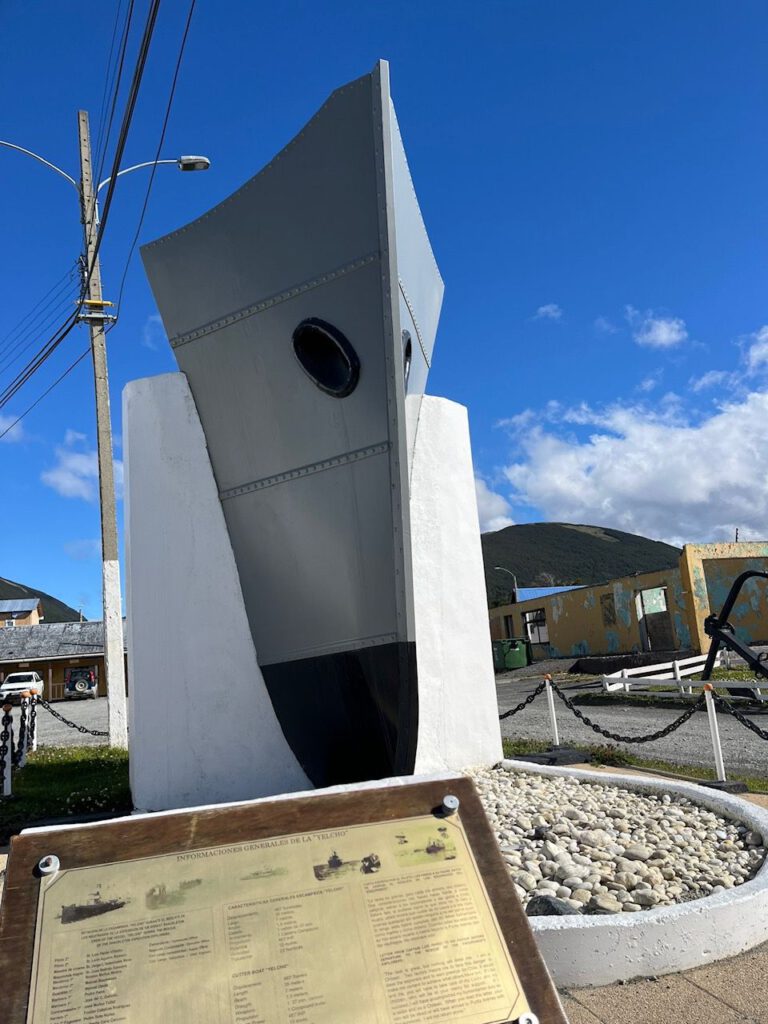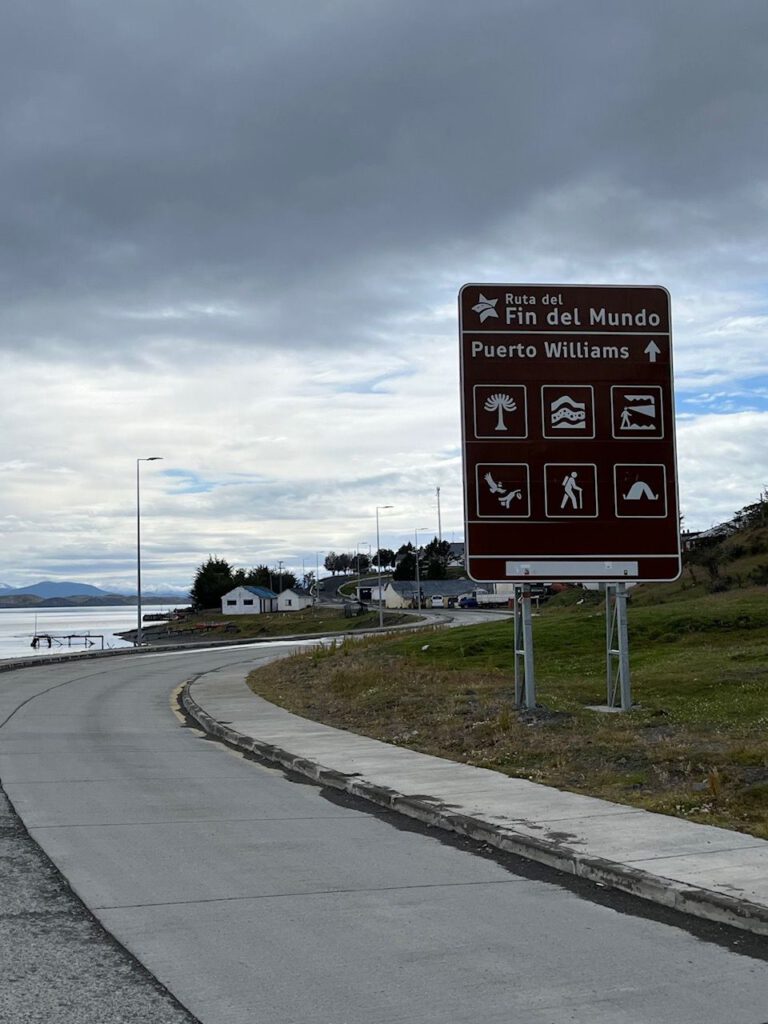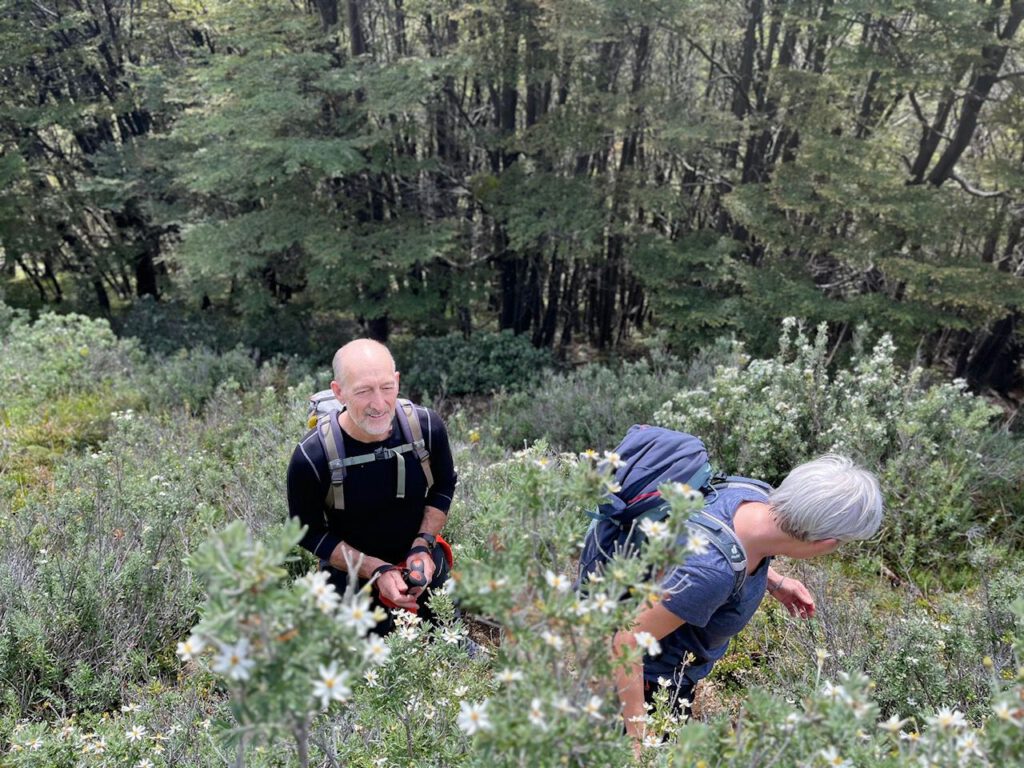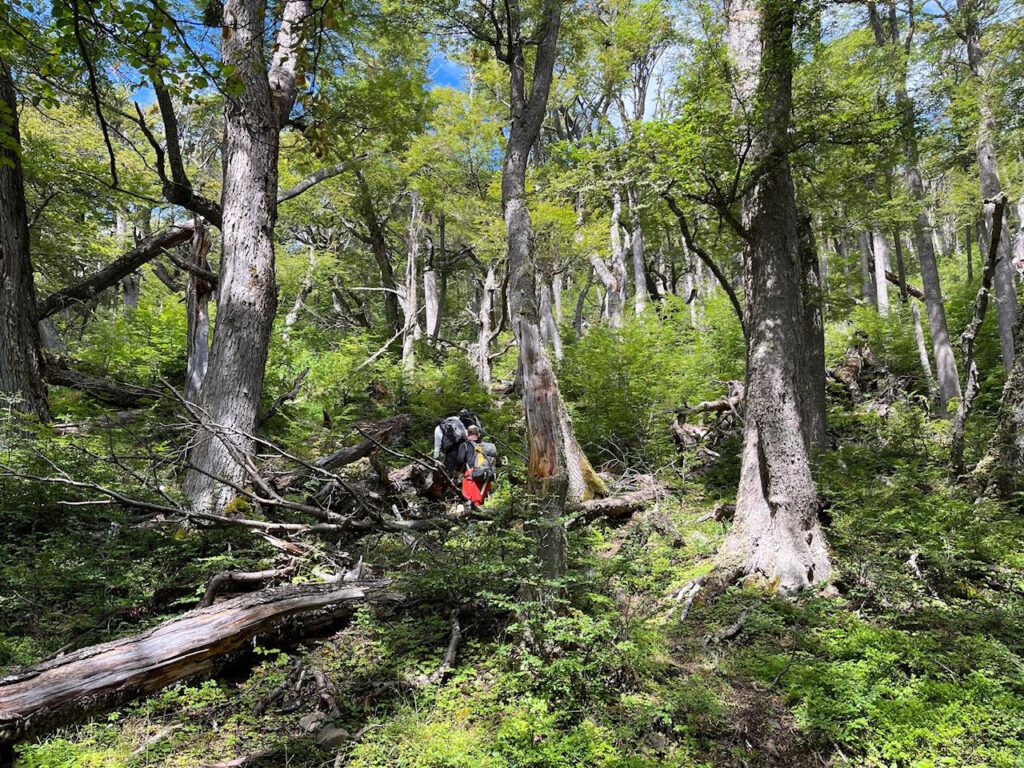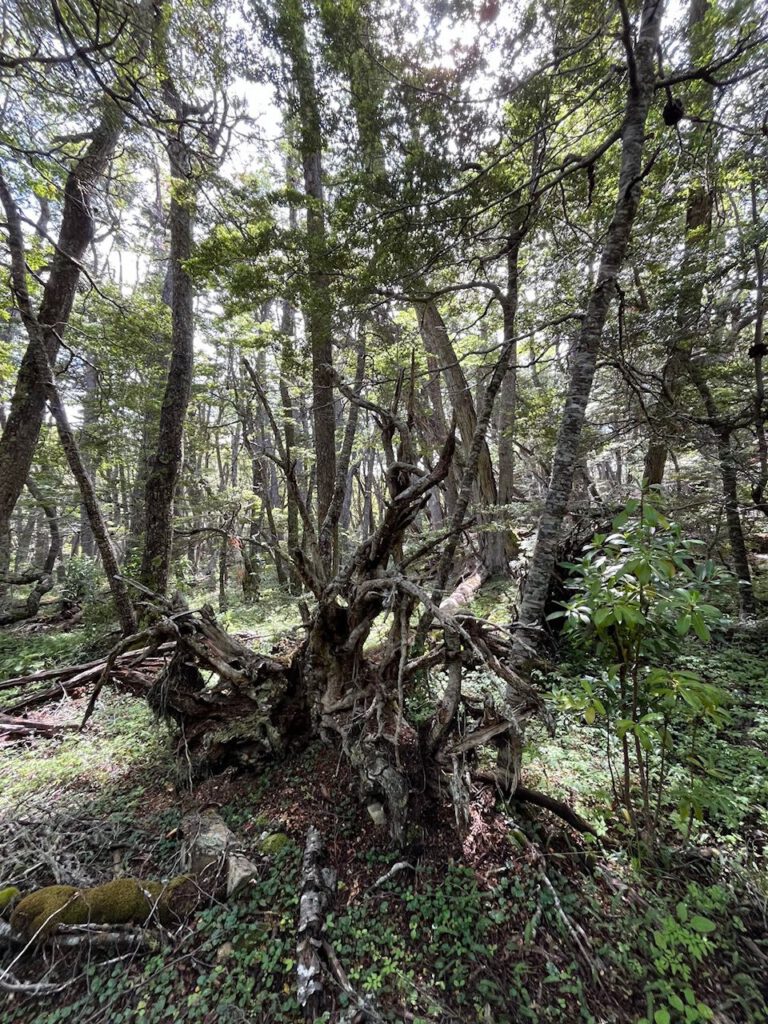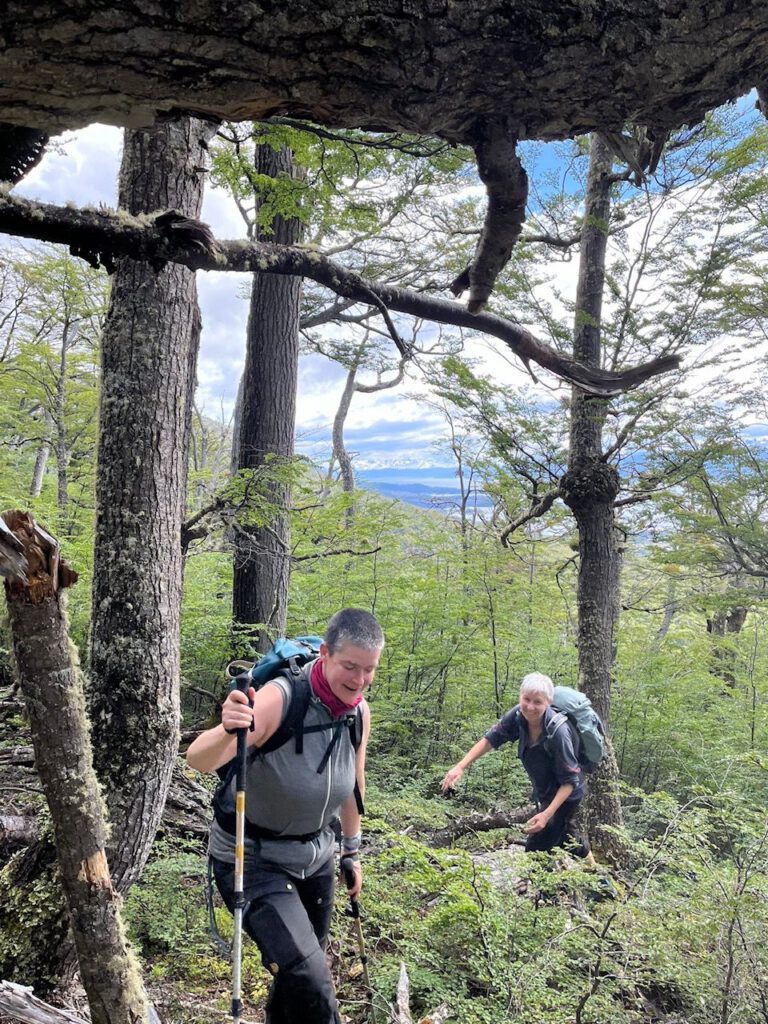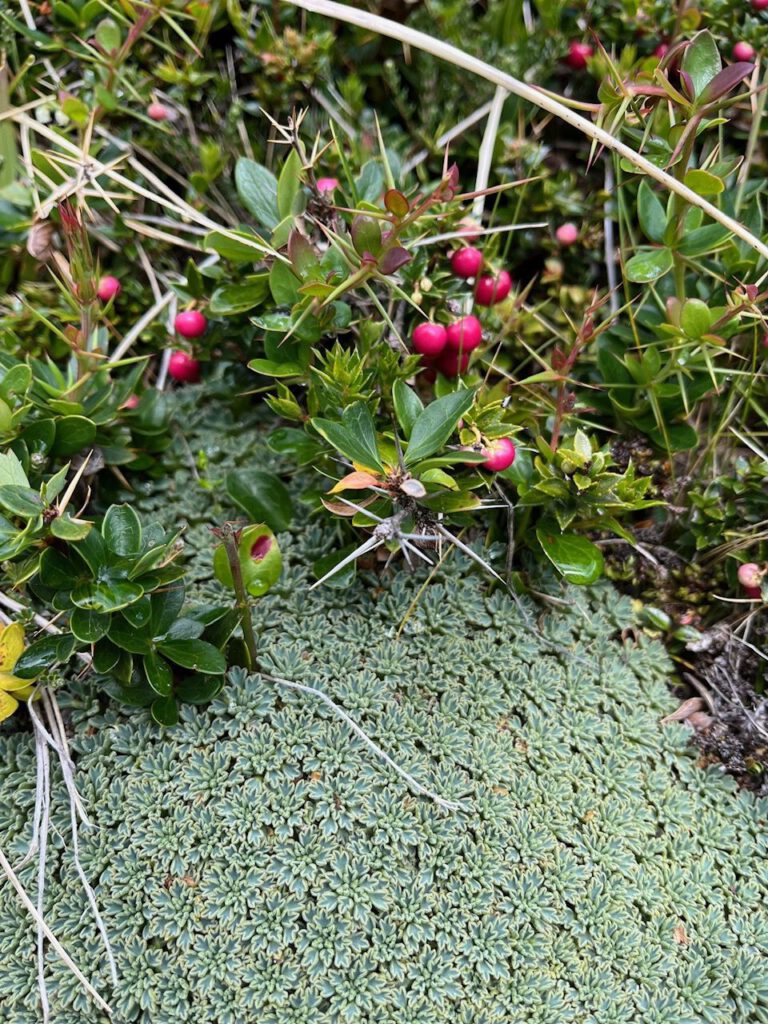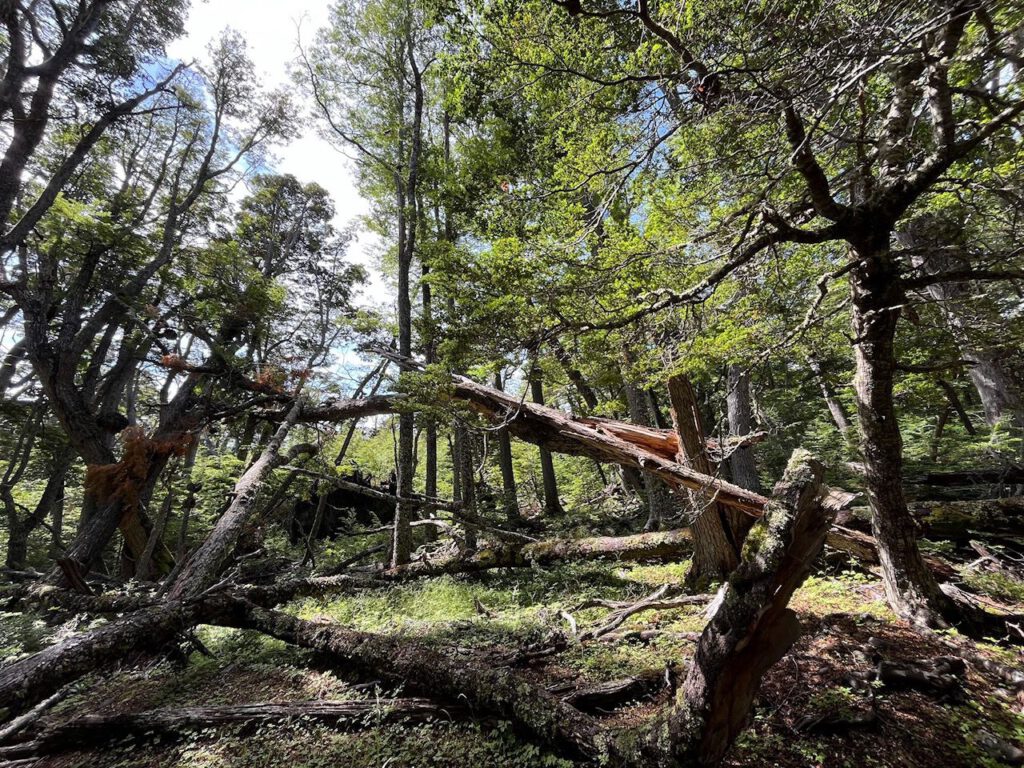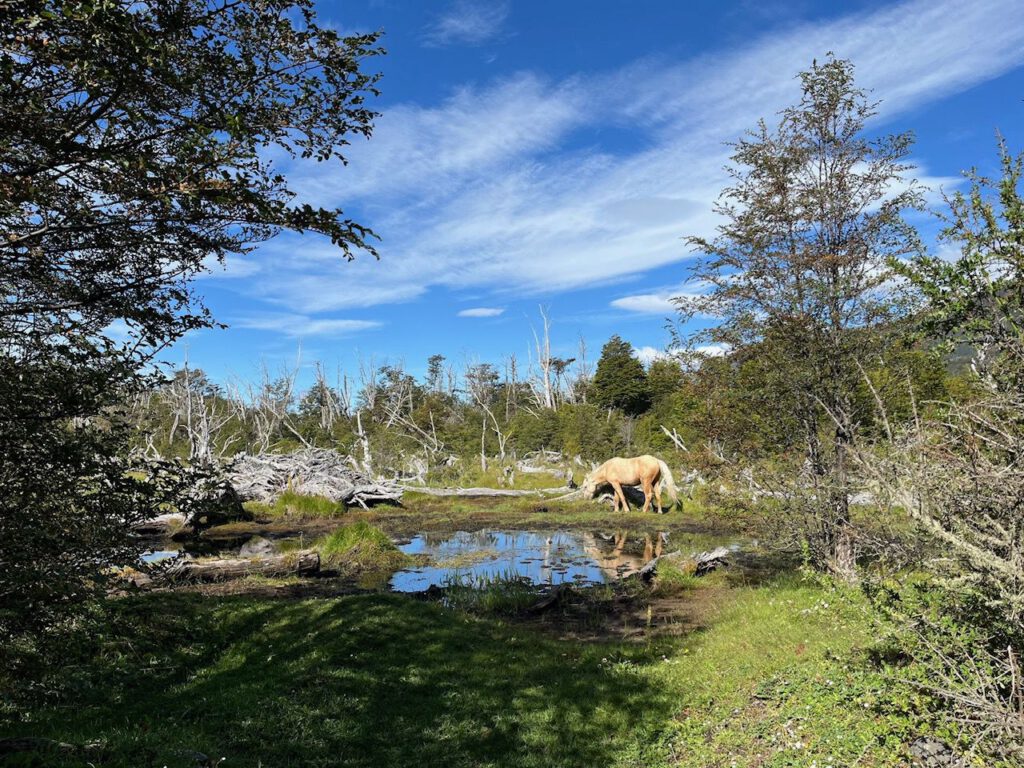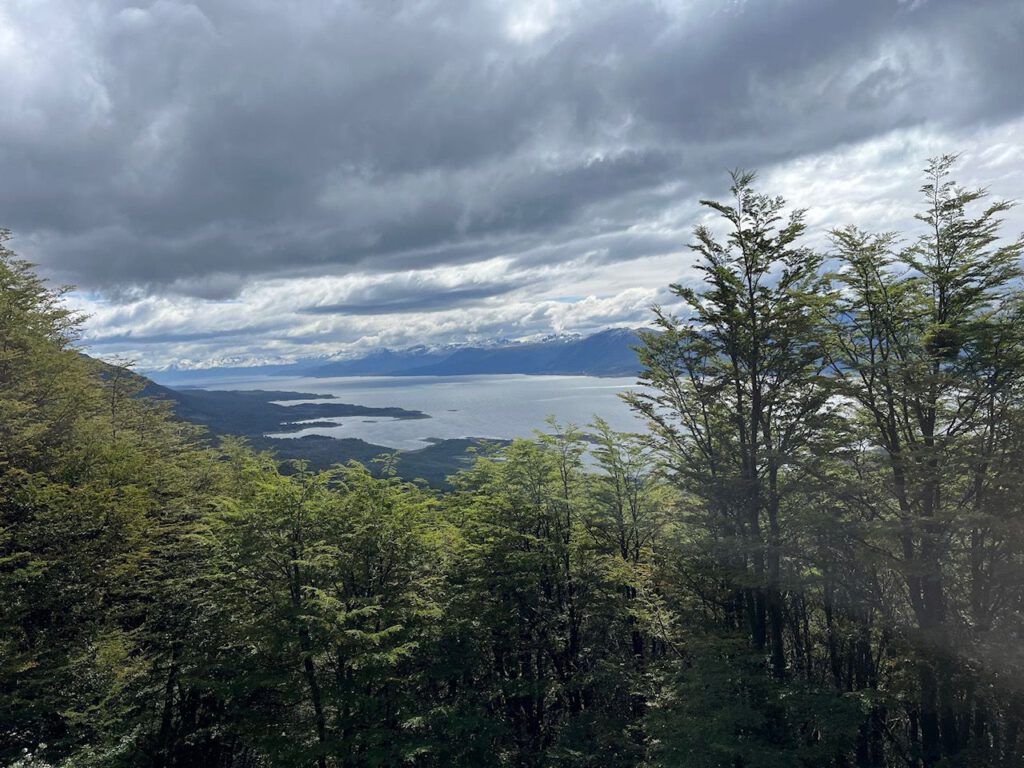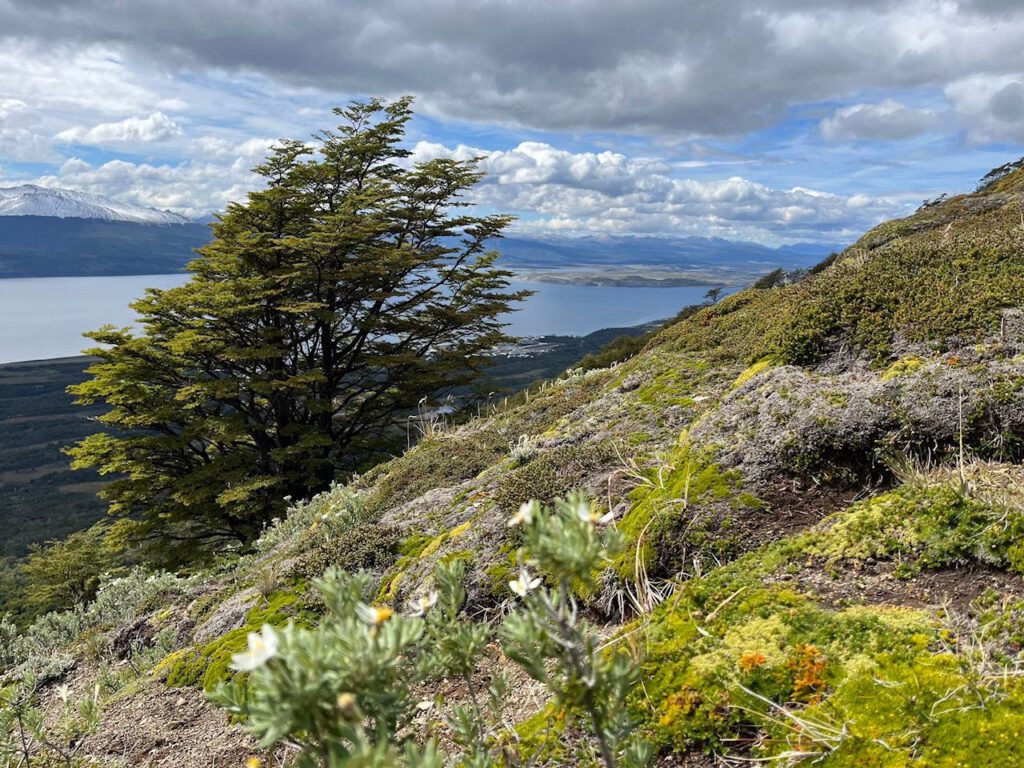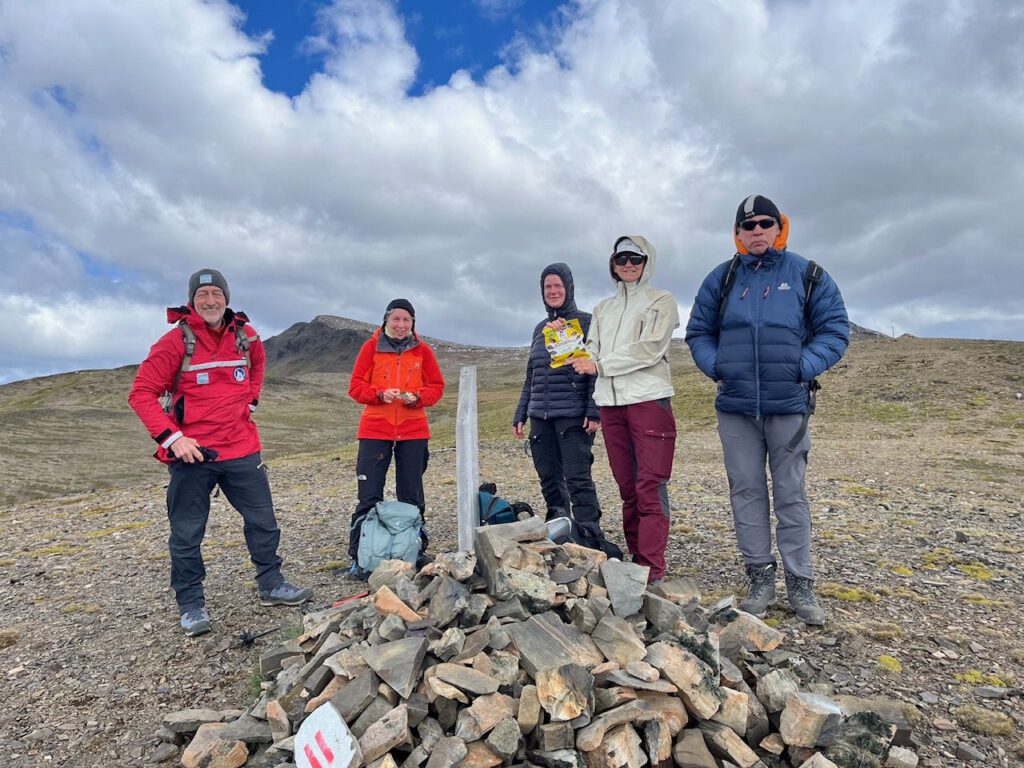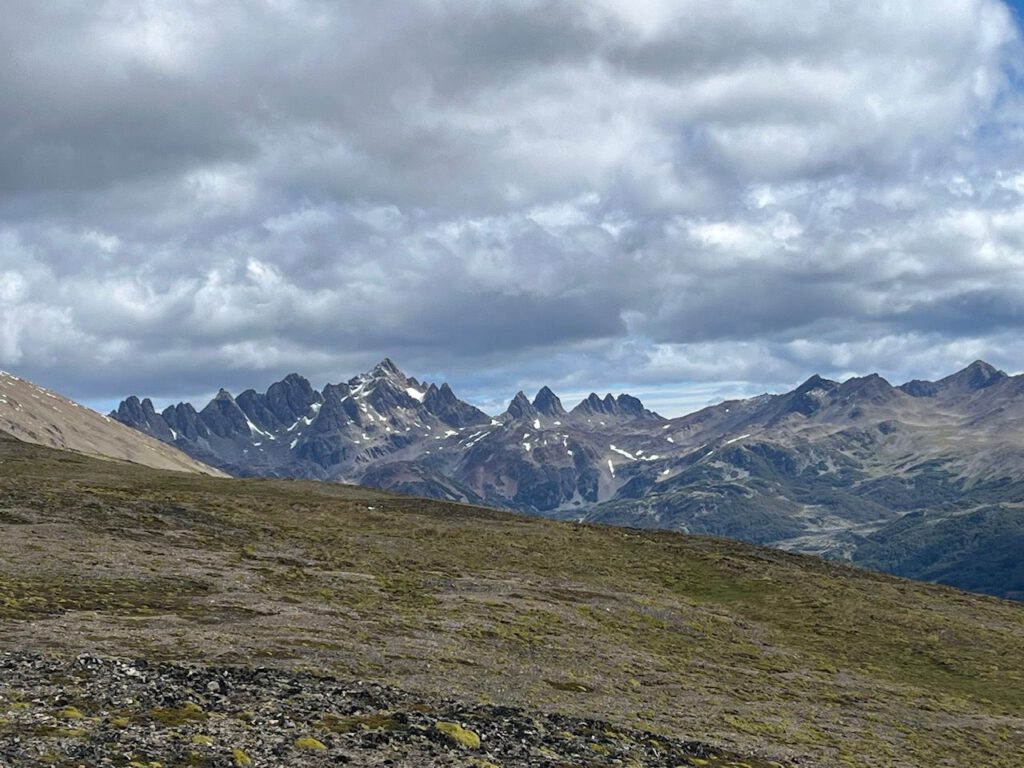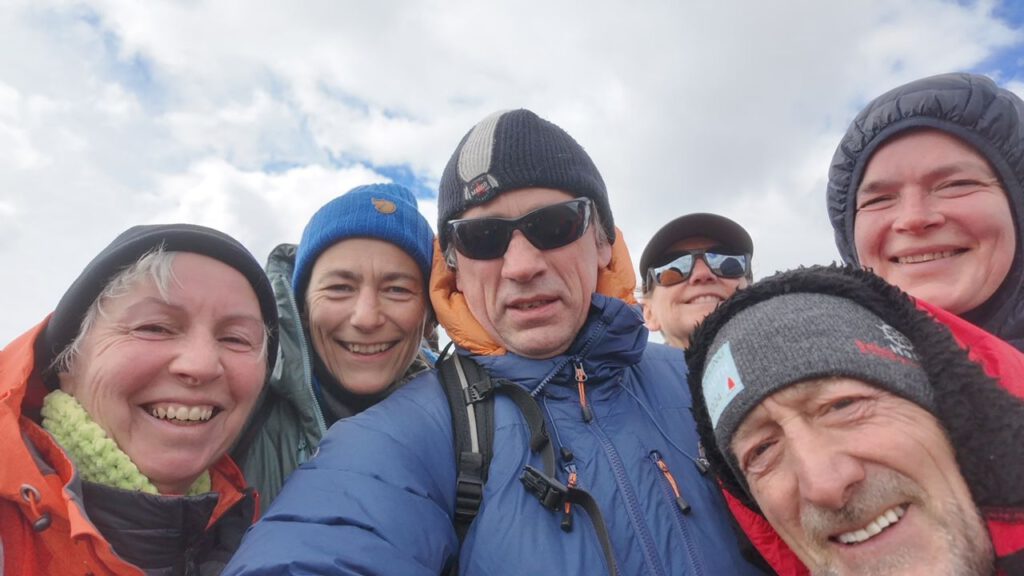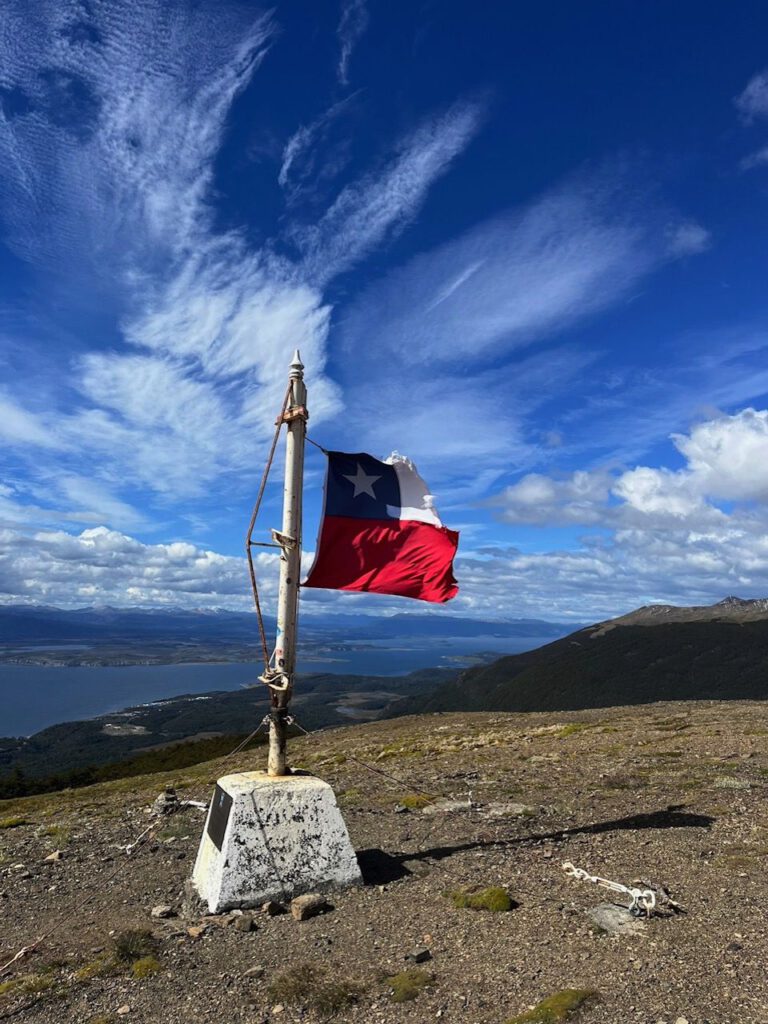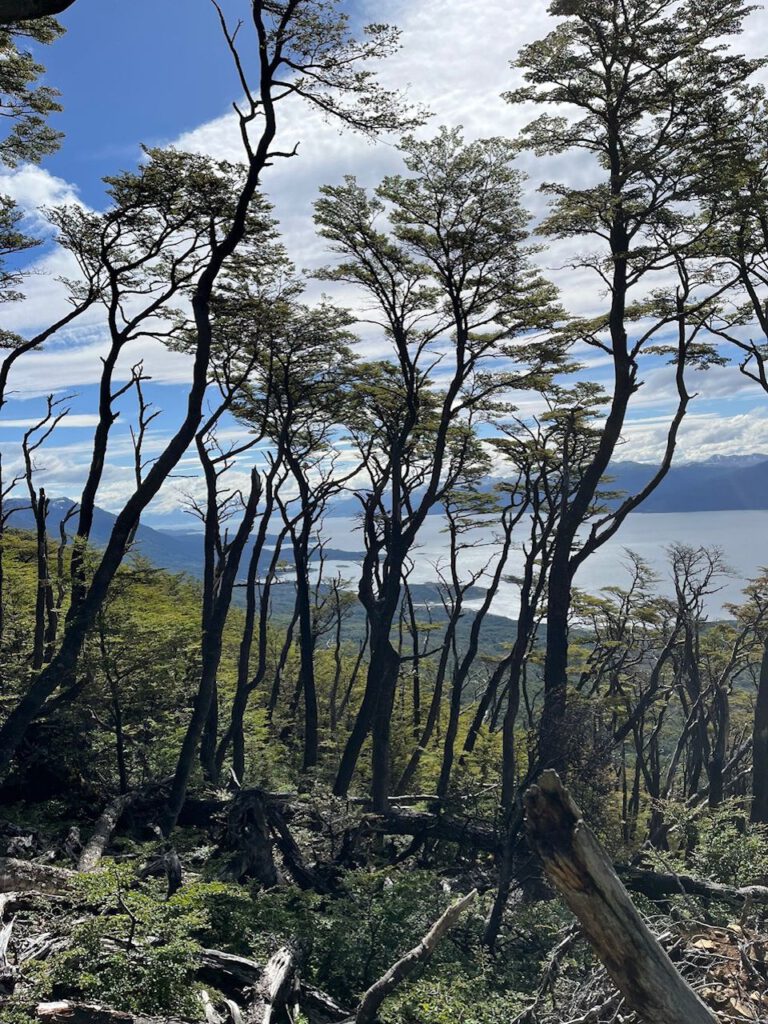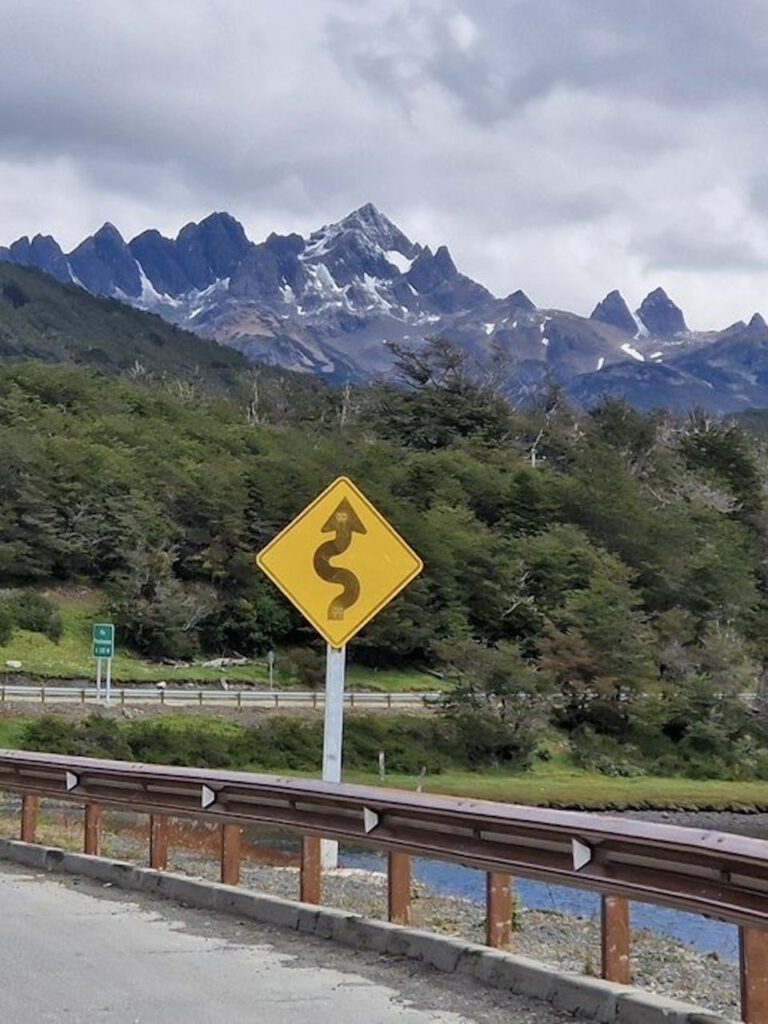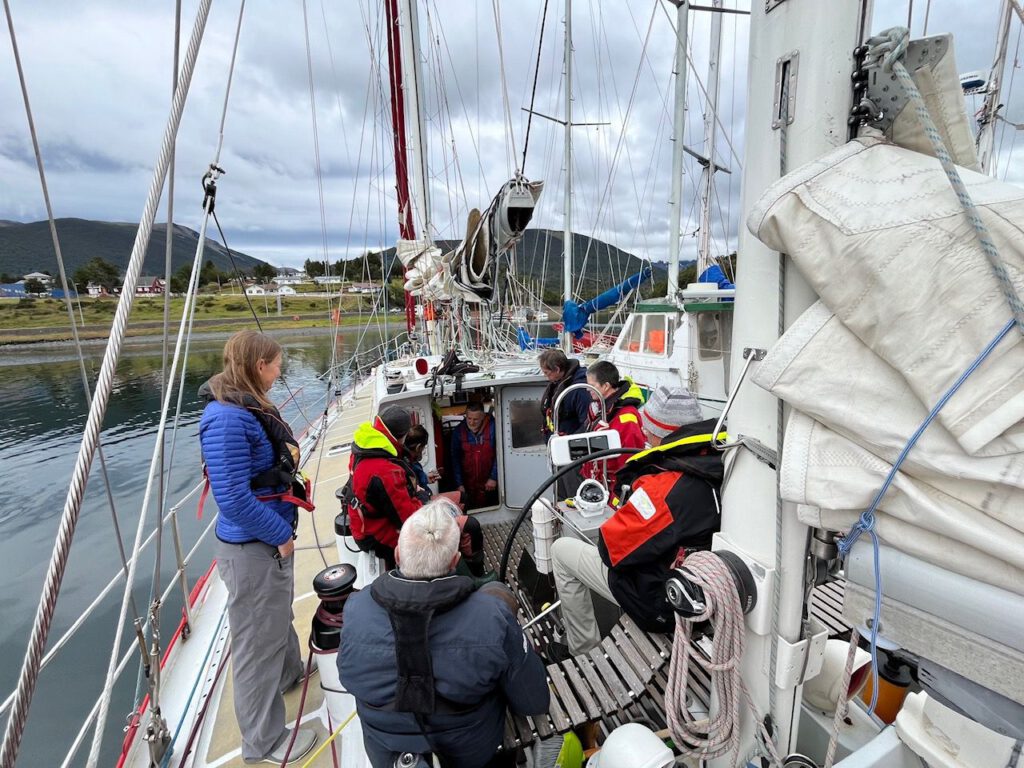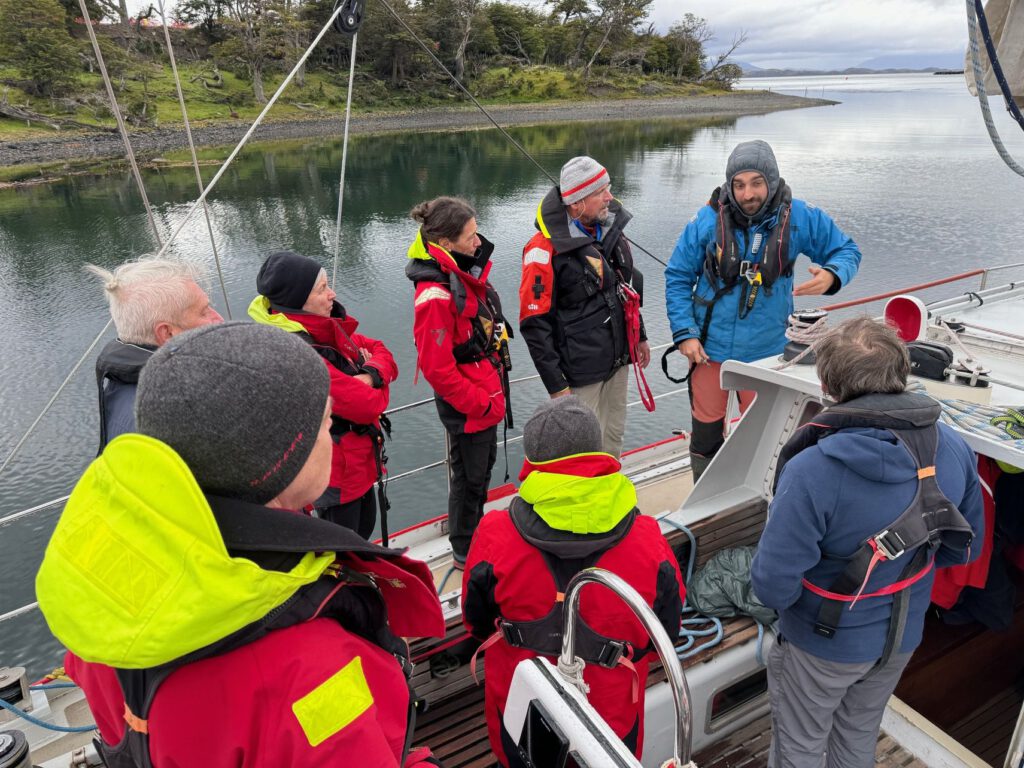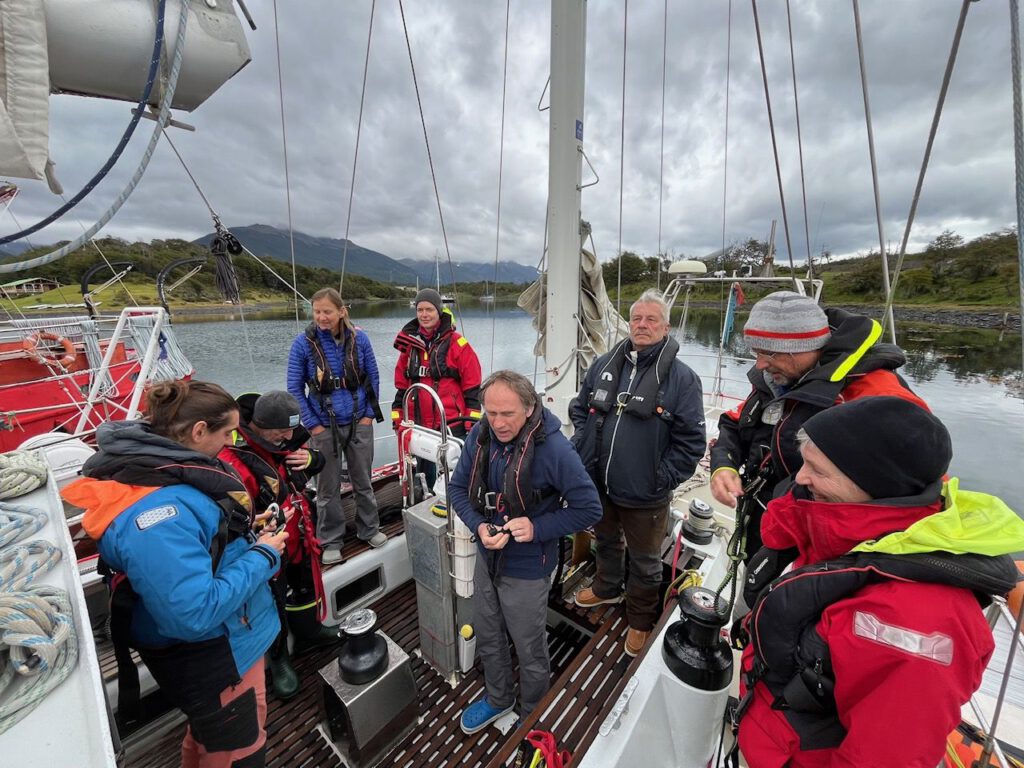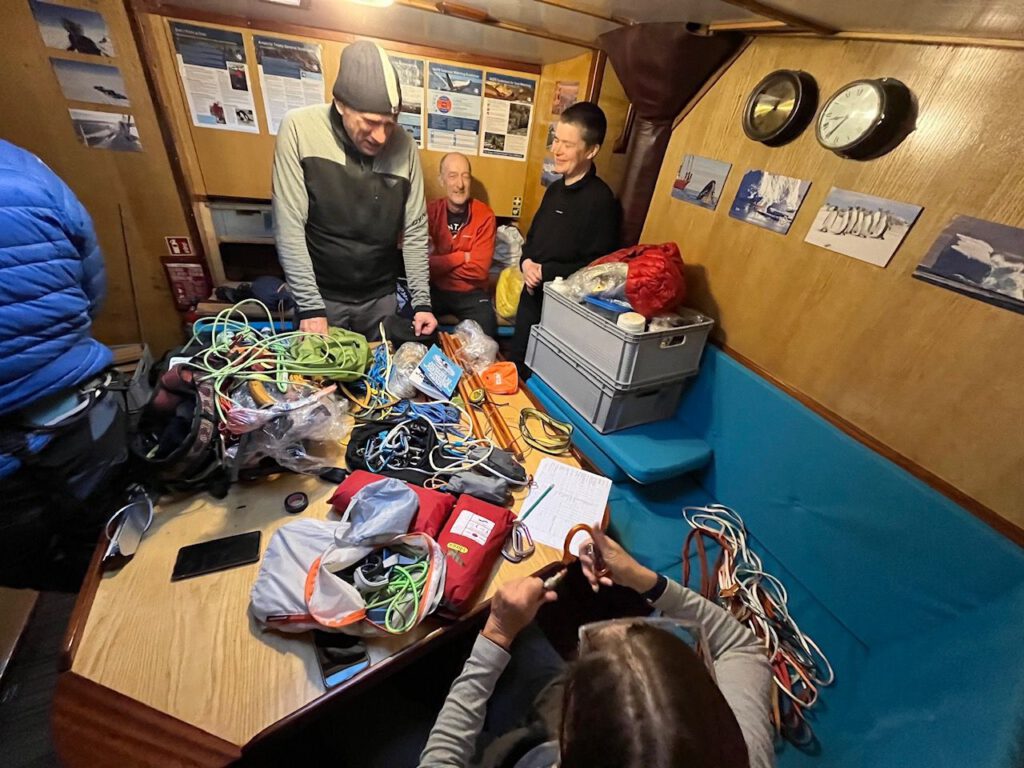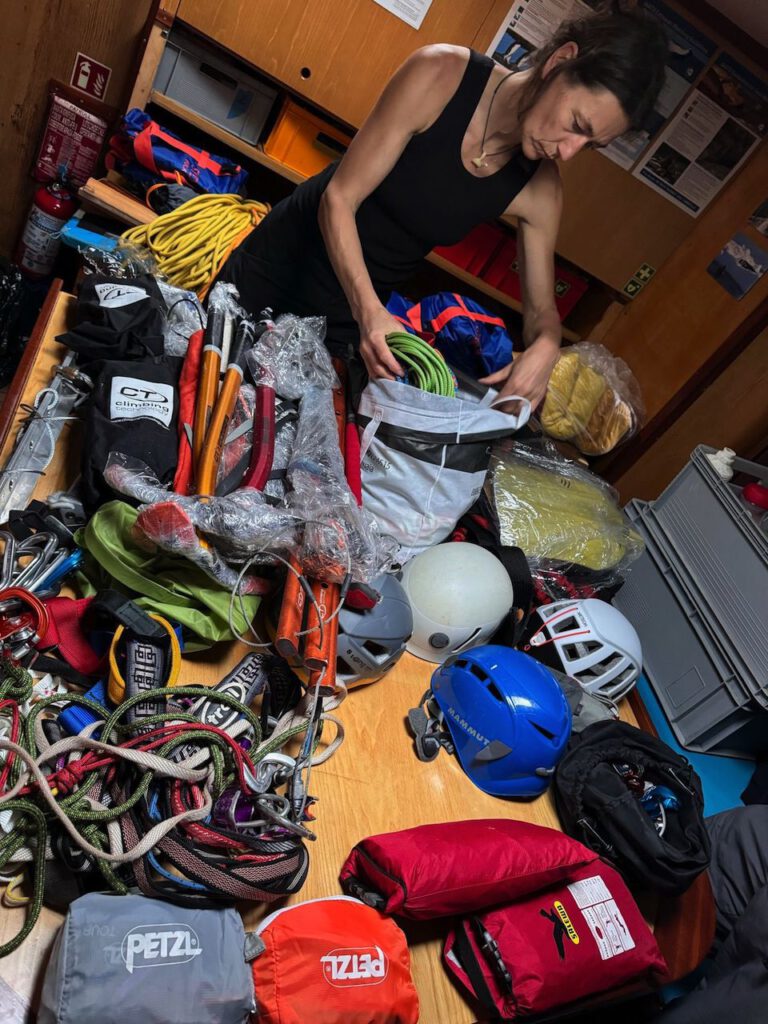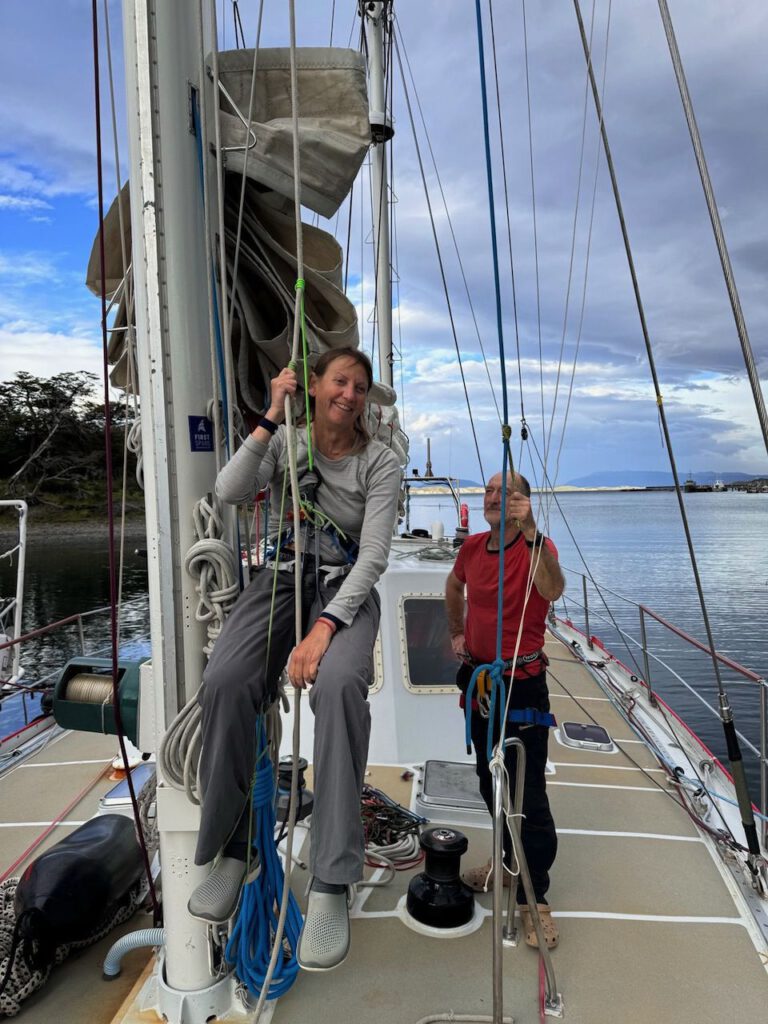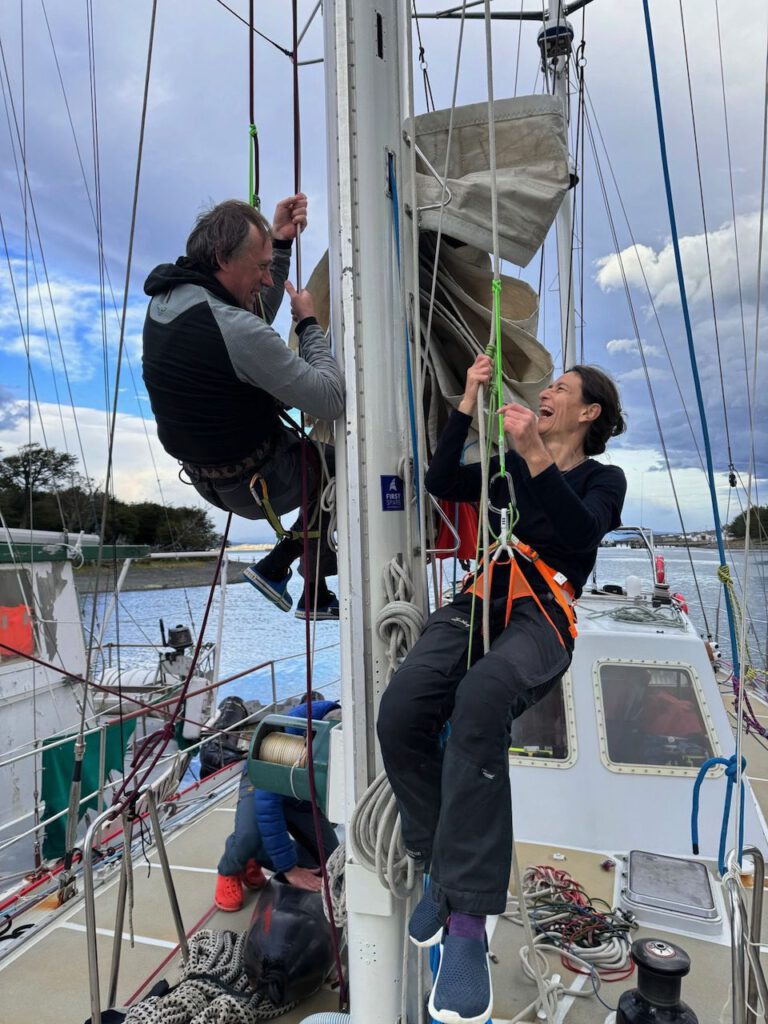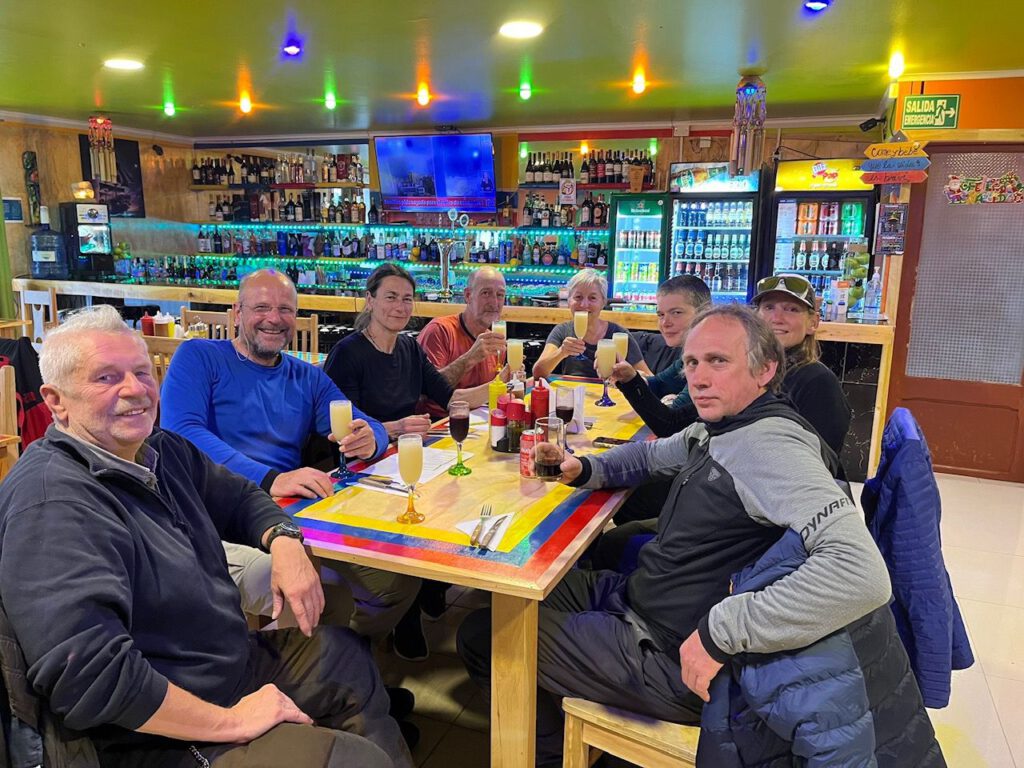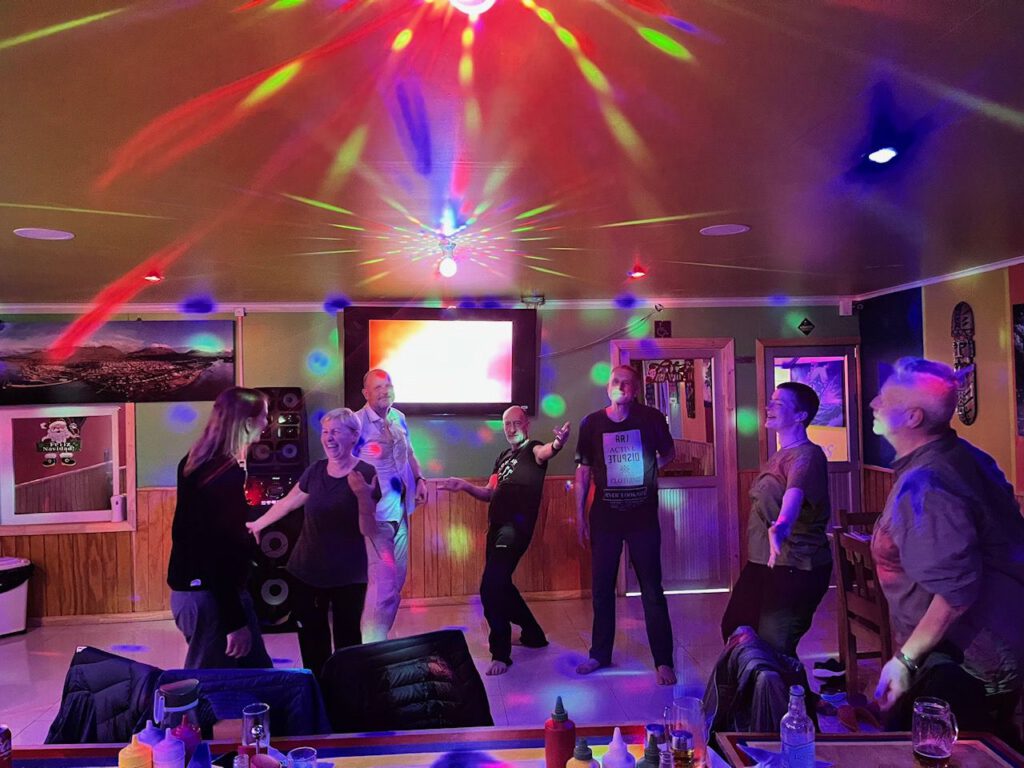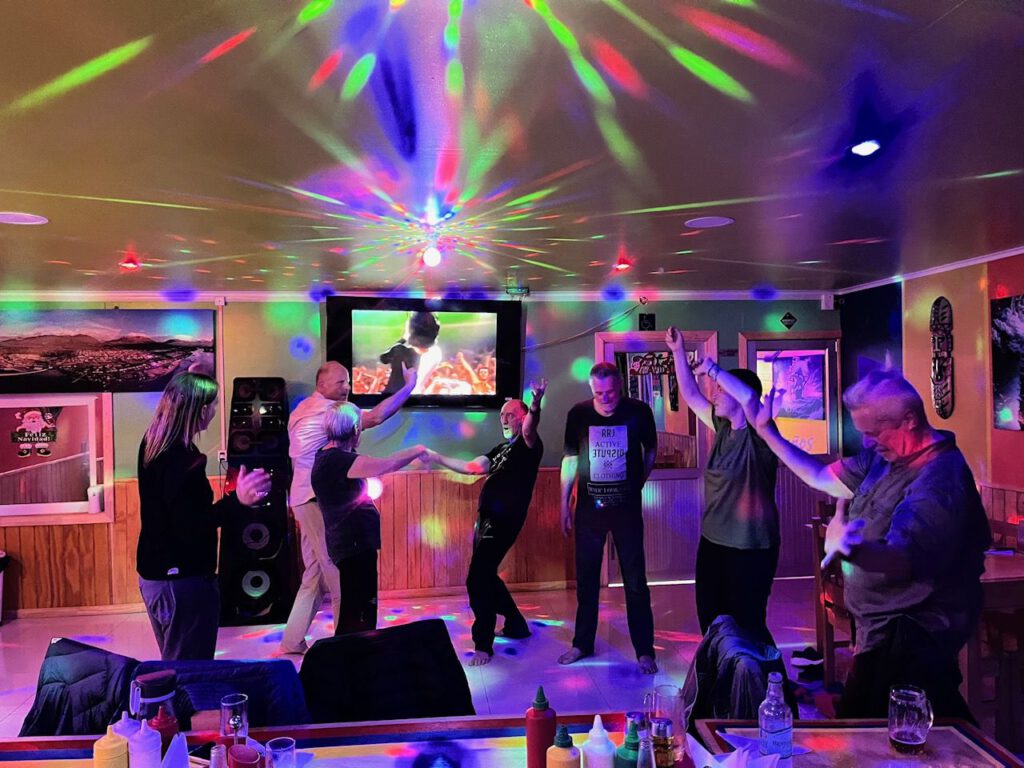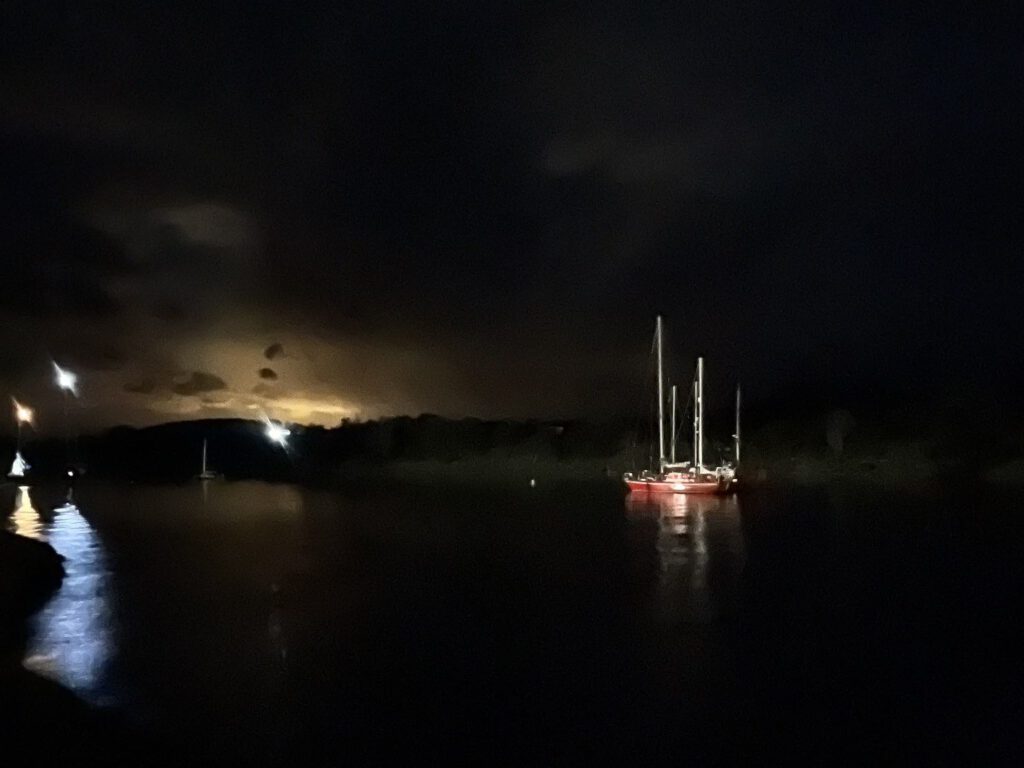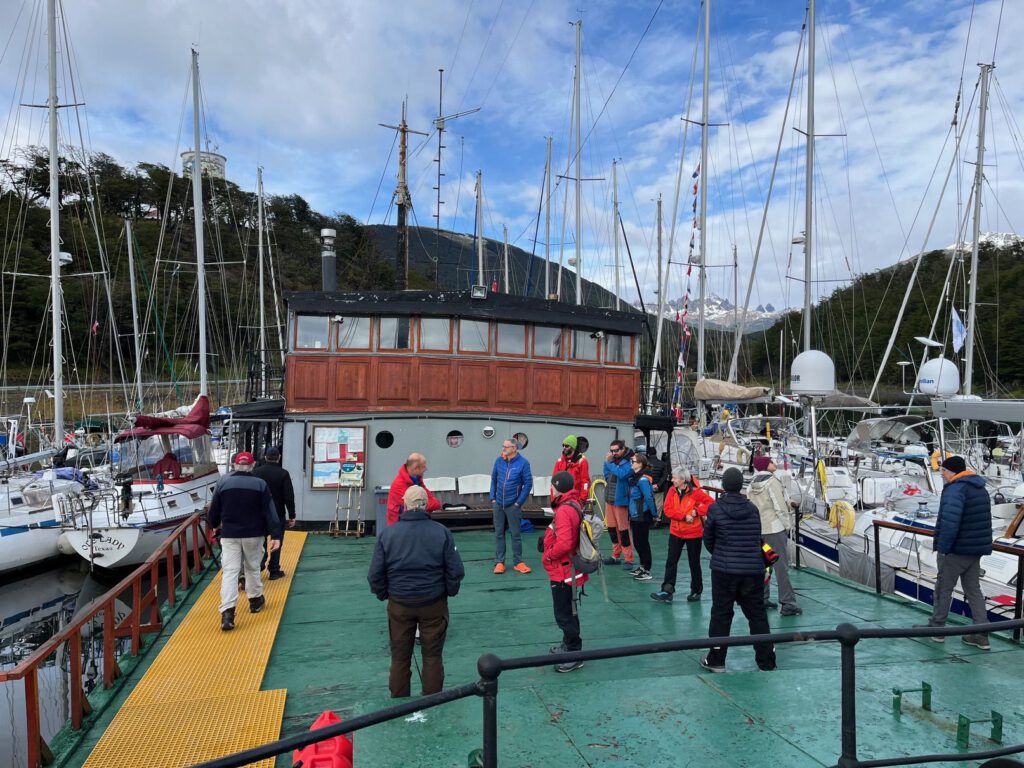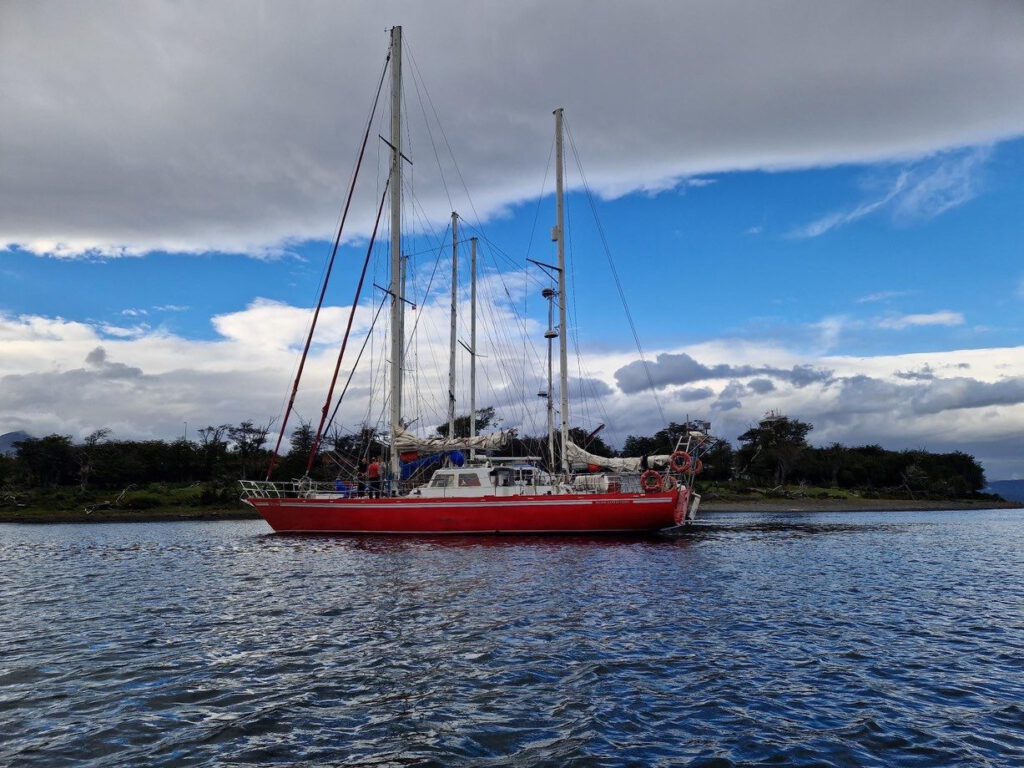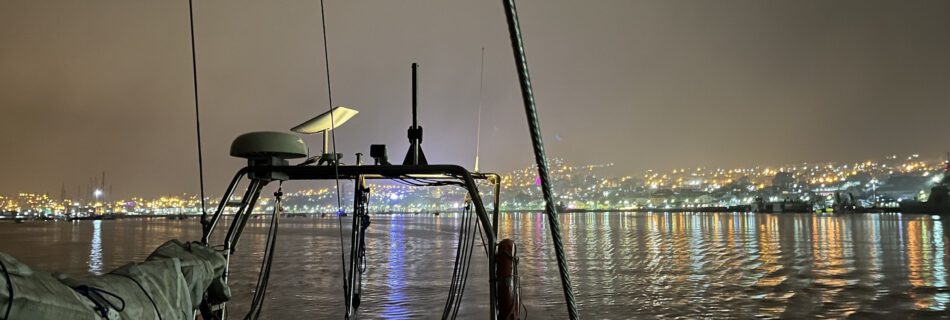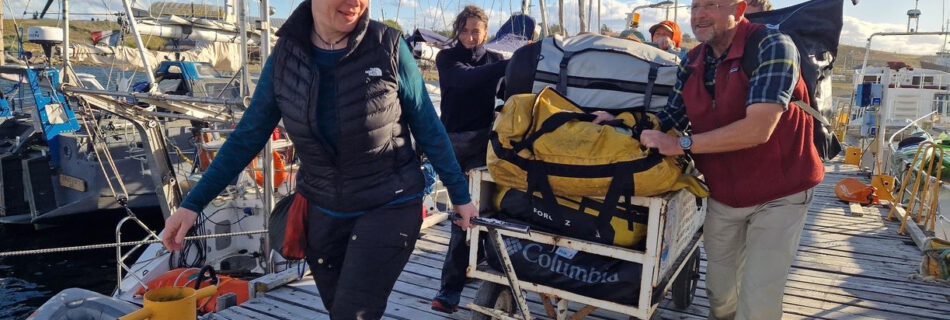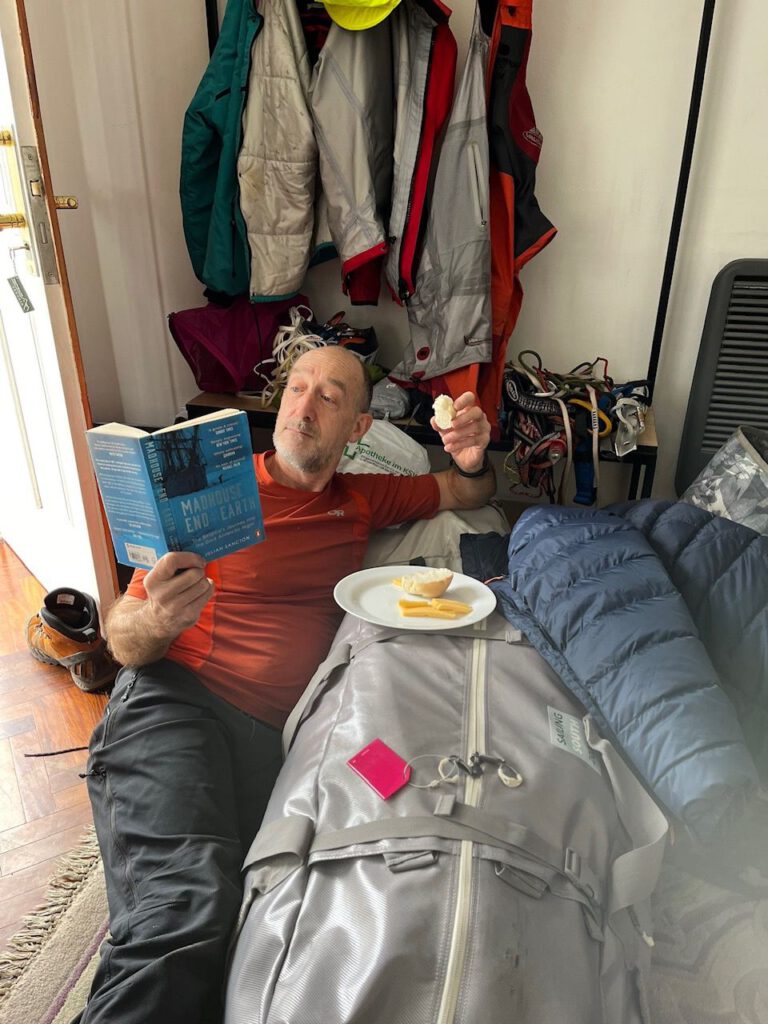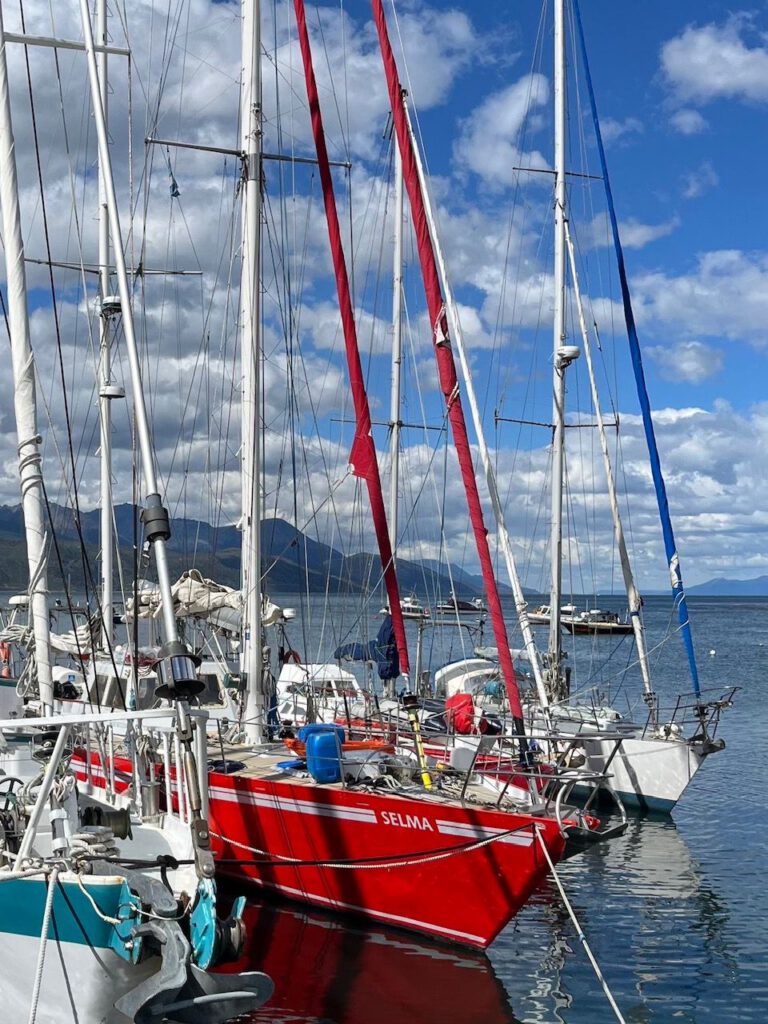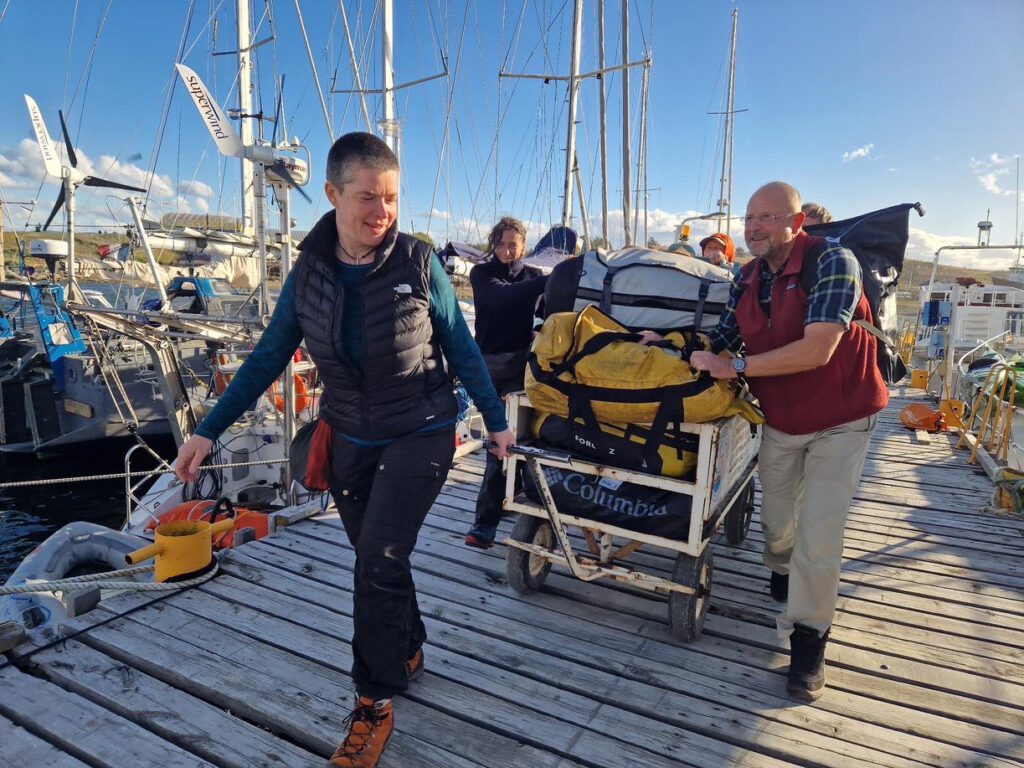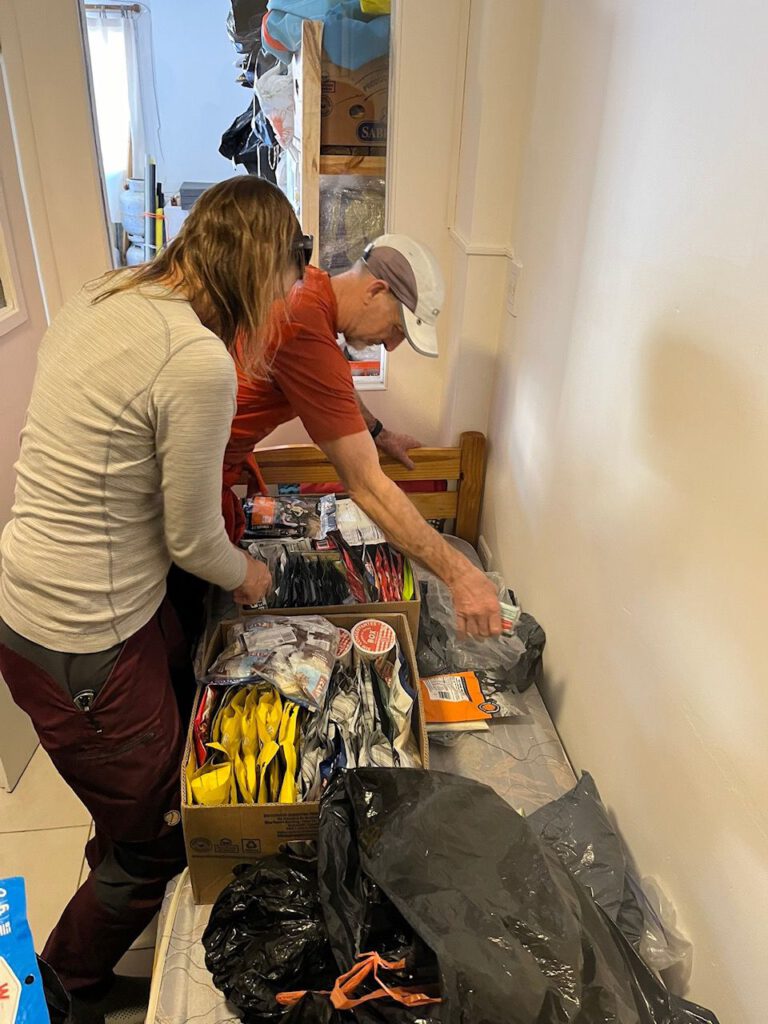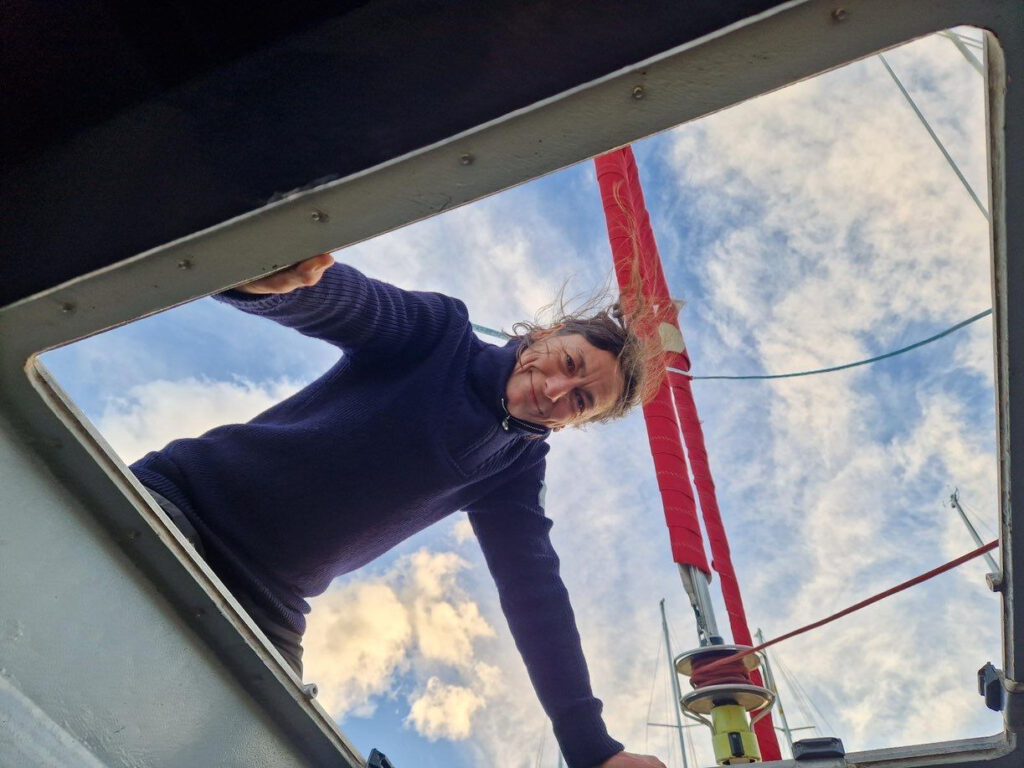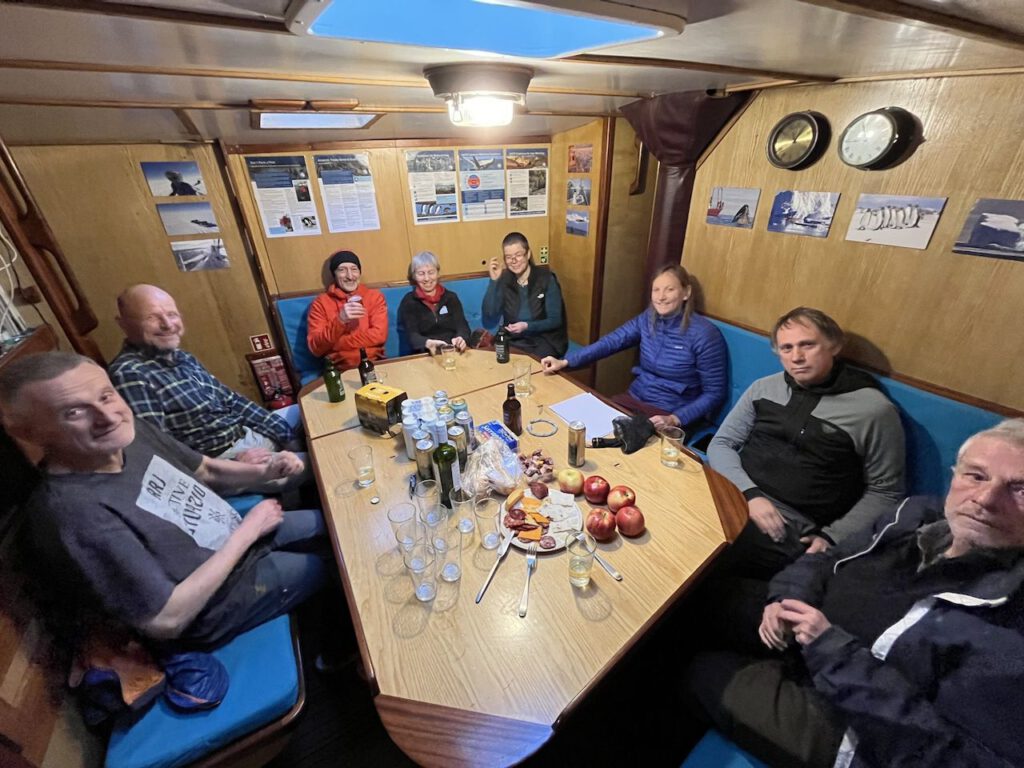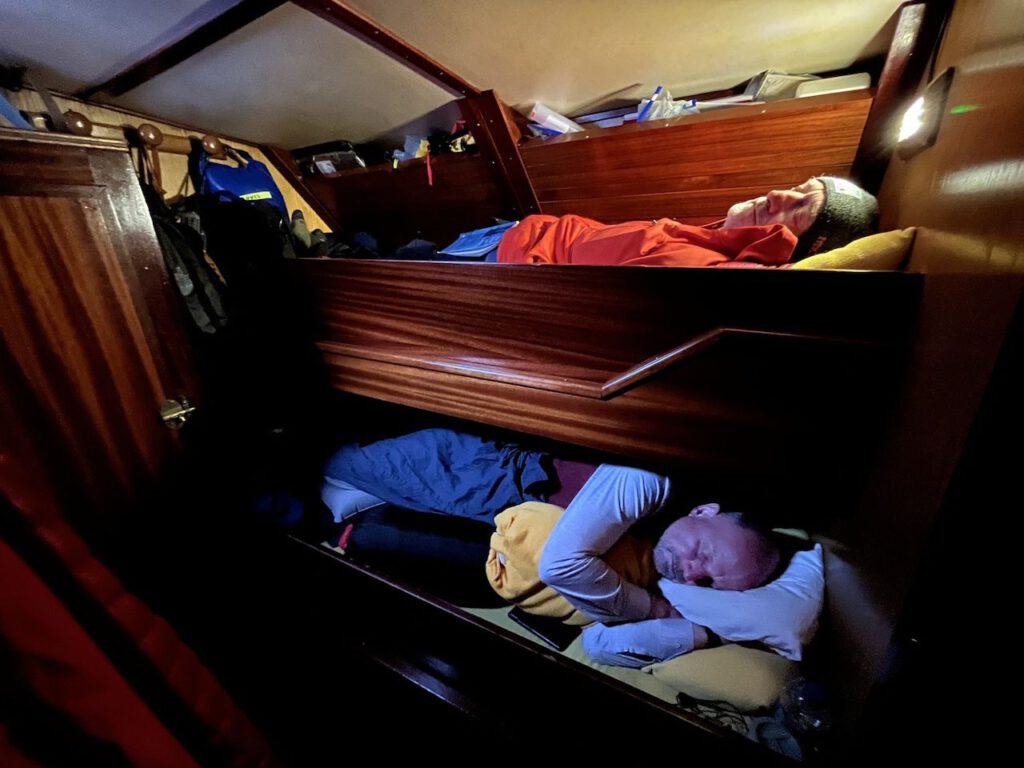What a wonderful moment:
I’m sitting on deck in the sun, wrapped up warm because it’s really cold. The Selma’s wheelhouse provides a little shade from the wind. The wind is blowing strongly, with fierce gusts from the south that tug at the anchor chain. But we are well protected in a bay on the north side of Beak Island in Duse Bay in the Weddell Sea. Outside, icebergs in every imaginable shape and shade of white, gray and blue drift by, the water covered in whitecaps. We were here the day before yesterday and know that we are well protected from the wind and the ice drifting in. The options are limited at the moment due to the current strong winds and the many bays blocked by ice or threatened by drifting ice.
Almost the entire rest of the crew is ashore. I use the quiet time on board for a short break, to pause for a moment. The last few days have been very intense, filled with experiences, magical moments, discoveries, encounters… I have enjoyed them, we have all enjoyed them and soaked them up like a sponge. The Drake Passage, the first steps on Antarctic soil, the fascinating, vast landscape, the icy strong wind, icebergs, ice floes, drift ice, pack ice … the already numerous encounters with animals, including humpback whales, orcas, fin whales, fur seals, Weddell seals, leopard seals, elephant seals, various penguin species and numerous seabirds.
All these impressions, one more beautiful and overwhelming than the next, first need to be processed and sorted… the hard disk is full, so to speak, and needs some maintenance.
The days become blurred, drifting into one another like the drifting ice all around. What was yesterday? What was the day before yesterday? Sometimes it’s hard to tell, irrelevant anyway. Here and now is the benchmark in the Antarctic. Every moment is something special, a gift. Pure happiness to be here, to be able to experience and discover this wonderful part of our planet. To walk on ground that has rarely – if ever – been touched by human feet. Climbing peaks, often nameless and – compared to alpine standards – not particularly high, which nevertheless offer a view that simply takes your breath away (if the often strong wind doesn’t already do so). Grandiose panoramas that no photo or video can ultimately capture. Overwhelming in their size and vastness and without scale. Huge icebergs speckle the bays and the ocean; from above or from a distance they merely look like crushed ice, the dimensions shift. Due to the clear air, distances are difficult or impossible for the untrained eye to judge. Coastlines or icebergs that appear to be only a hand’s breadth away are often still a few miles away.
The clouds in the sky are also magnificent. Strong high-altitude winds produce foehn lenses and huge rolls of cloud that chase dramatically overhead. When the magical light of the Antarctic late summer is added at dusk, with its sometimes soft, sometimes intense colors that transform the sky into a firework display, a sea of light and color, you become speechless and awestruck by this natural spectacle.




The crew and the shared life on board are also wonderful. How wonderful to be together with these ten people. That, too, is a gift and a great stroke of luck: over the course of a year and a half, eight completely different, previously unknown people have come together to share this adventure, some of whom have completely different ambitions and motivations. Plus an equally unknown skipper team. And here on board the Selma, where things are sometimes tight, where it is important to work as a team, to be considerate of each other and to be able to rely on each other, this combination has so far proved to be a stroke of luck, balanced, harmonious, a good and humorous group. Each individual with their own idiosyncrasies enriches life on board, and the joint watches go hand in hand. All of us, but especially Piotr, Wojtek and Ewa, give unlimited attention to our well-being, whether sailing, during maneuvers, during and between watches, when going ashore … but above all in culinary terms. Good food = enough energy = positive mood – it’s a simple equation. And it works, whether it’s the meals prepared by the kitchen team in charge, the coffee and tea in between or the incredibly delicious desserts and treats prepared with love by Ewa and Wojtek. I wouldn’t want to miss a single one of these people here on the boat, this little Selma cosmos of our own that the eleven of us inhabit, and I look forward to every day we will spend here together.
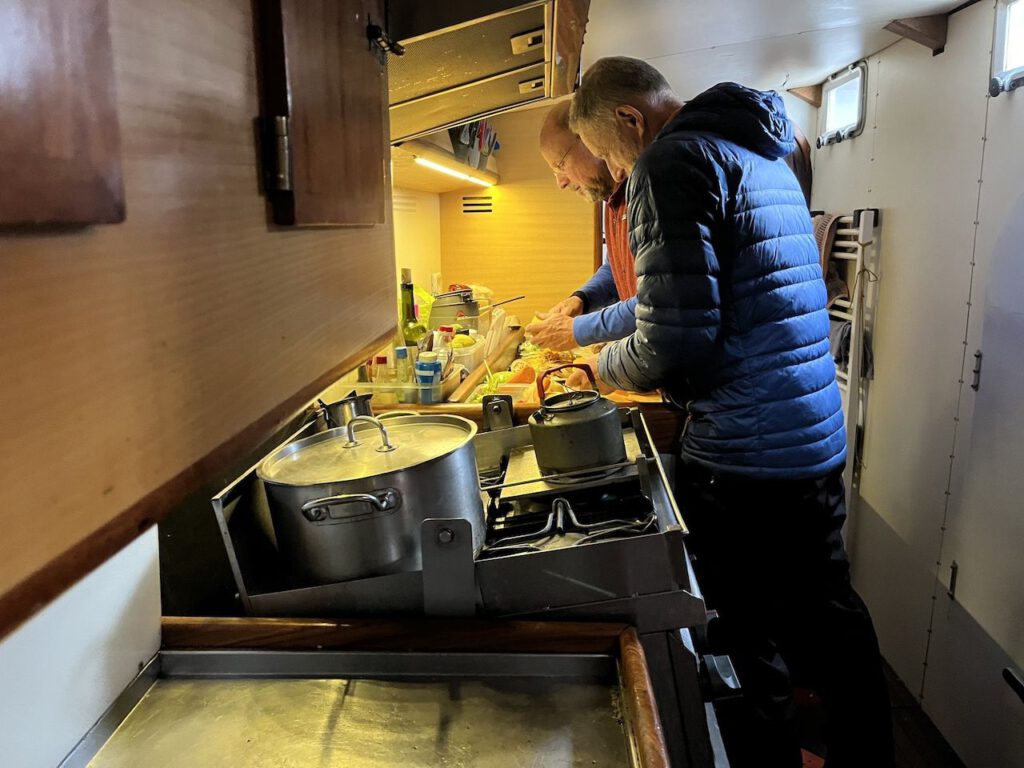
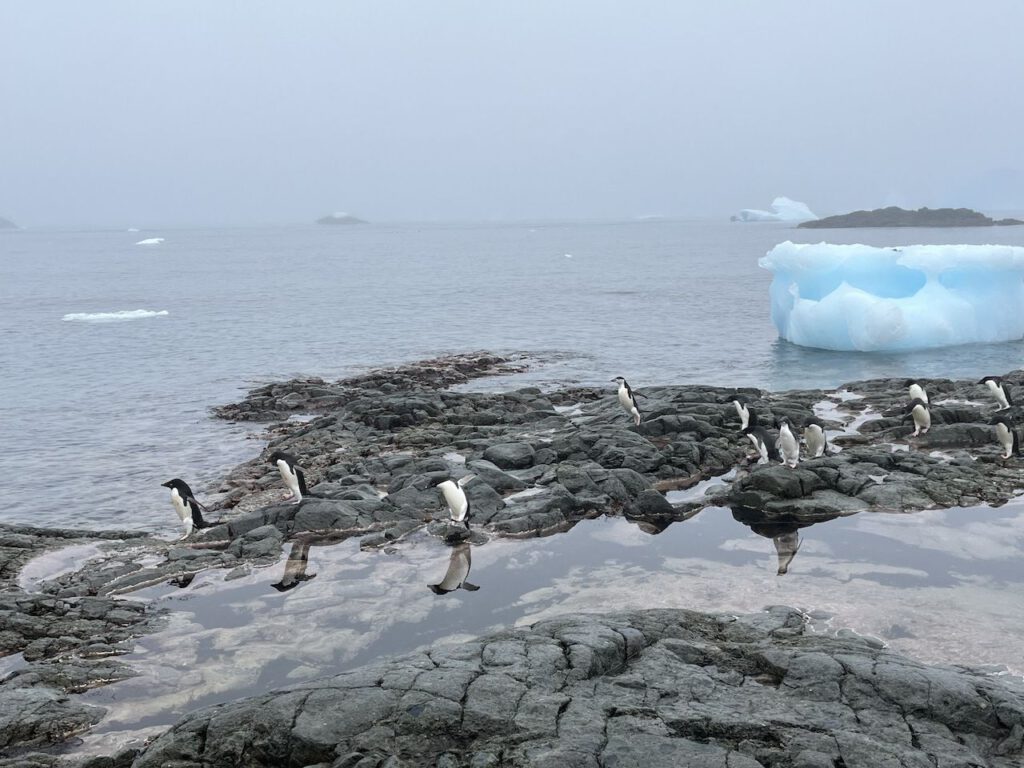
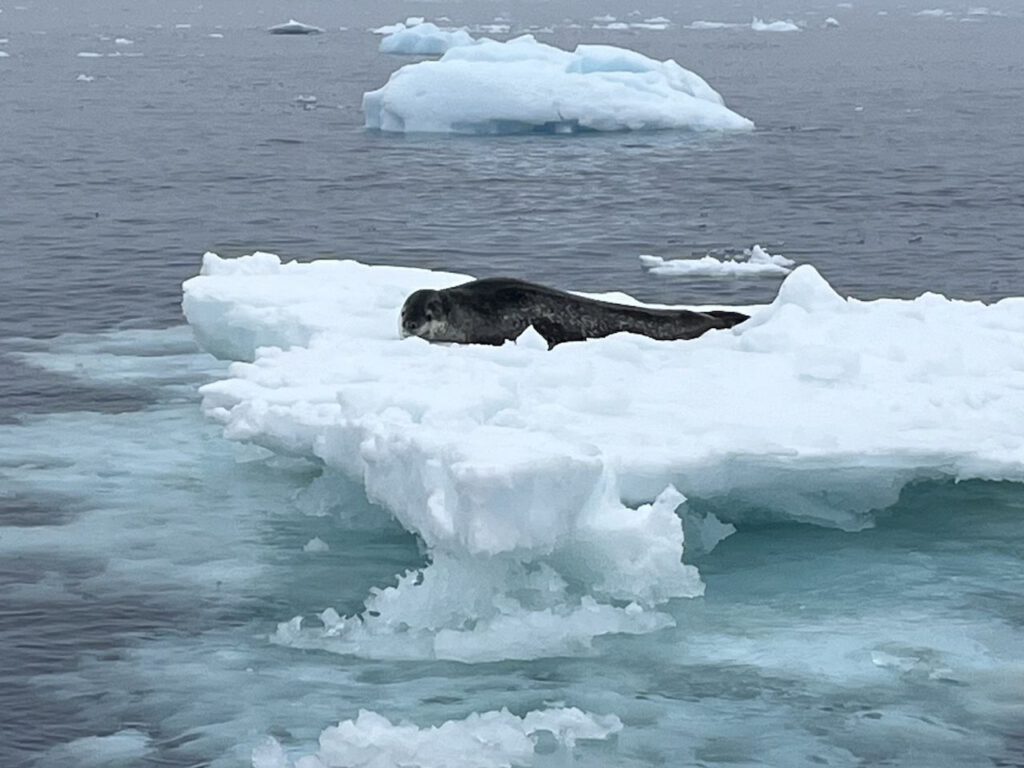

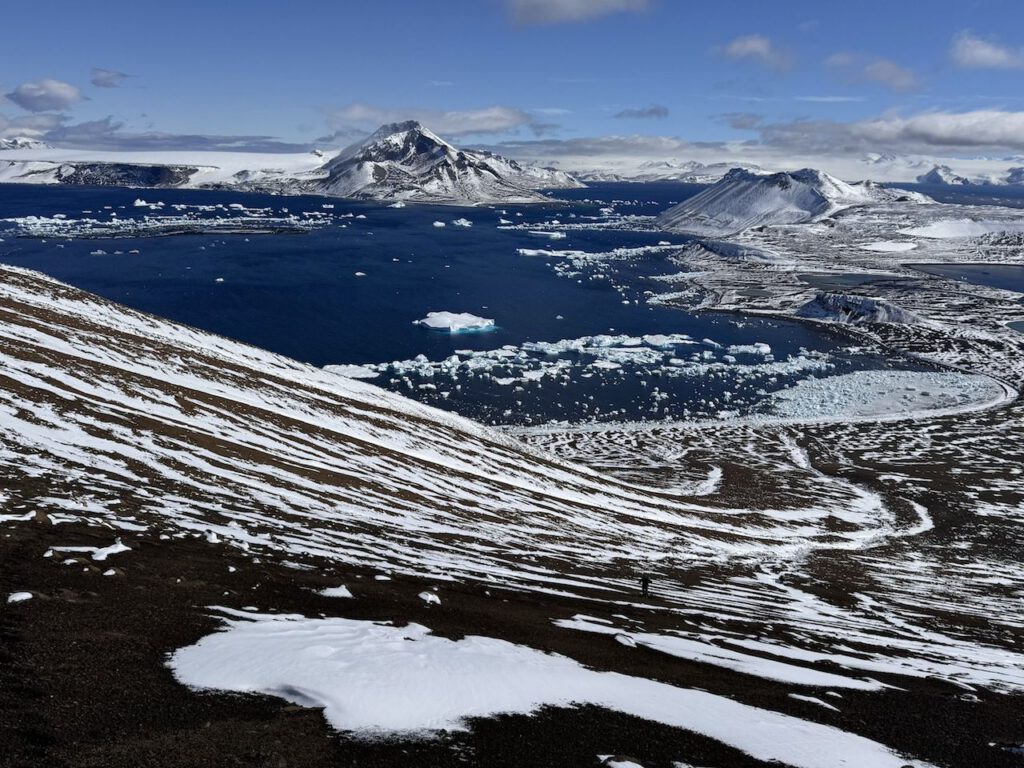

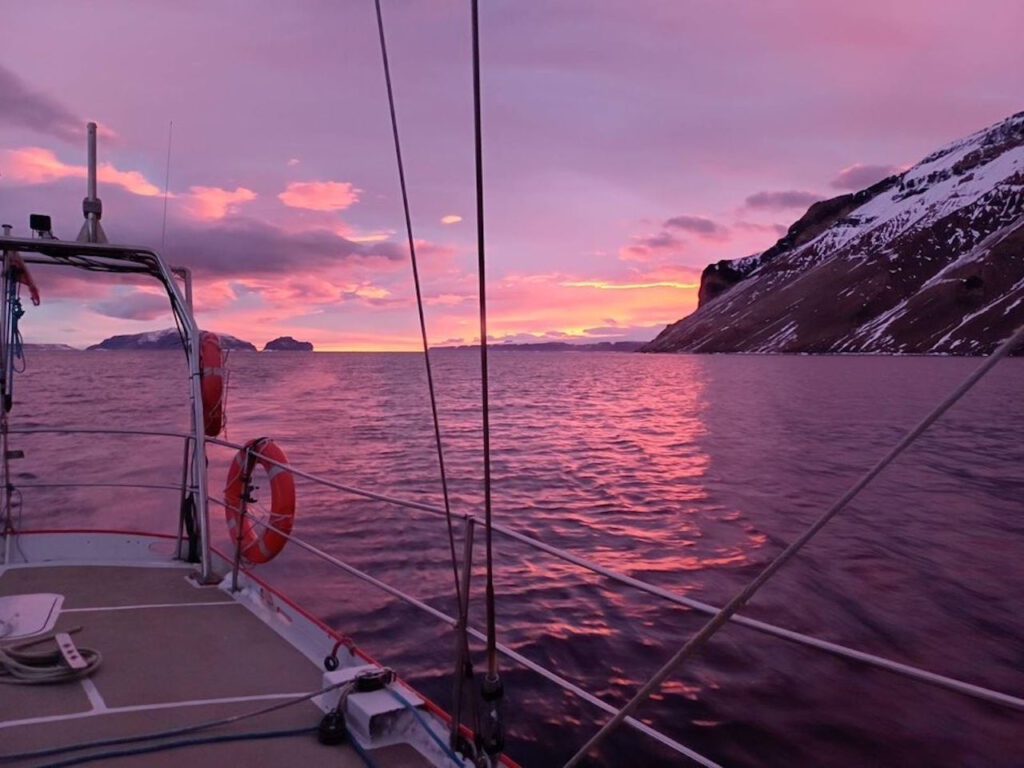
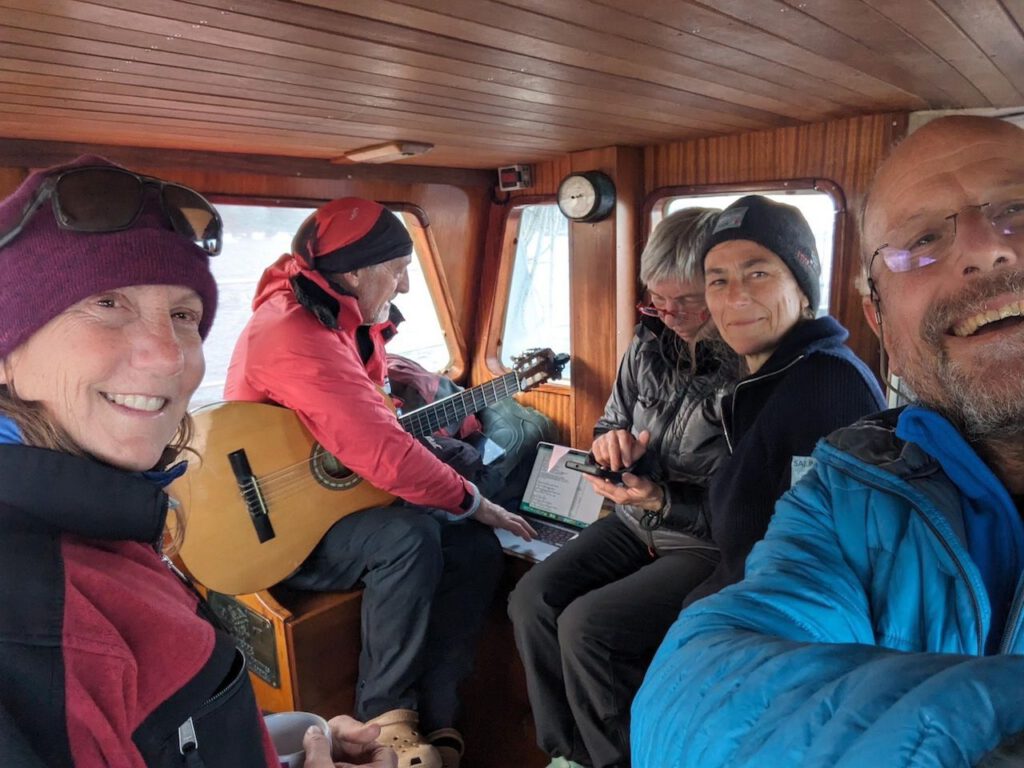
During the first few days underway, which demanded a lot of attention and energy during the wakes and sleep between them, especially in the Drake Passage, but also here in the meteorologically unstable and ice-heavy Weddell Sea, there was still a little lack of peace and quiet for relaxed and intimate conversations … but as we get used to it, we will have and find enough time for that too. Days like today are also perfect for this.
